Gabriel Figueroa: An Incredible Legacy of Mexican Cinema
Celebrated as one of Mexico best cinematographers, Gabriel Figueroa transformed cinema, vividly introducing Mexicos landscapes, faces, and stories to...
Jimena Aullet 2 December 2024
We love it when pop culture adopts, uses, and remixes art history, especially when that mixture includes a TV show! If you’re a BoJack Horseman fan and an art aficionado, you’re going to love this article.
For those of you who are not familiar with BoJack, the star of the hit 1990s TV show, Horsin’ Around, he’s a washed-up, half-human half-horse living in Hollywoo. He complains about everything and is always showing off his colorful sweaters. Now, 18 years after his show was canceled, BoJack wants to regain his dignity. With the aid of a human sidekick and a feline ex-girlfriend, he sets out to make it happen. The series fearlessly traverses the tumultuous, emotional journey of this half-human half-horse with results that can sometimes be heartbreaking and hilarious. BoJack’s journeys through life also contain occasional comedic references to sex, drugs, and alcohol.
Besides the crude humor and the monologue about BoJack’s life happenings, the Netflix comedy informs its viewers about classic and contemporary art. Check out our round-up of ALL of these artistic references from all six seasons for you!
Painter Henri Rousseau was ridiculed during much of his life for painting in a naïve or primitive manner. As Rousseau became more advanced in his craft, other artists (such as Pablo Picasso and Henri Matisse) considered Rousseau a self-taught genius. His best-known work depicts imaginary jungle scenes inspired by his visits to the zoo. The presence of tall, luscious plants and a flat, disk-shaped sun are elements found in many of his works.
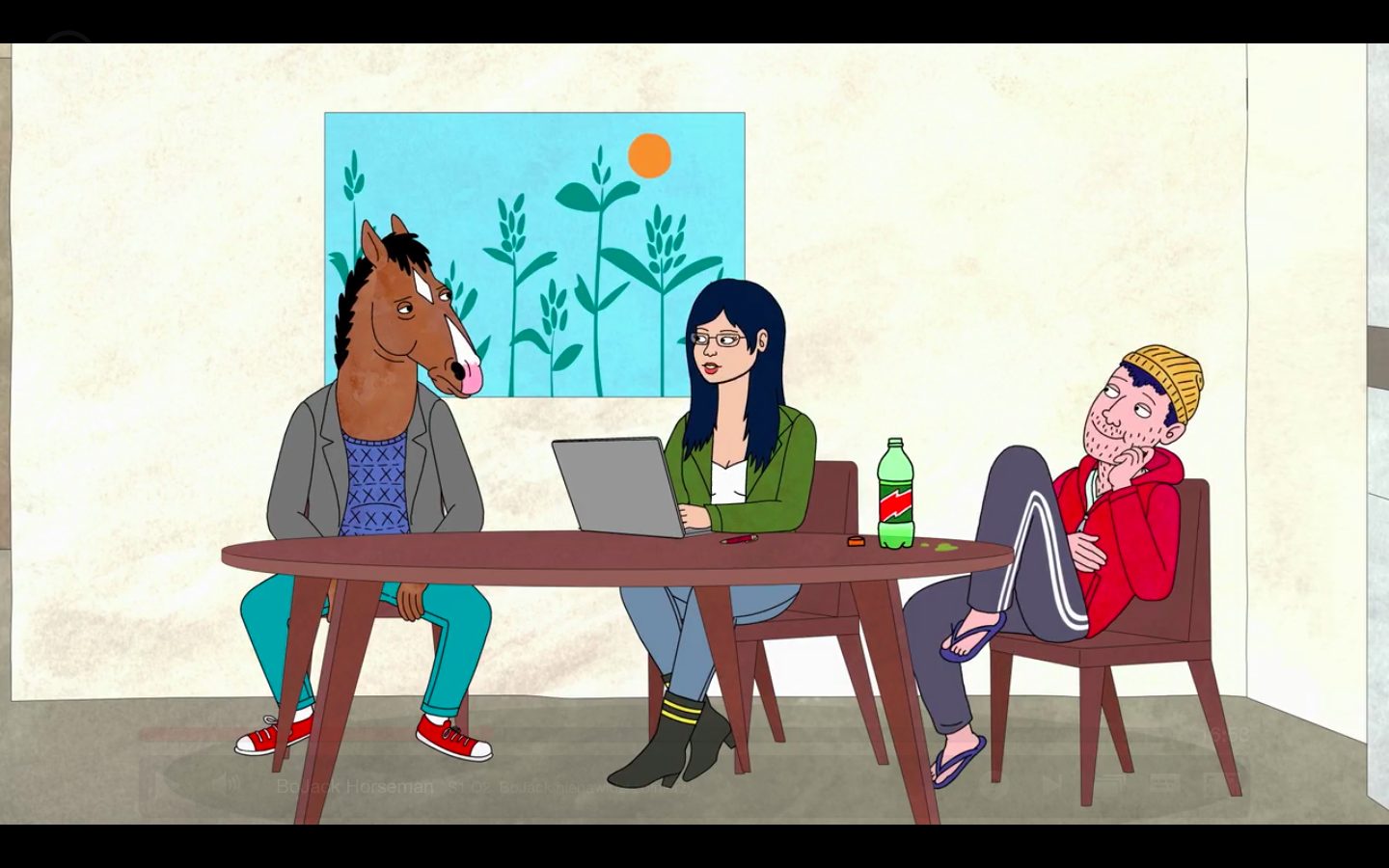
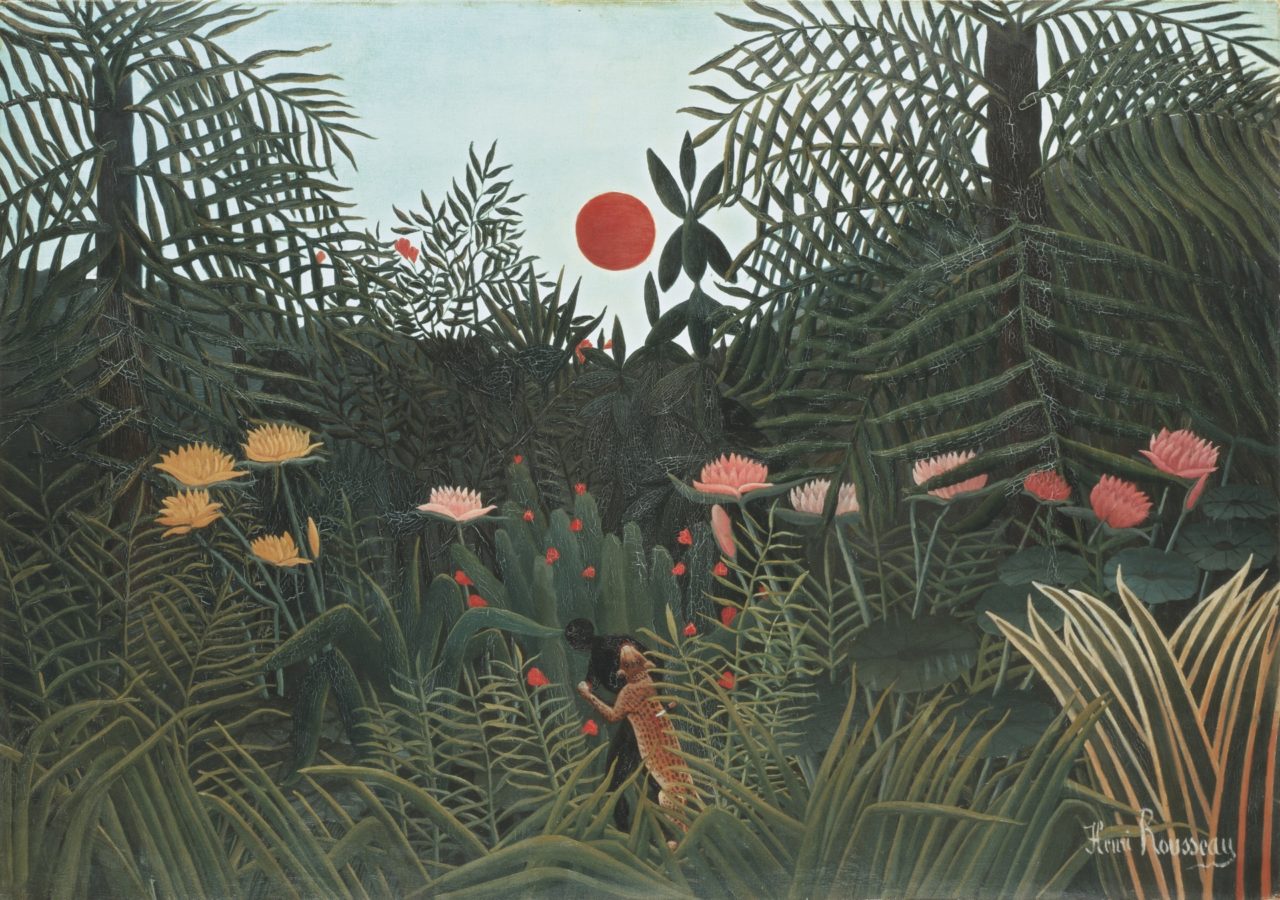


David Hockney‘s Portrait of an Artist, also known as Pool With Two Figures, is a painting that shares many commonalities with BoJack’s own story. Hockney moved from Great Britain to California in the 1960s and eventually lived in a house carved into a canyon. He is internationally acclaimed for his paintings of L.A. swimming pools. Hockney was said to have painted this composition while recovering from a long-term relationship break-up that left him feeling depressed and isolated from the rest of the world. The painting illustrates a story of loneliness and detachment, a perfect artistic representation of BoJack’s ongoing turmoil.
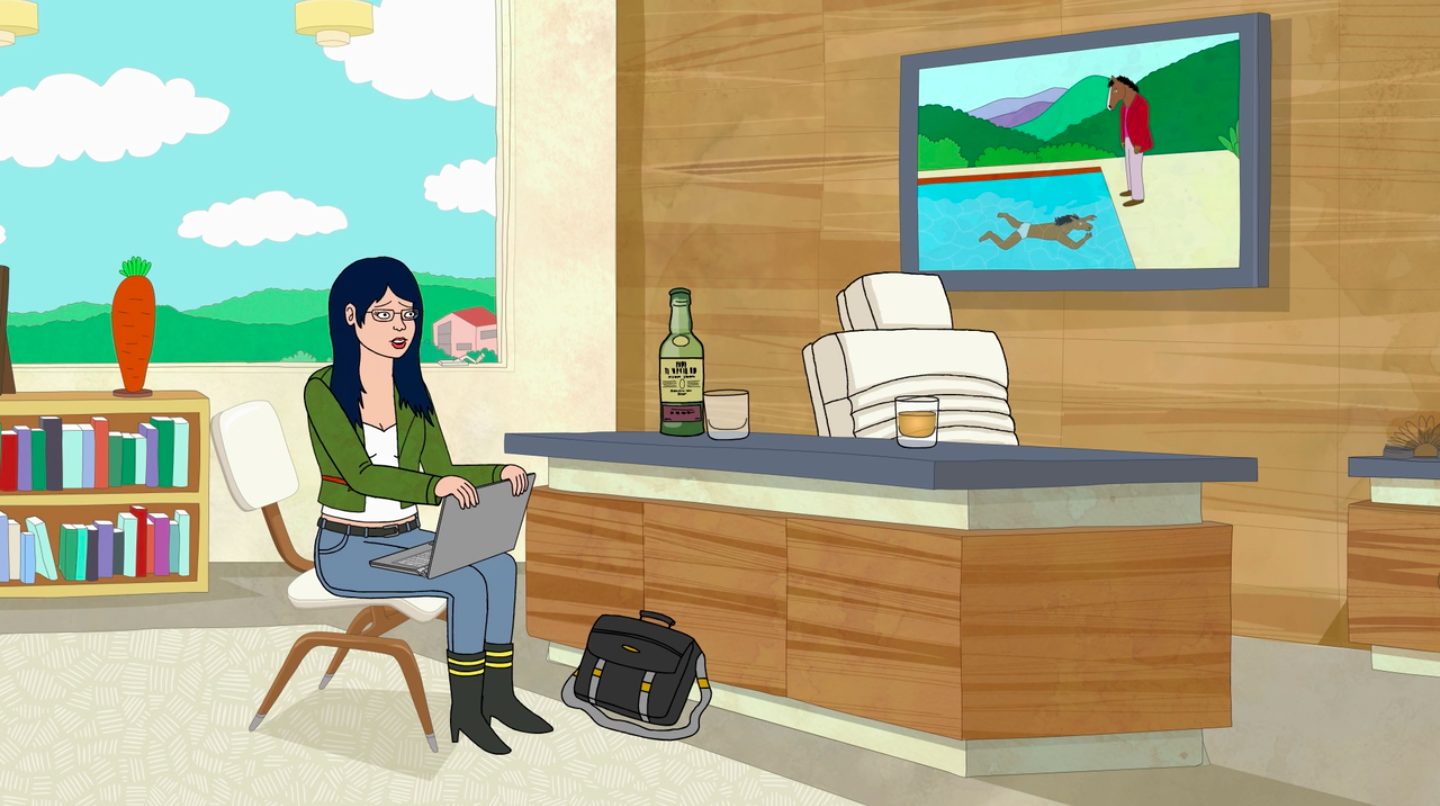







Henri Matisse‘s Dance depicts nude figures dancing freely in a circle. The story of the painting is quite extraordinary. A very wealthy Russian industrialist named Sergei Shchukin asked Matisse for three large-scale canvases to decorate the spiral staircase of his mansion, the Trubetskoy Palace in Moscow. As a result, Matisse created Dance. The composition has been described as forbidding, menacing, tribal, ritualistic, and even demonic. This playful, yet sexualized scene is the perfect work of art to decorate the space in which BoJack is known to throw lavish parties.
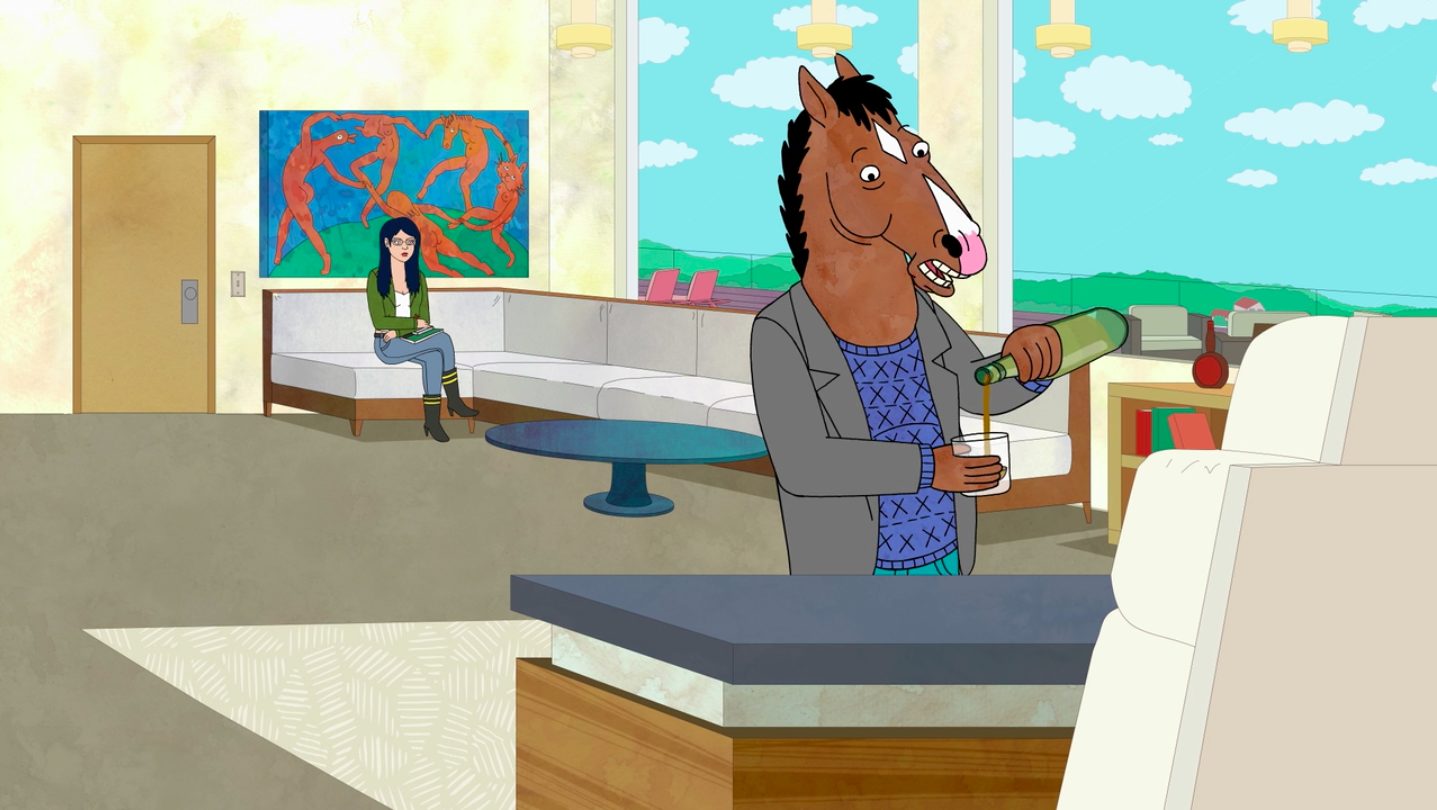
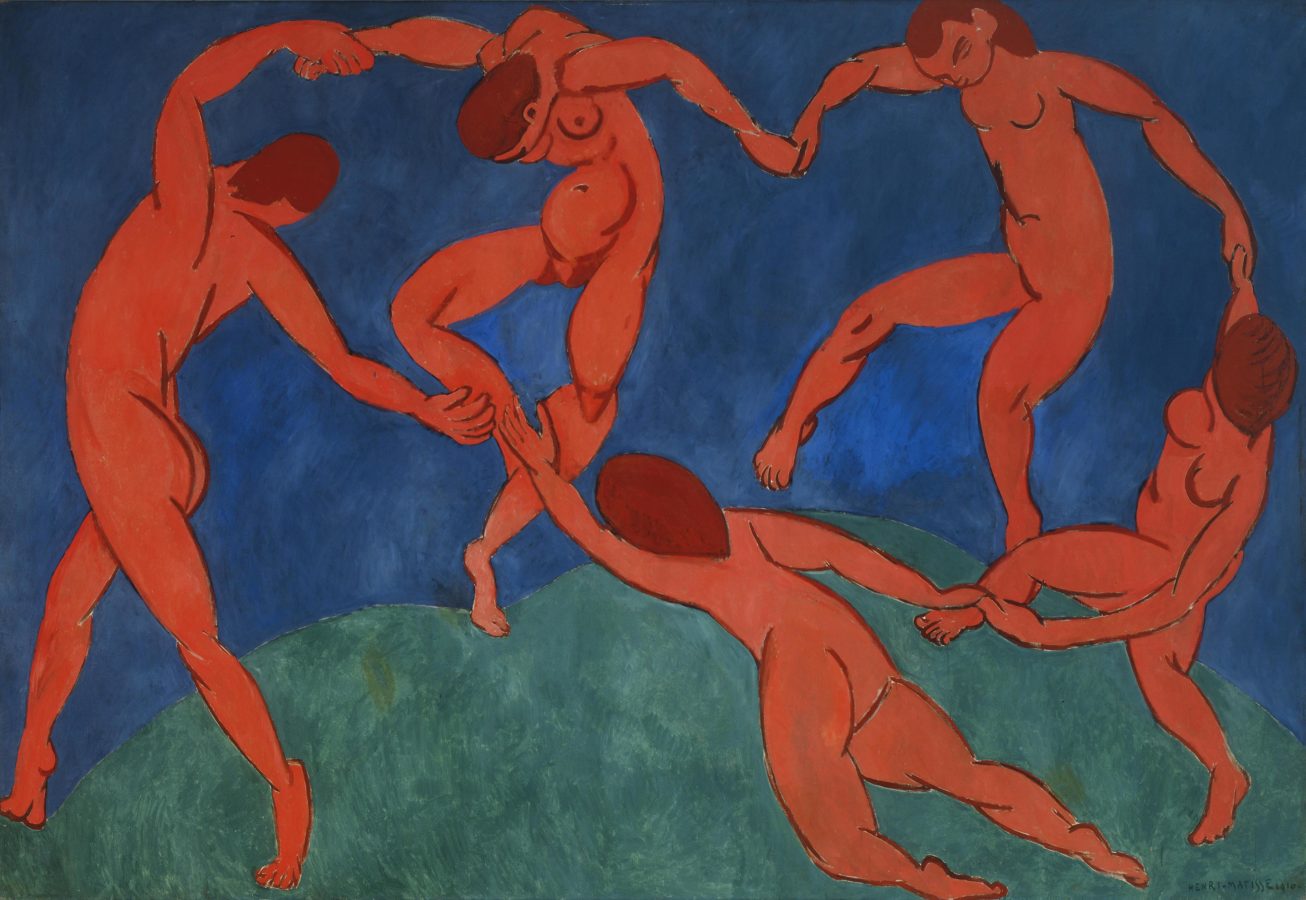
The Pop-Art-like paintings of horseshoes above BoJack’s bed clearly refer to the vibrant compositions of Andy Warhol. Warhol loved repetitions. He often repeated one image, changing its colors. It is worth noting that Warhol himself loved and satirized celebrities, Hollywood, glamour, and, of course, pop culture.
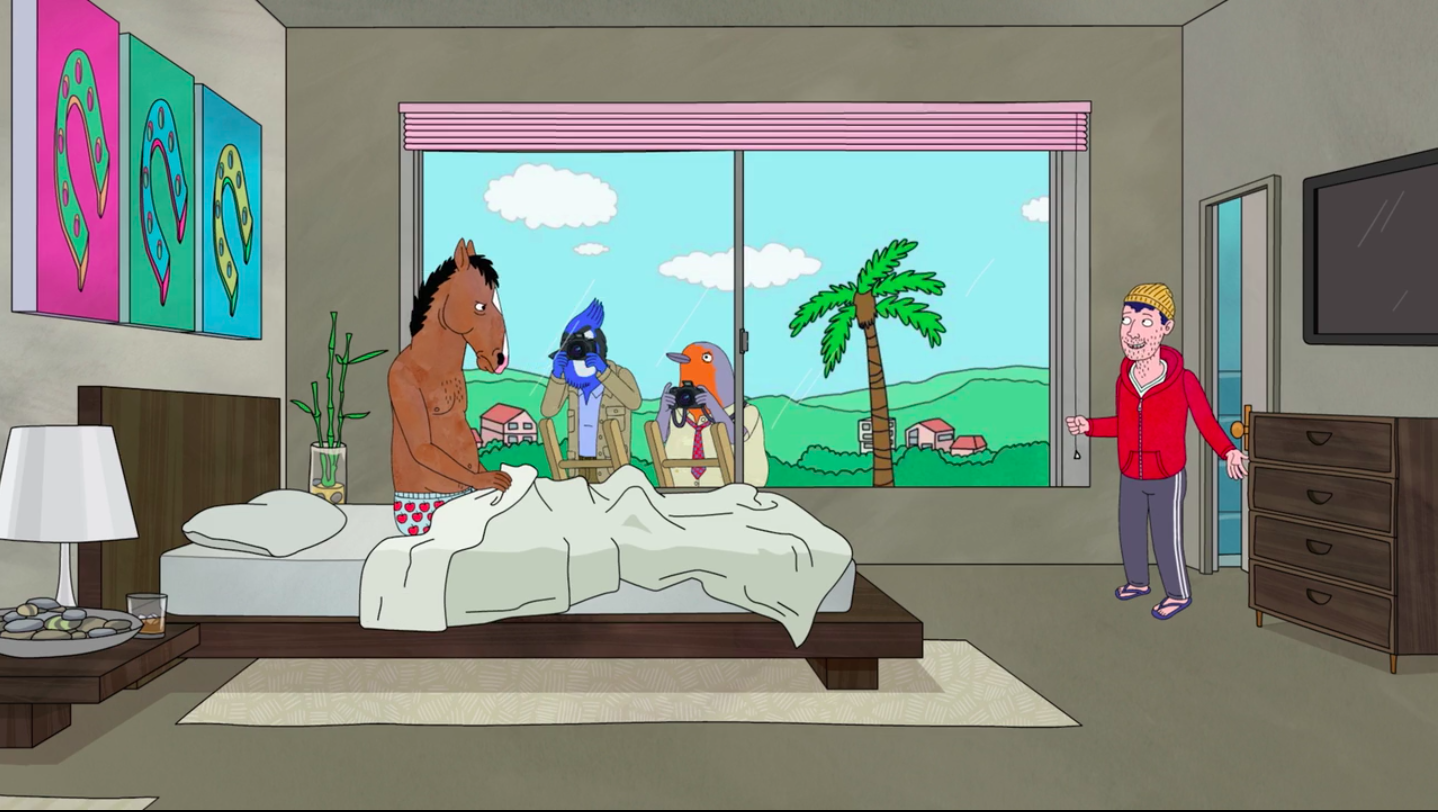



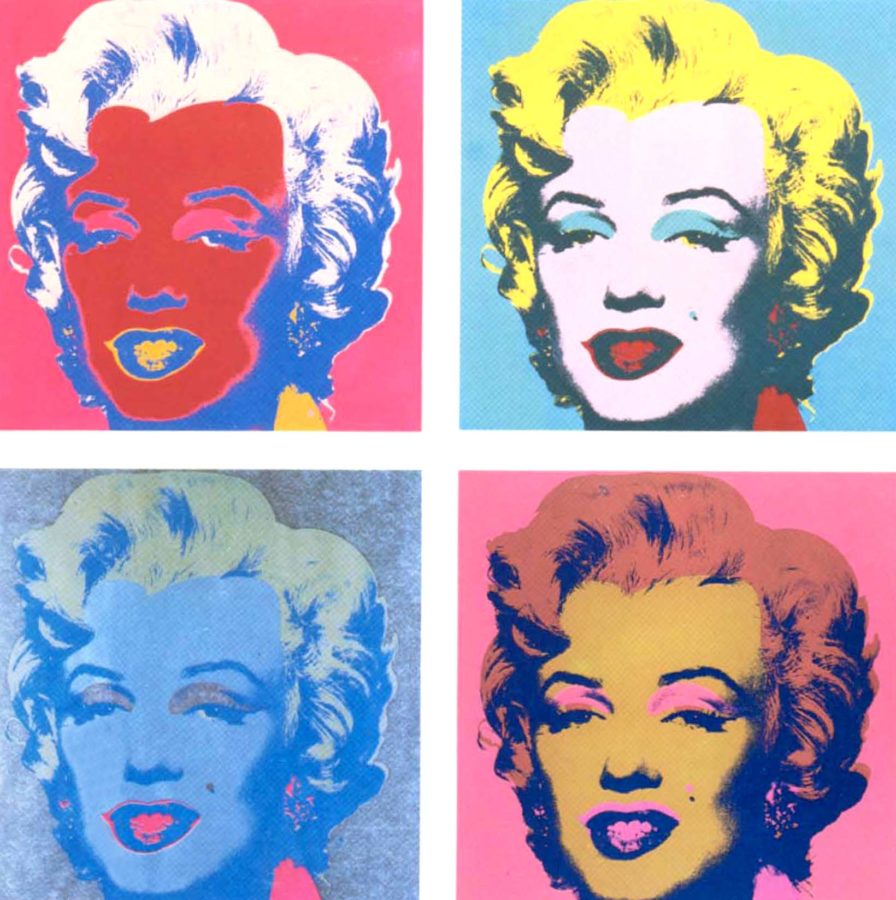



One of the pioneers of color field painting, Mark Rothko, employed abstract arrangements of shapes, ranging from surreal biomorphic ones in his early works to dark squares and rectangles in later years. They are intended to evoke the metaphysical through viewers’ communion with the canvas in a controlled setting. In the episode, Princess Caroline BoJack’s agent is trying to convince actor Wallace Shawn to play the role of BoJack Horseman in a movie called Mr. Peanutbutter’s Hollywoo Heist. The dialogue goes like this:
Princess Carolyn: I’m trying to help you out, Wally. You’re the one who keeps buying expensive Rothkos.
Wallace Shawn: I have a disease. Would you tell an alcoholic to stop buying alcohol?
Princess Carolyn: You know, Black and Blue Number 7’s going up for auction next week.
Wallace Shawn: Fine. I’ll do the dumb movie.
Rothko’s paintings often set auction records. For example, his No. 10 fetched $82.9 million at Christie’s in New York.
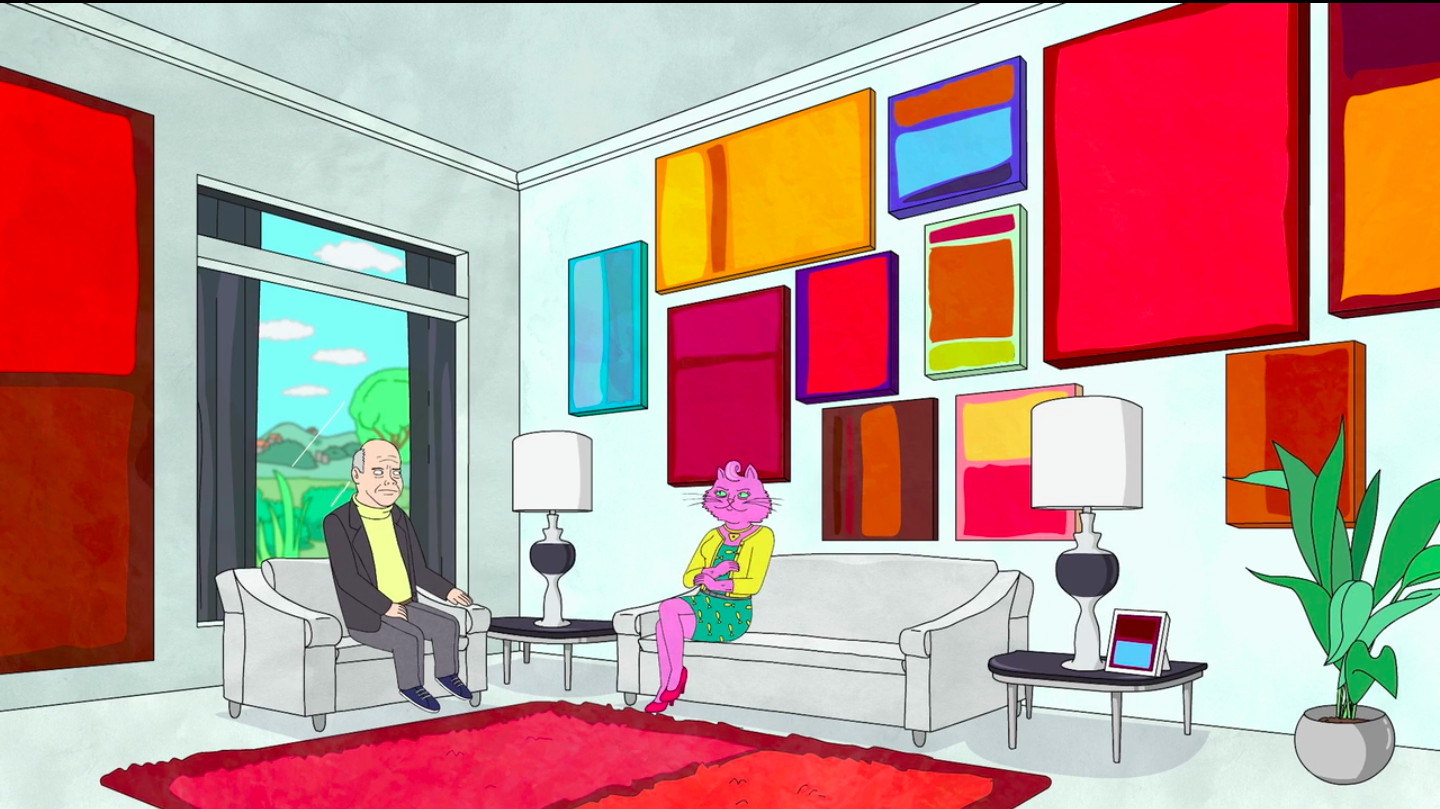
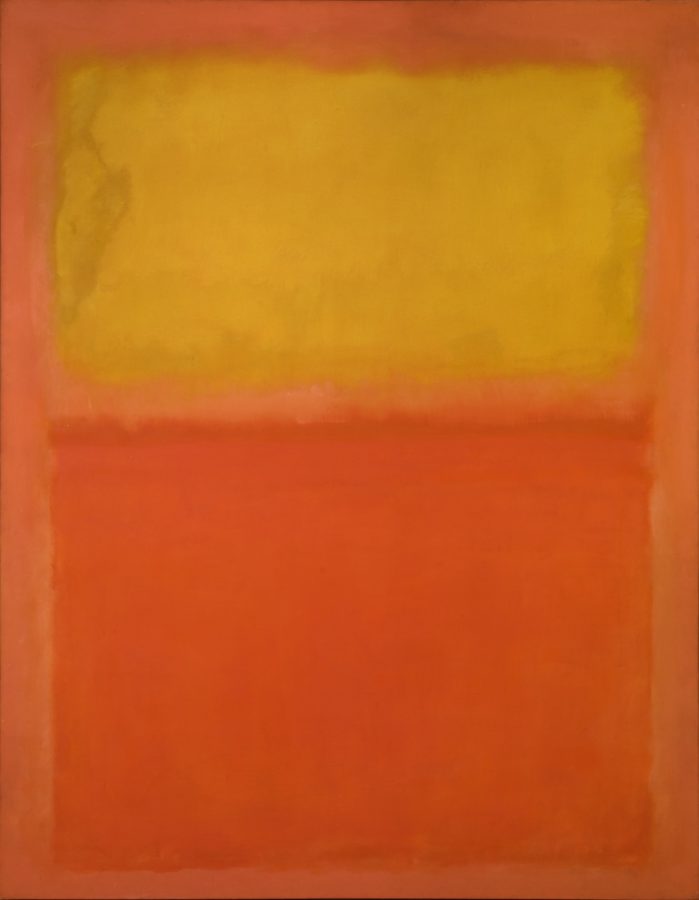



Keith Haring was an American artist whose pop art and graffiti-inspired work has its roots in the New York street culture of the 1980s. Haring’s work became iconic throughout the Big Apple because of his many drawings that decorated the subways. The drawings consisted of chalk outlines on blank, black advertising-space backgrounds. They featured images of radiant babies, flying saucers, and deified dogs. After much public praise, he started to create larger-scale works such as colorful murals. His later work often addressed political and social themes, especially homosexuality and AIDS, through his own unique iconography. Keith Haring’s paintings are displayed on BoJack’s apartment wall when BoJack finds out his best friend Herb Kazzaz is gay.
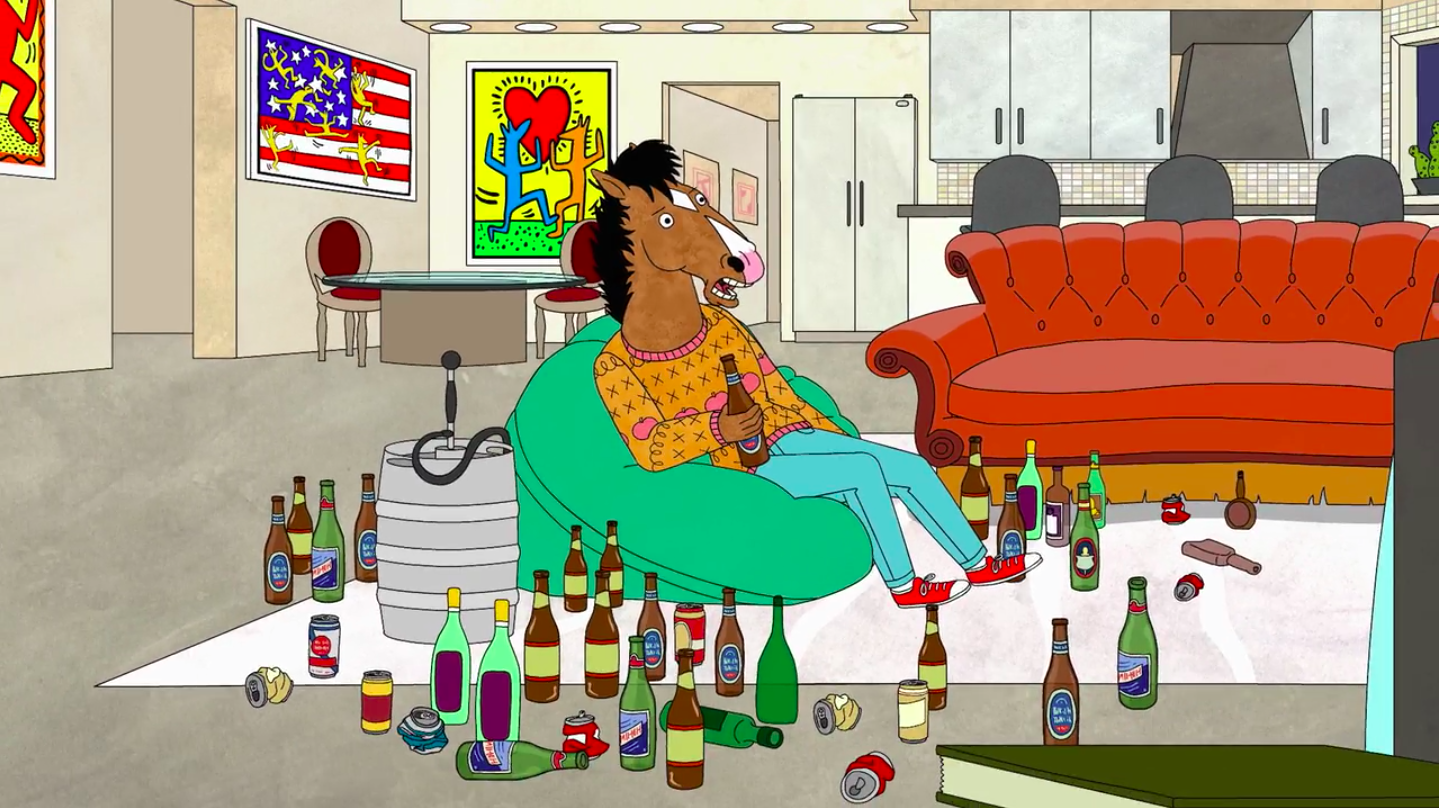
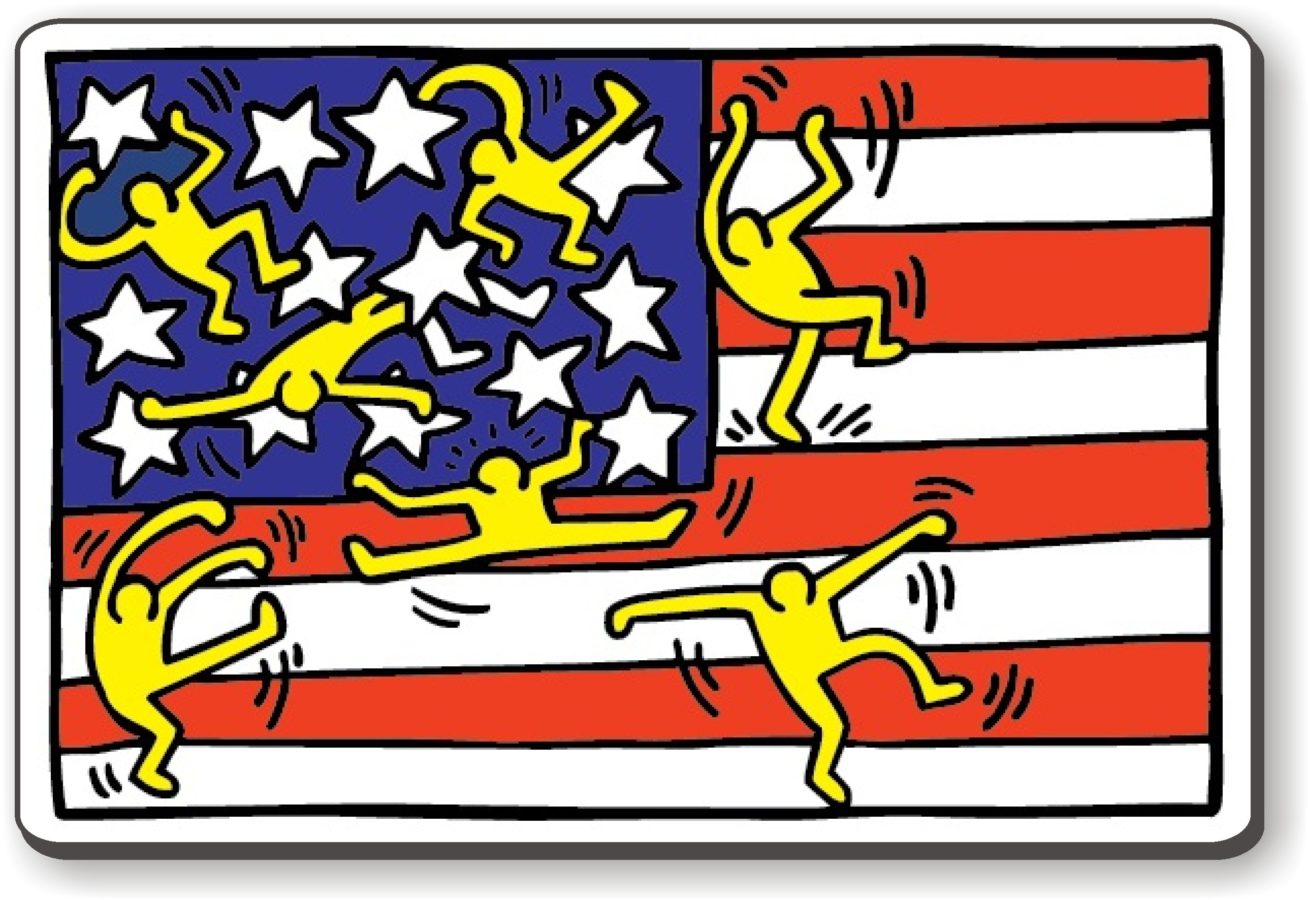
We don’t have to introduce Paul Cezanne and his still lifes. BoJack’s frenemy Mr. Peanutbutter owns “his” masterpiece of famous apples with some add-ons of things that dogs love the most: a newspaper and slippers.
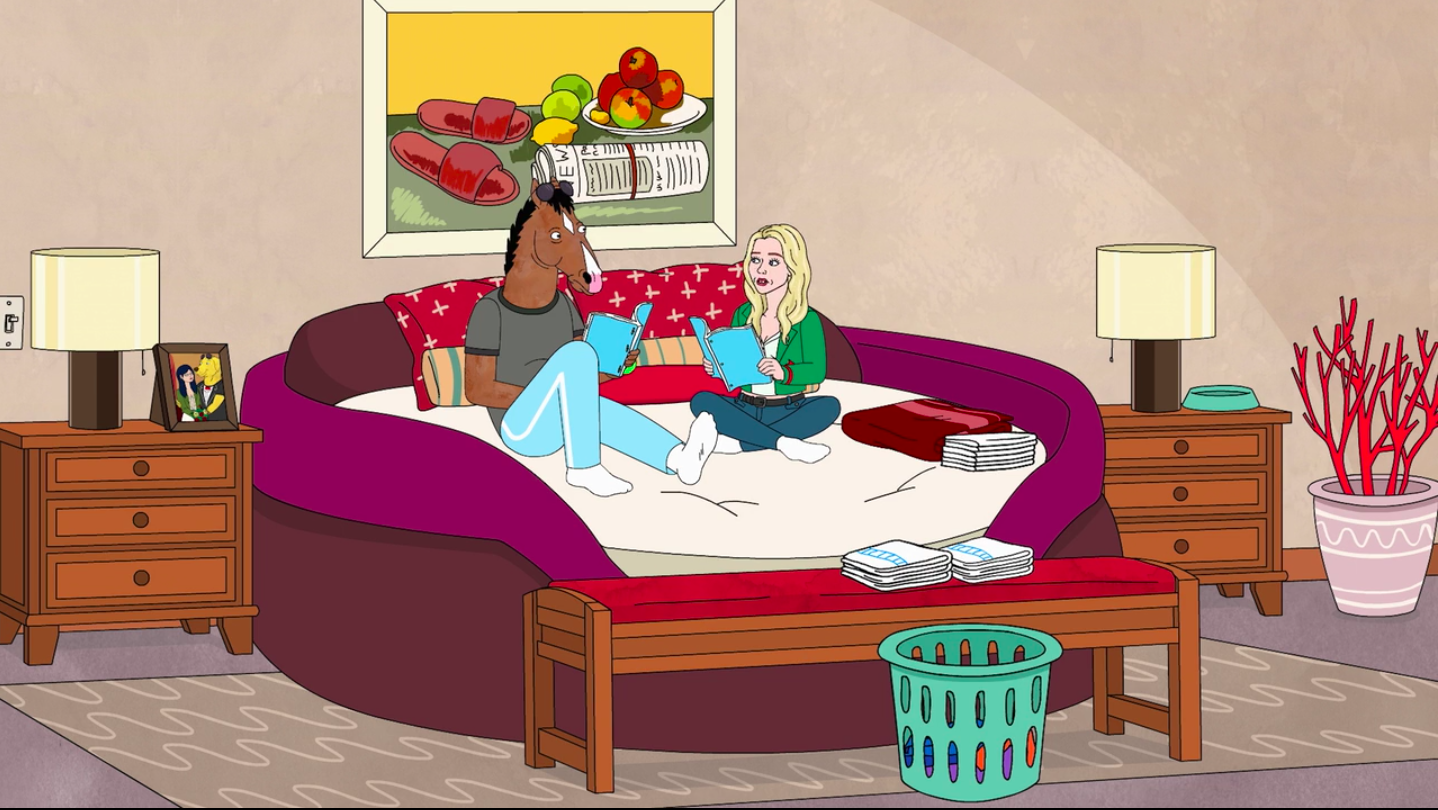
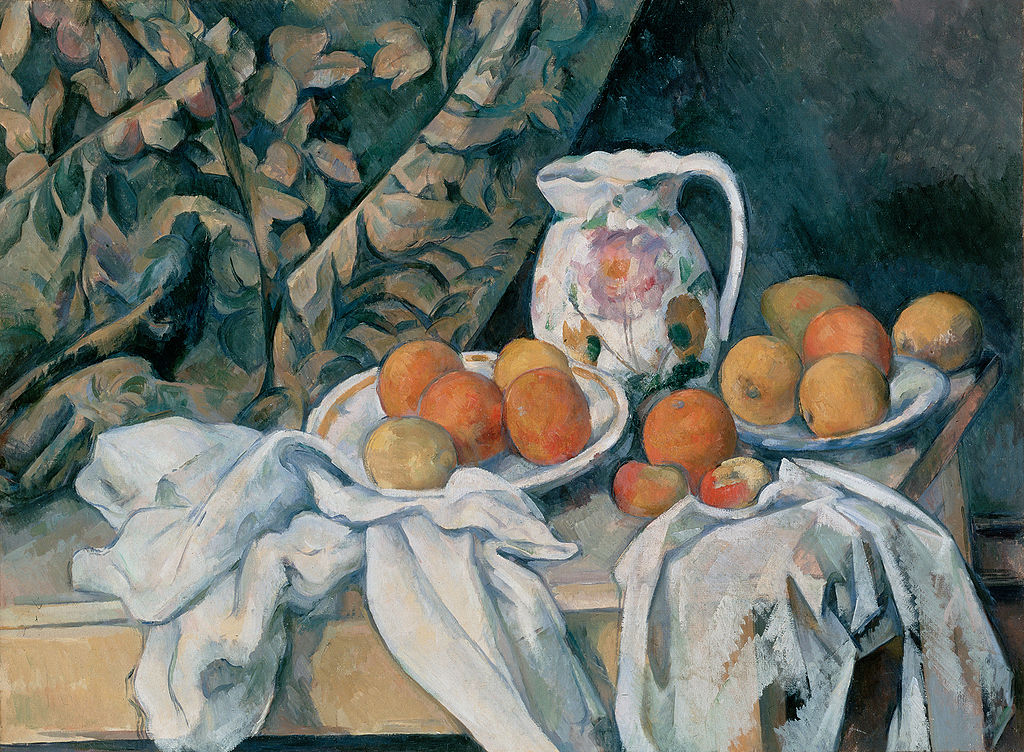
Franz Marc loved painting horses. He is most famous for his images of brightly-colored animals, which he used to convey profound messages about humanity, the natural world, and the fate of mankind. In association with the Russian painter and theorist, Wassily Kandinsky, Marc founded the group Der Blaue Reiter which emphasized the use of abstract forms and bold colors, which were regarded as symbolic tools to overcome what they saw as the toxic state of the modern world. As World War I approached, the tension of Marc’s paintings came into sharp focus, almost as if he foresaw both his own fate and that of Europe as a whole.
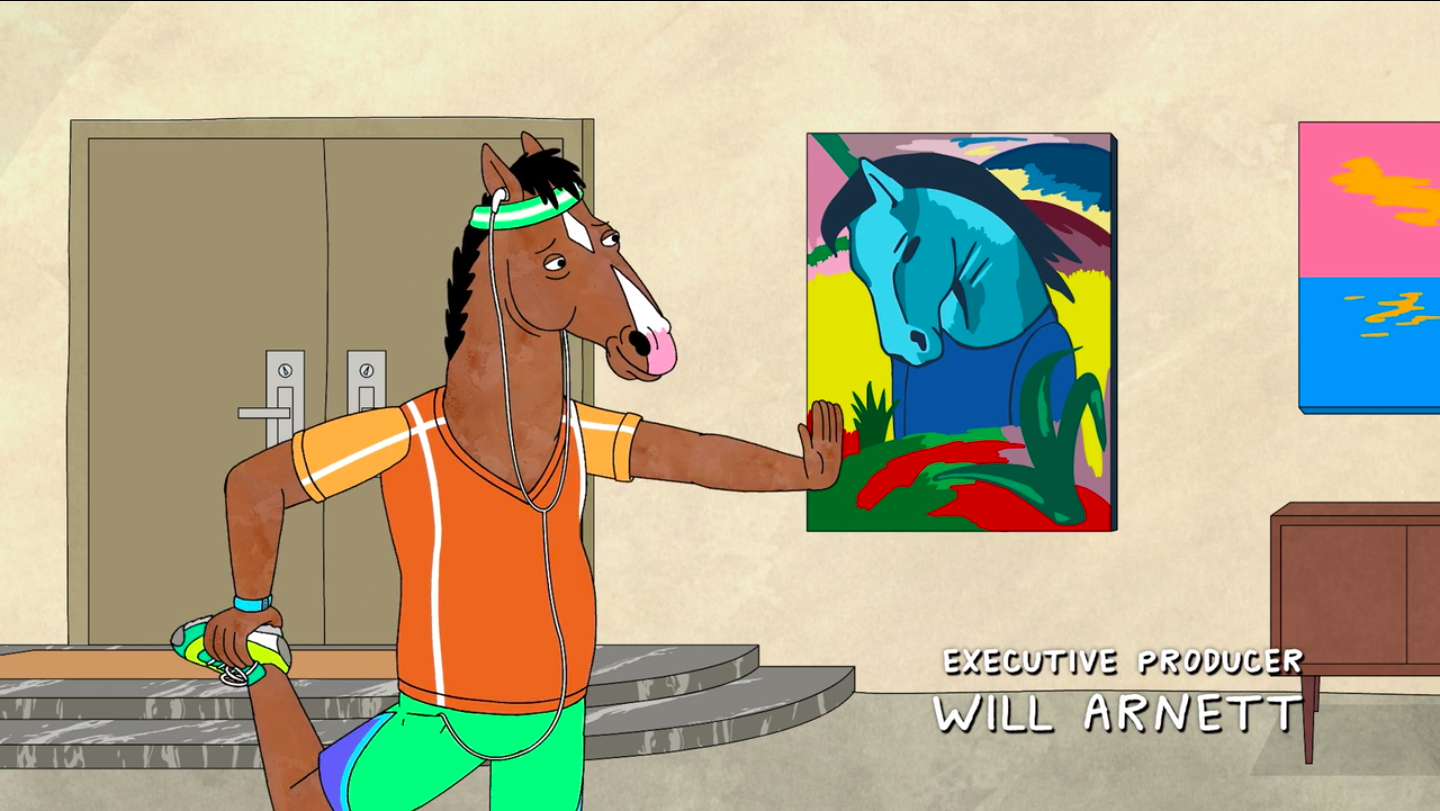
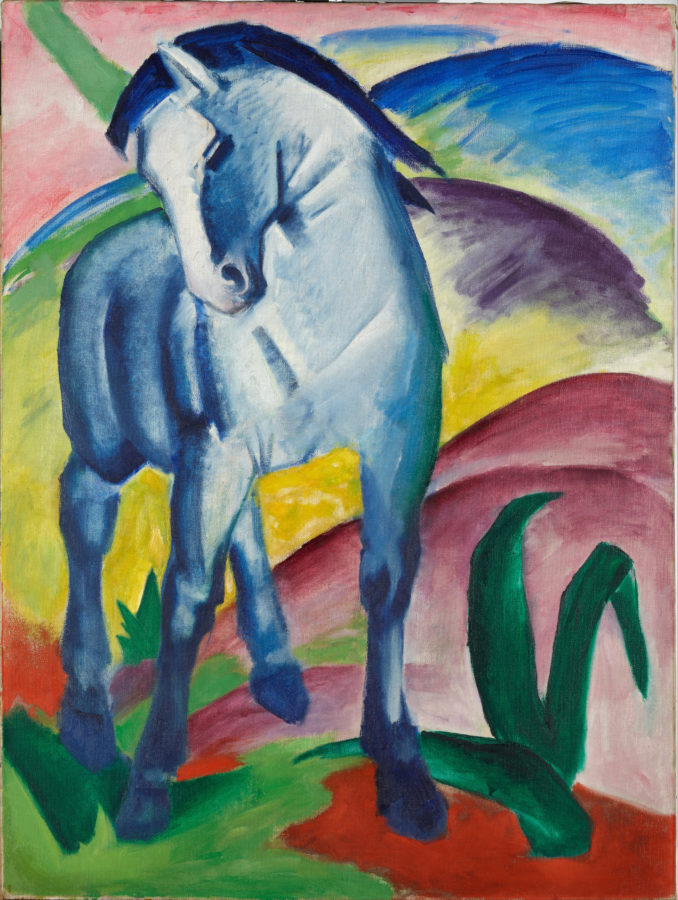
Jean-Michel Basquiat was an American artist. Basquiat first achieved fame as part of SAMO, an informal graffiti duo who wrote enigmatic epigrams in the cultural hotbed of the Lower East Side of Manhattan during the late 1970s when the hip-hop, punk, and street art movements had coalesced. Basquiat’s art focused on “suggestive dichotomies” such as wealth versus poverty, integration versus segregation, and inner versus outer experience. He appropriated poetry, drawing, and painting, and married text and image, abstraction, figuration, and historical information mixed with contemporary critique.
Basquiat used social commentary in his paintings as a “springboard to deeper truths about the individual”, as well as an attack on power structures and systematic racism. Meanwhile, his poetics were acutely political and direct in their criticism of colonialism and support for class struggle. He died of a heroin overdose at his art studio at age 27.
You can see the works of Jean-Michel Basquiat in BoJack’s friend Herb Kazzaz’s office. Haring (see no. 6) and Basquiat were two of the most prominent artists in the 1980s, but they also were close friends, like BoJack and Herb.
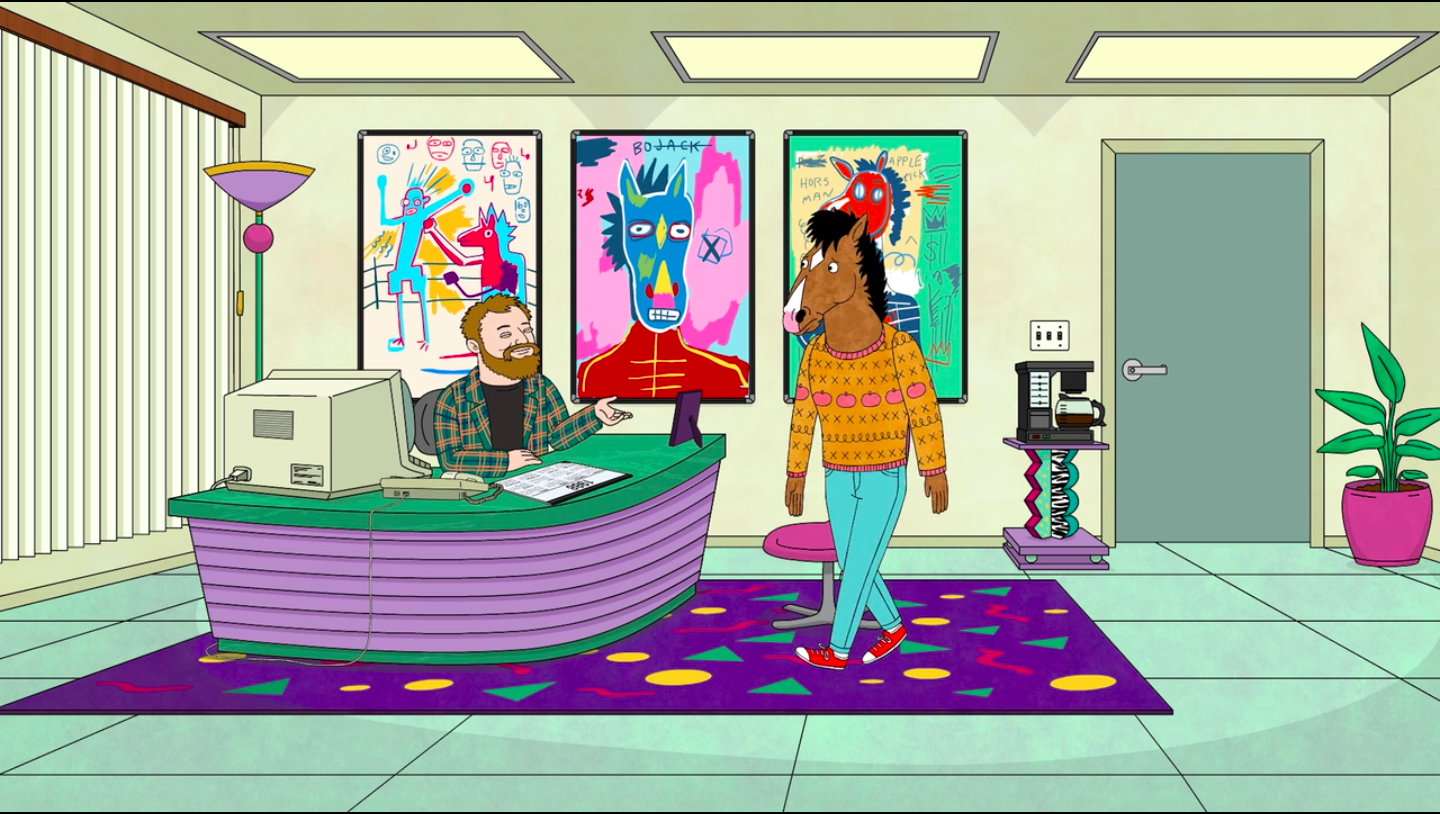
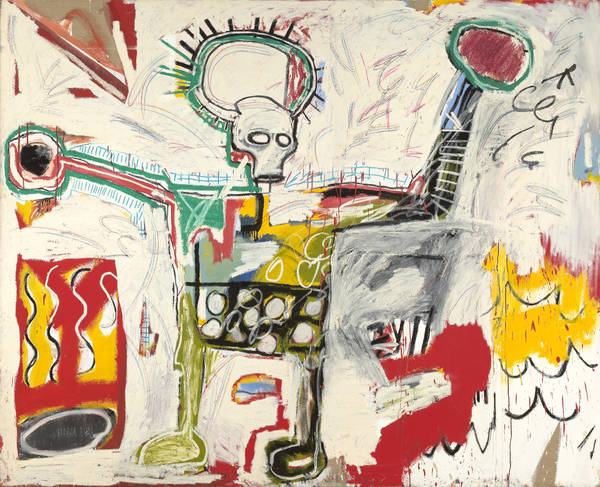
Water Lilies is a series of approximately 250 oil paintings by the French Impressionist Claude Monet. The paintings depict his flower garden at his home in Giverny and were the main focus of his artistic production during the last 30 years of his life. Many of the works were painted while Monet suffered from cataracts.
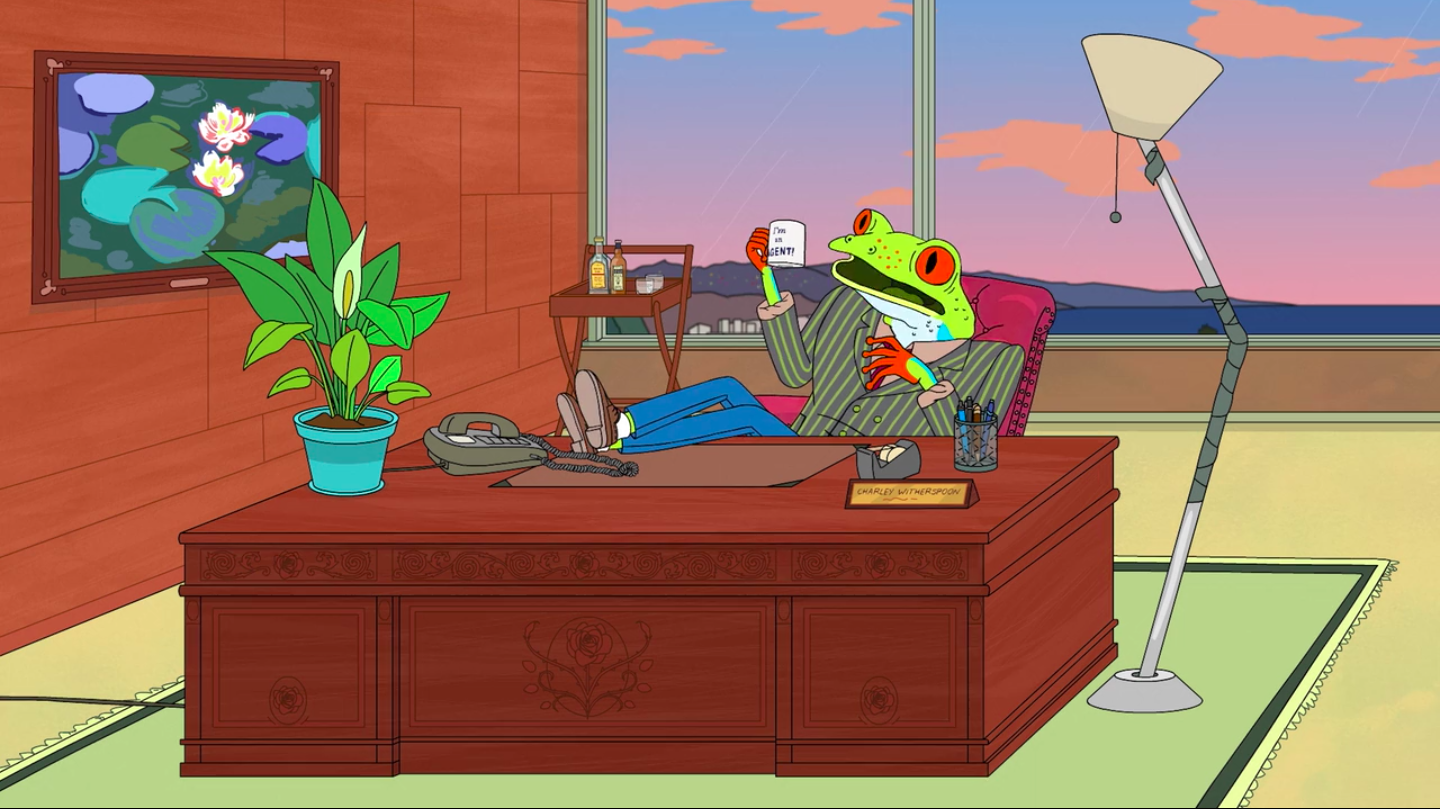
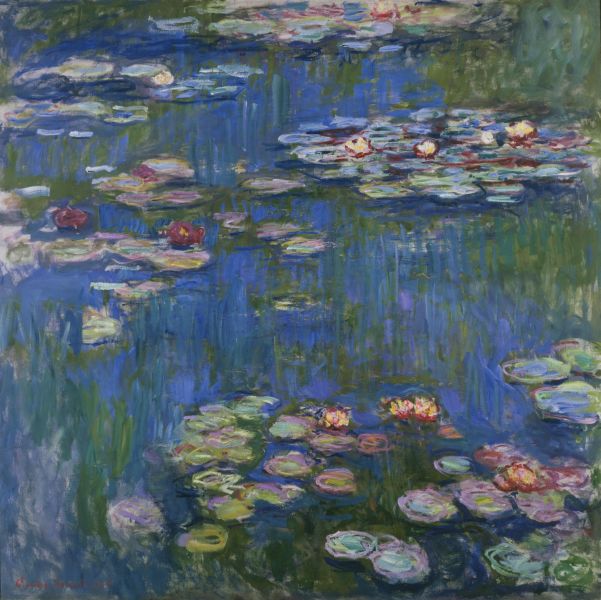
Dogs Playing Poker by Cassius Marcellus Coolidge refers simultaneously to an 1894 painting, a 1903 series of 16 oil paintings commissioned by Brown & Bigelow to advertise cigars, and a 1910 painting. All 18 paintings in the overall series feature anthropomorphized dogs, but the 11 in which dogs are seated around a card table have become well known in the United States as examples of kitsch art in home decoration. Here, poker has been replaced by the less “hardcore” game-connect four.
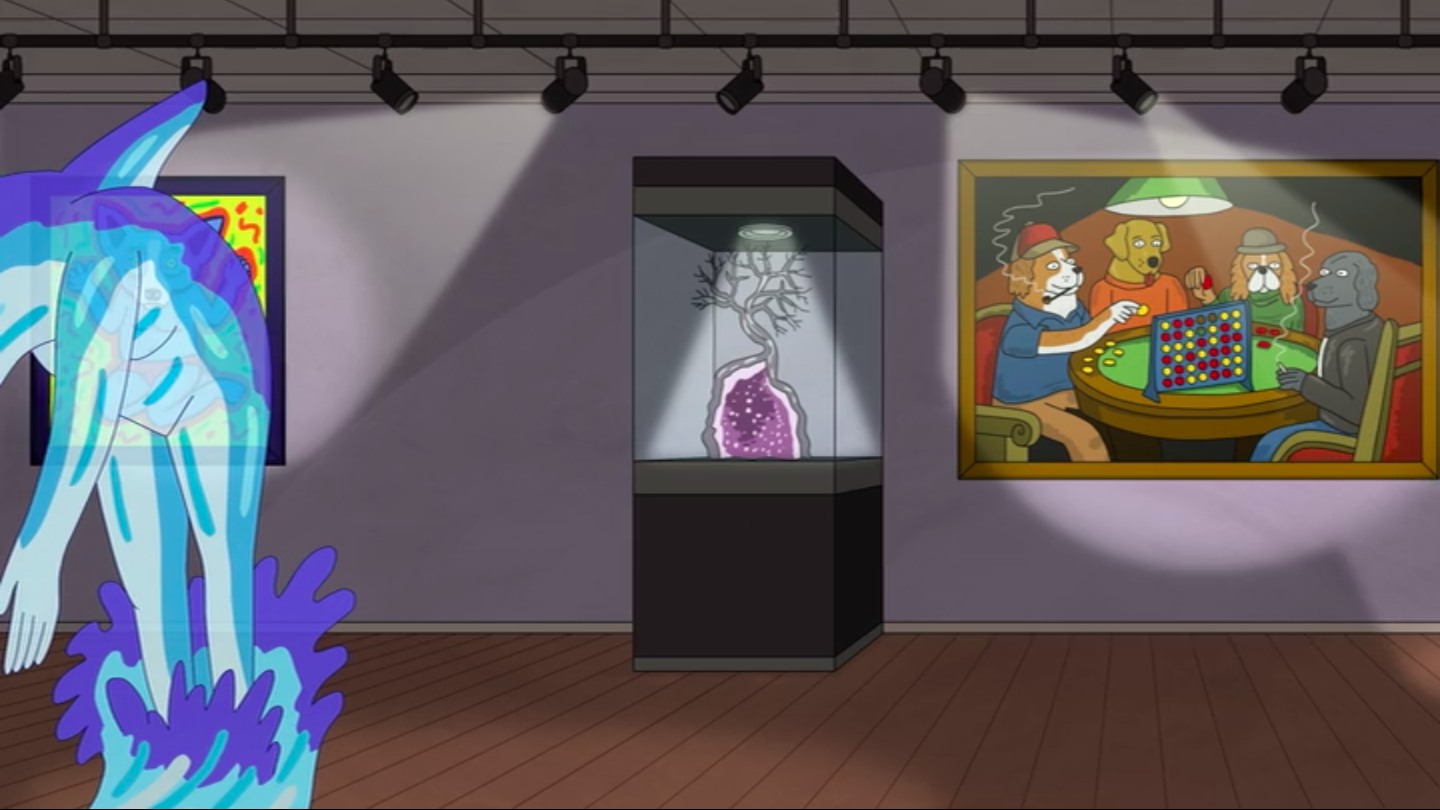
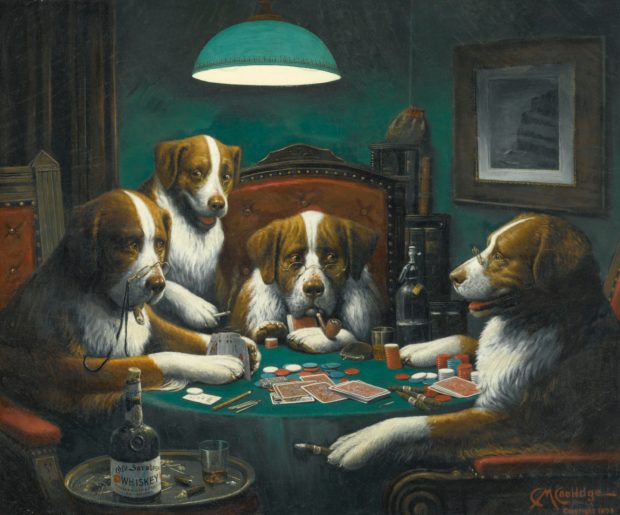
This is the perfect painting for the Oval Office. Leutze’s depiction of Washington‘s attack on the Hessians at Trenton on December 25, 1776, was a great success. What is interesting is that the original was part of the collection at the Kunsthalle in Bremen, Germany, and was destroyed in a bombing raid in 1942 during World War II. Leutze painted two more versions, one of which is now in the Metropolitan Museum of Art in New York City. The other was in the West Wing reception area of the White House in Washington, D.C., but since March 2015 it has been on display at The Minnesota Marine Art Museum in Winona, Minnesota.
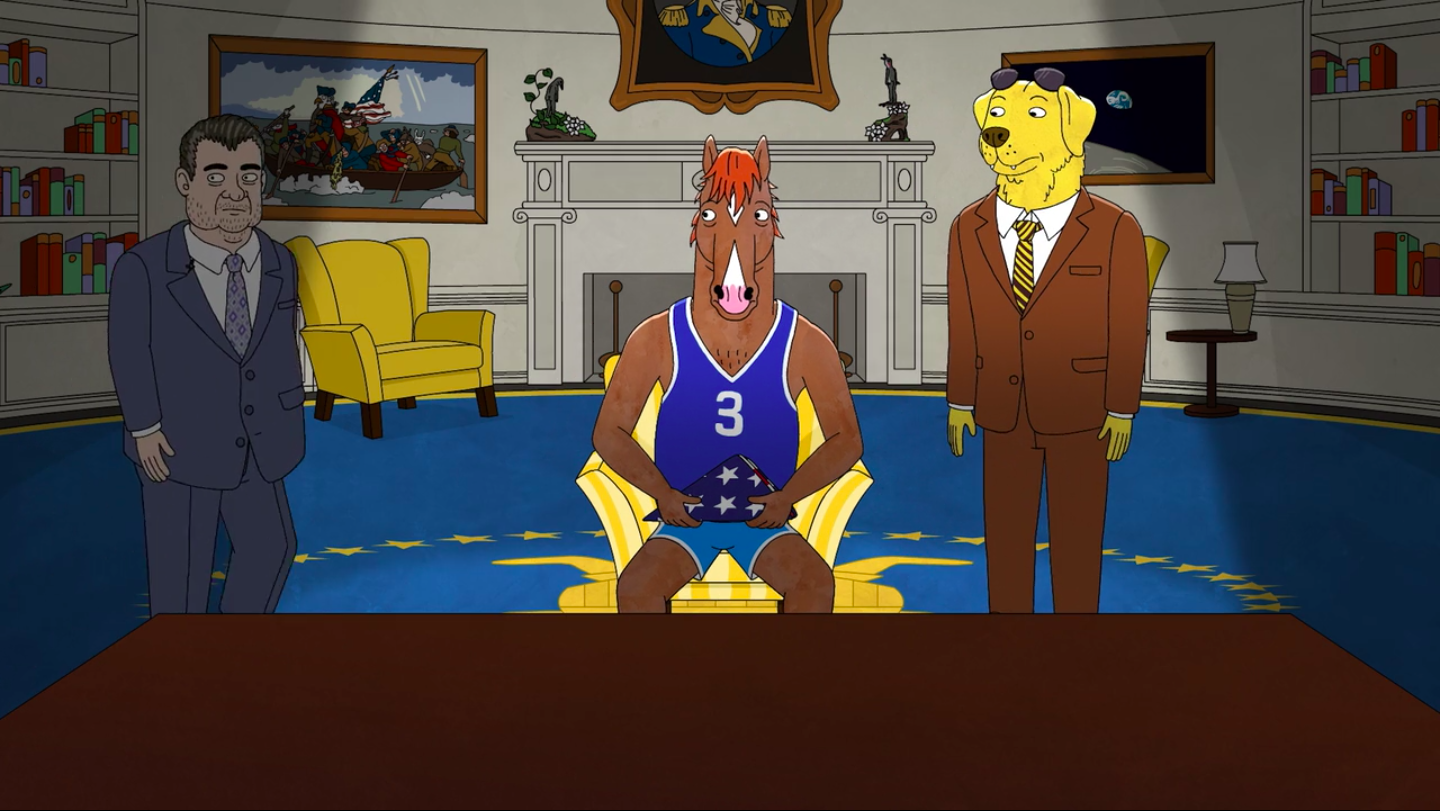
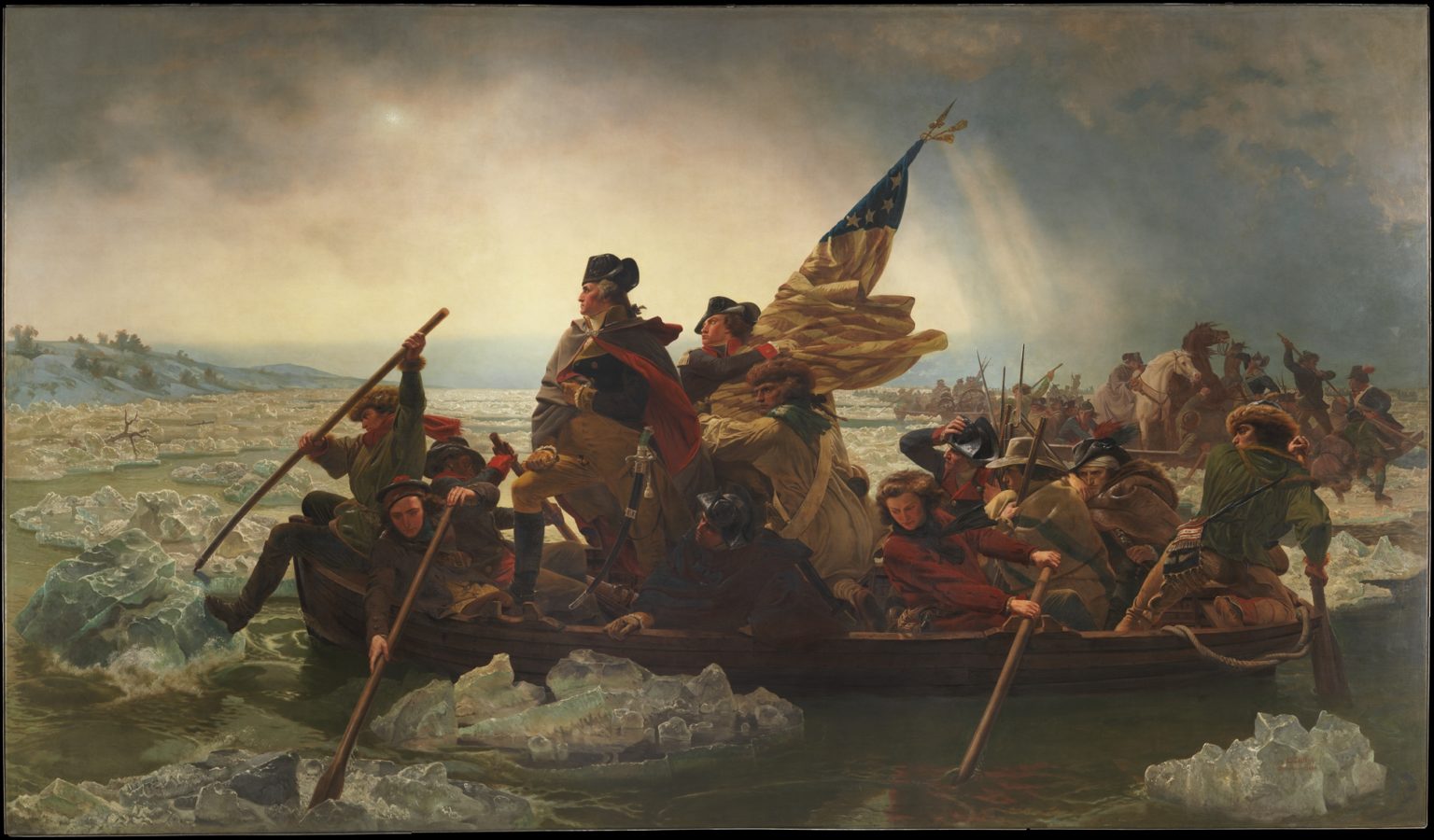



Olympia shows a nude woman lying on a bed, being brought flowers by a servant. Olympia was modeled on Victorine Meurent and Olympia’s servant on the art model Laure. Her confrontational gaze caused shock and astonishment when the painting was first exhibited, especially because a number of details in the picture identified her as a prostitute. Also, take a look at the cat in the right corner – in the show, it’s anthropomorphized.
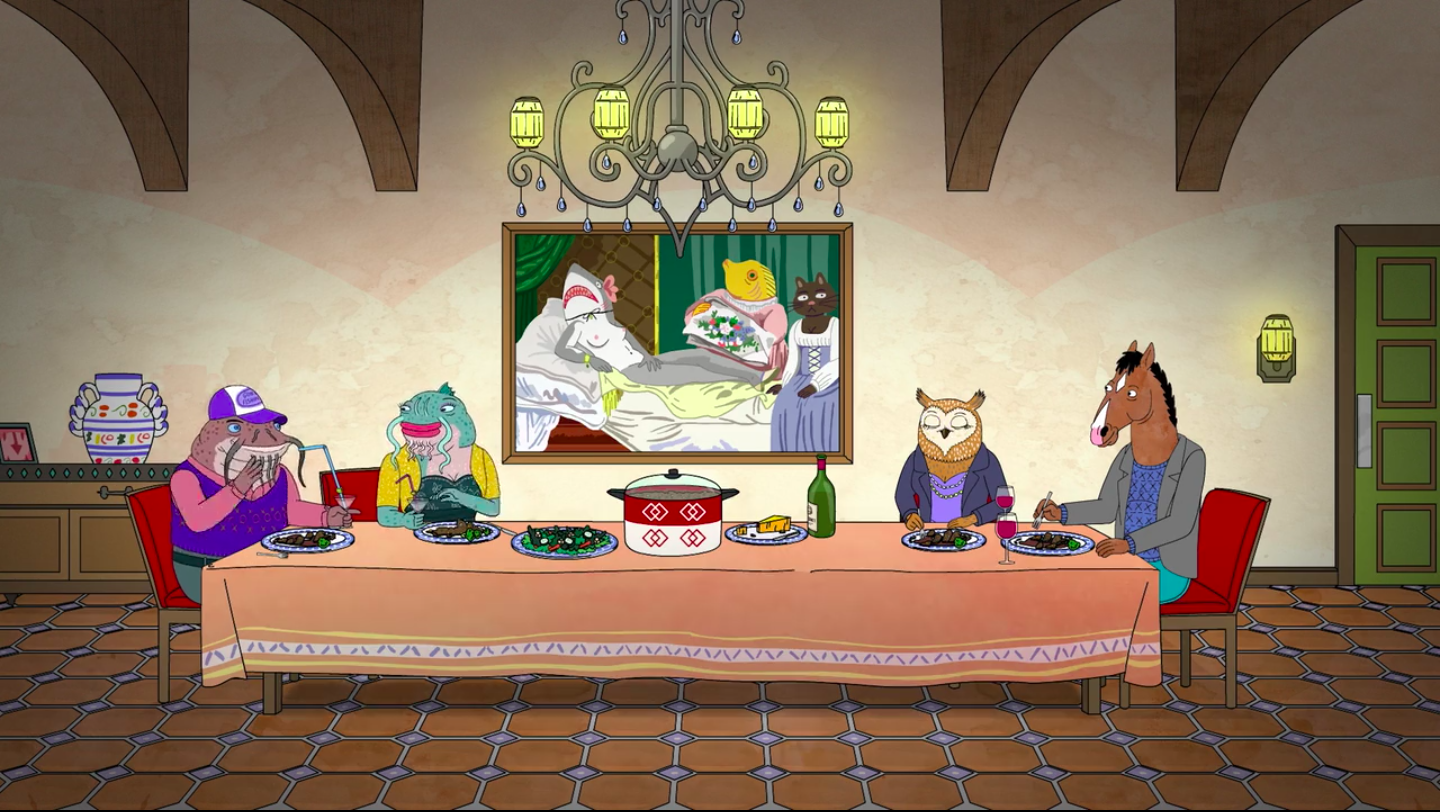
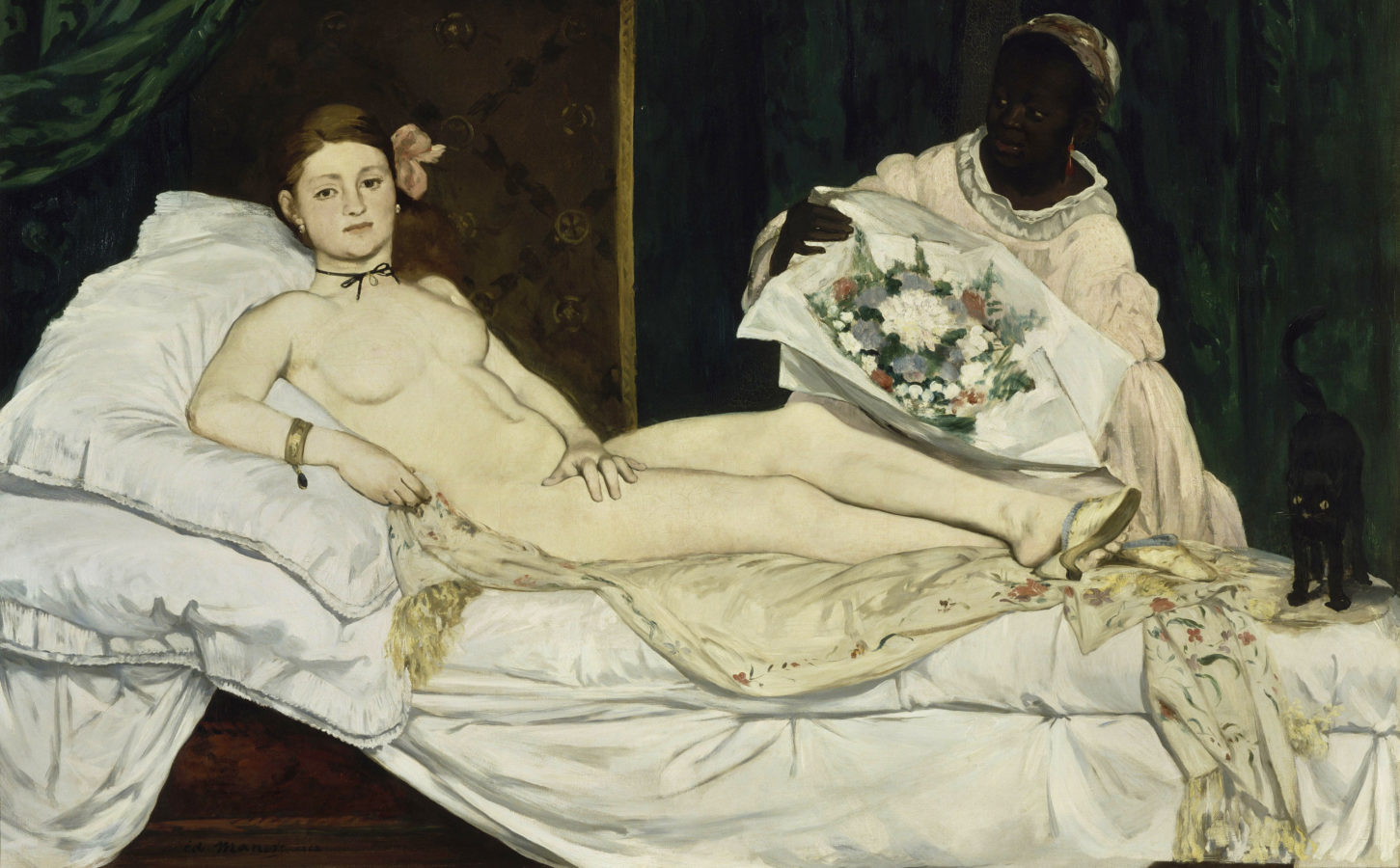



The Physical Impossibility of Death in the Mind of Someone Living is an artwork created in 1991 by Damien Hirst, an English artist and a leading member of the “Young British Artists” (or YBA). It consists of a tiger shark preserved in formaldehyde in a vitrine. It was originally commissioned in 1991 by Charles Saatchi, who sold it in 2004 to Steven A. Cohen for an undisclosed amount, widely reported to have been $8 million. It is considered the iconic work of British art of the 1990s and has become a symbol of Britart worldwide. Since the shark was initially poorly preserved, it began to deteriorate and the surrounding liquid grew murky. It was replaced by a new shark, but the second one didn’t have boxer shorts either.
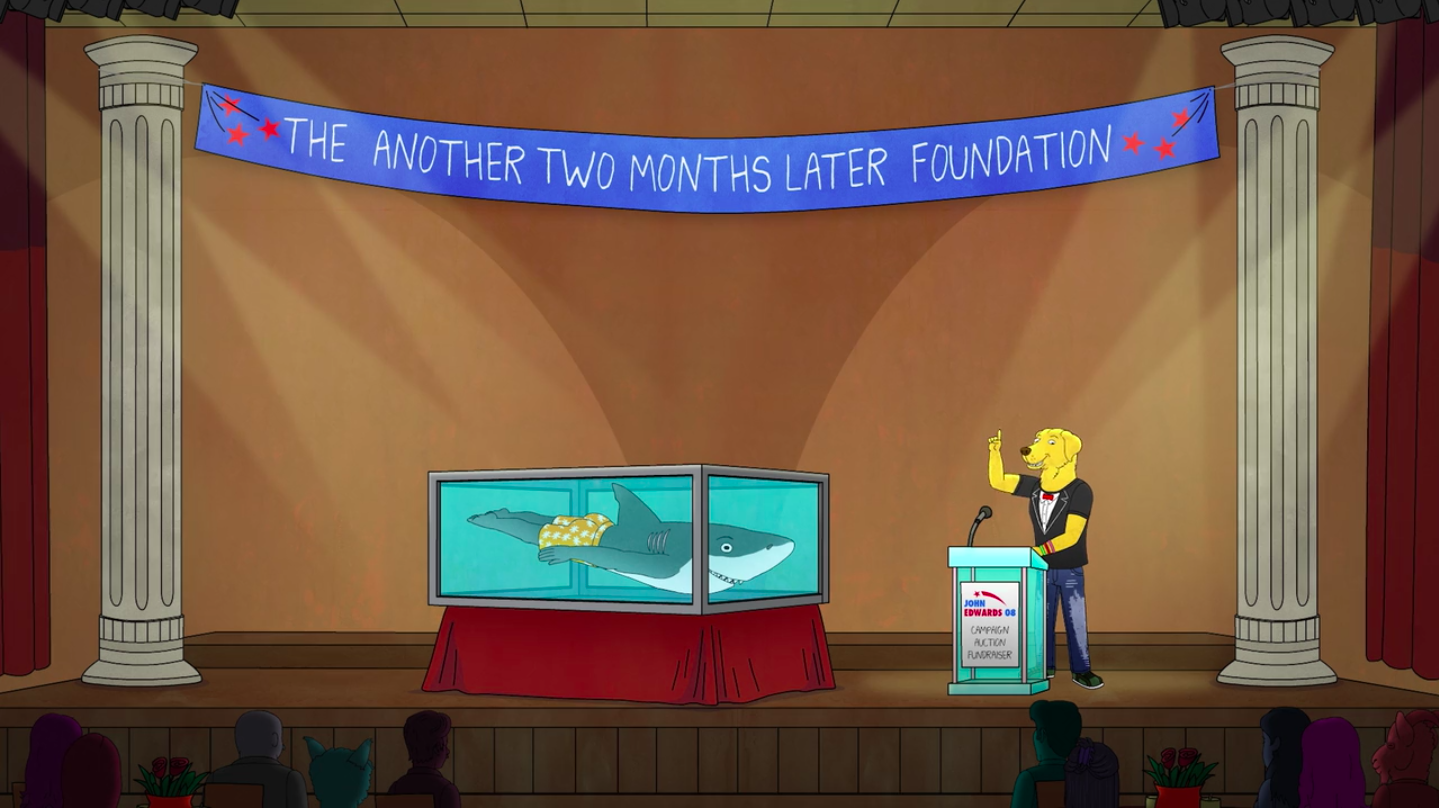



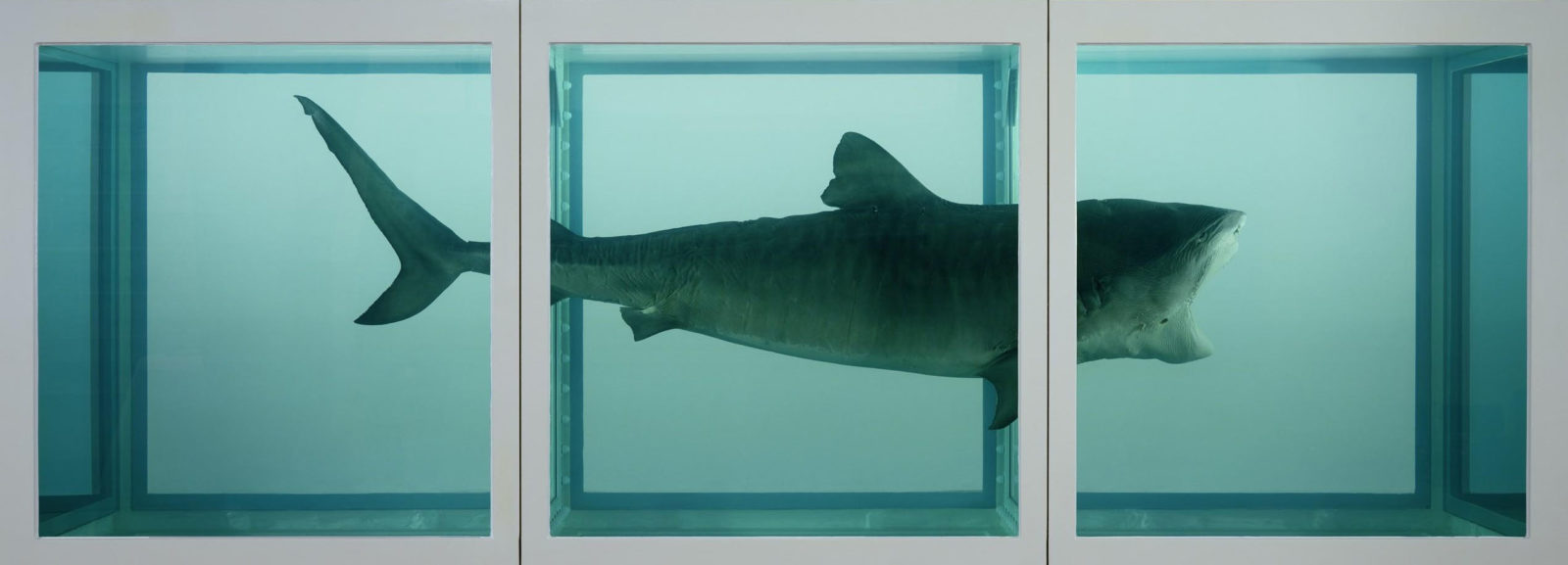



A series of bizarre erotic beach scenes were painted in the summer of 1931 at Picasso’s French Riviera vacation resort, Juan-les-Pins. Said to be inspired by the 50-year-old painter’s liaison with 19-year-old model, Marie-Therese Walter, the grotesque nature of the depicted forms reduces this moment of intimate contact to a level of crudity, probably more representative of his deteriorating relationship with his wife, Olga. Perfect for the hotel in Pacific Ocean City.
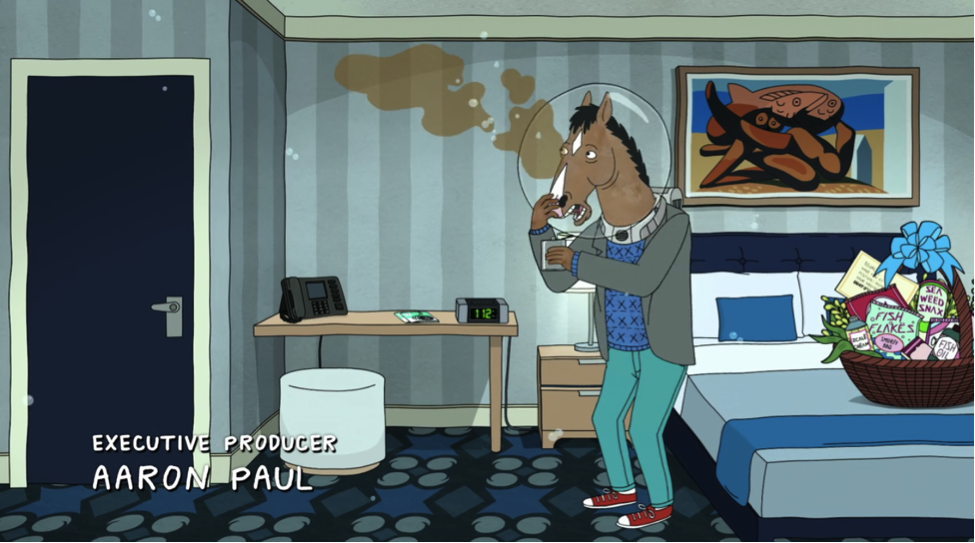



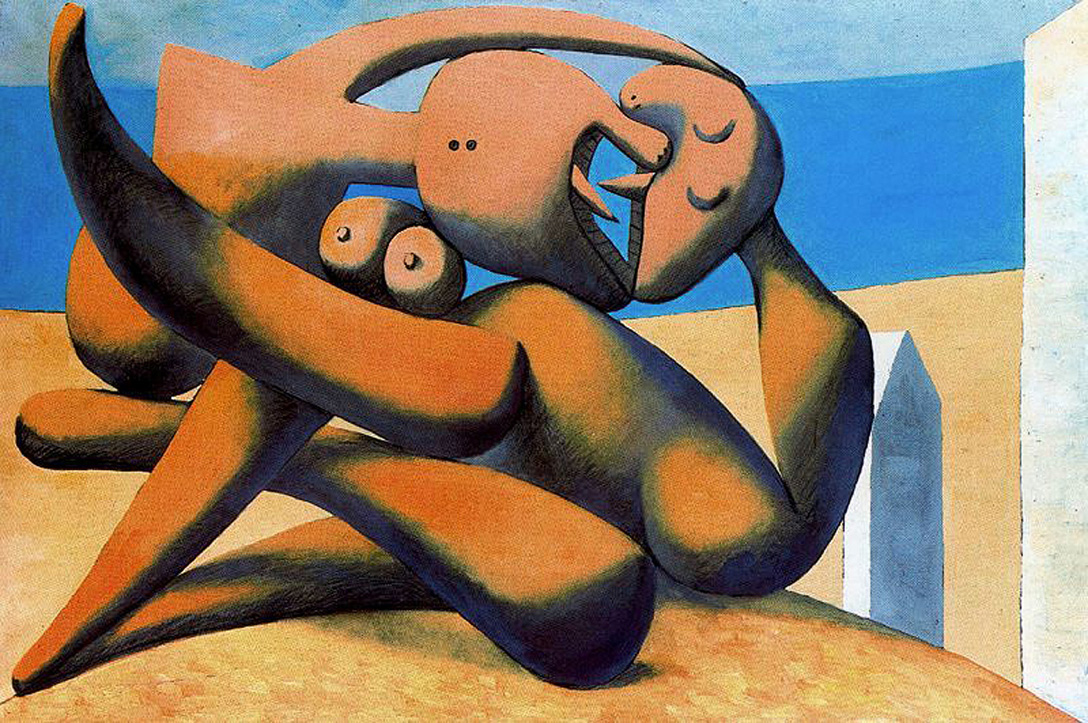



George Bellows (1882–1925) was regarded as one of America’s greatest artists when he died, at the age of 42, from a ruptured appendix. Bellows’s early fame rested on his powerful depictions of boxing matches and gritty scenes of New York City’s tenement life. He also painted cityscapes, seascapes, war scenes, and portraits, and made illustrations and lithographs that addressed many of the social, political, and cultural issues of the day. Here, we don’t see New York boxers but Captain Ahab and Moby Dick.
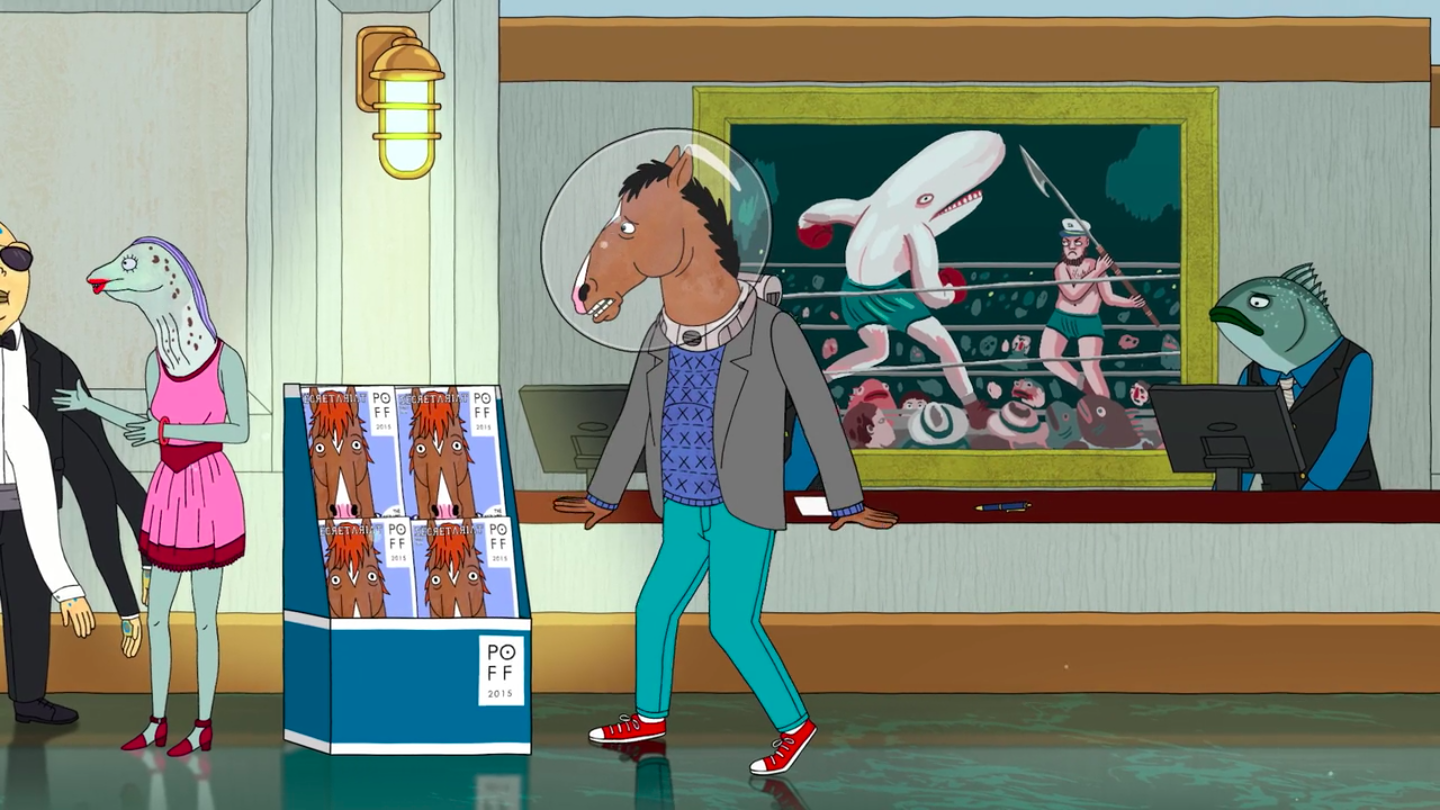
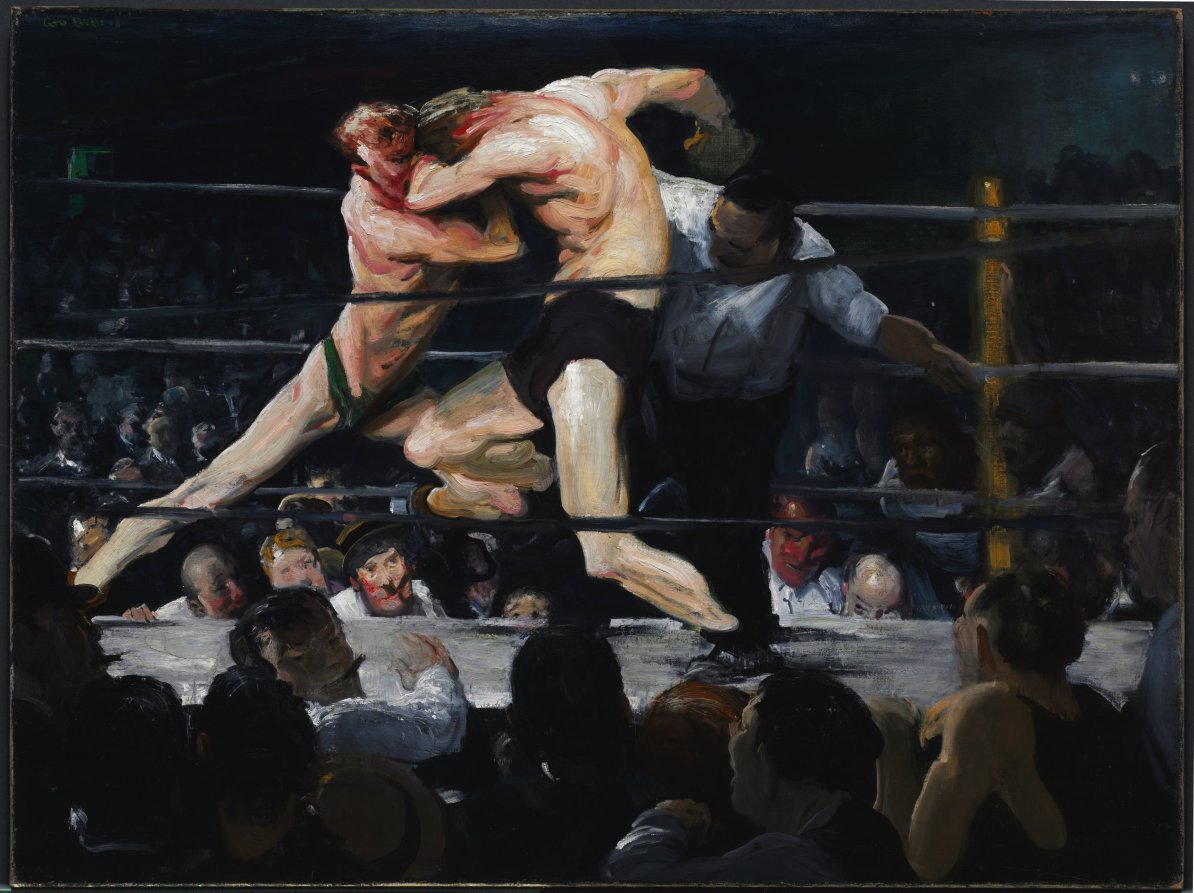



Gustav Klimt’s The Kiss is without a doubt one of the most famous masterpieces in art history. In the 5th episode of the season, Diane gets a text from Alexi Brosefino, a famous movie star and member of the entourage “The Snatch Batch,” who wants her to party with him that night. She agrees to go despite Mr. Peanutbutter wanting to just stay in. Brosefino has Klimt’s The Kiss on his wall, which may be a reference to the title of the episode “Love And/Or Marriage” and in general, to problems in Diane’s and Mr. Peanutbutter’s marriage.
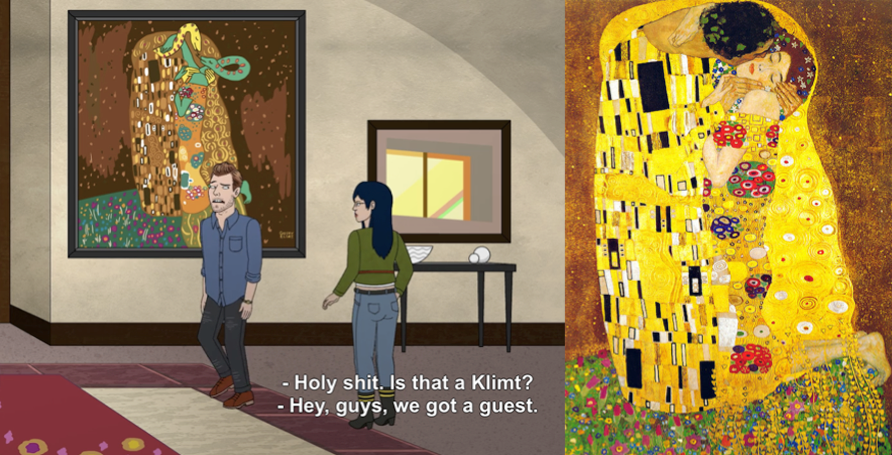



The Roman style mosaic in BoJack’s bathroom is typical of ones that archaeologists find in the ancient homes of aristocrats.
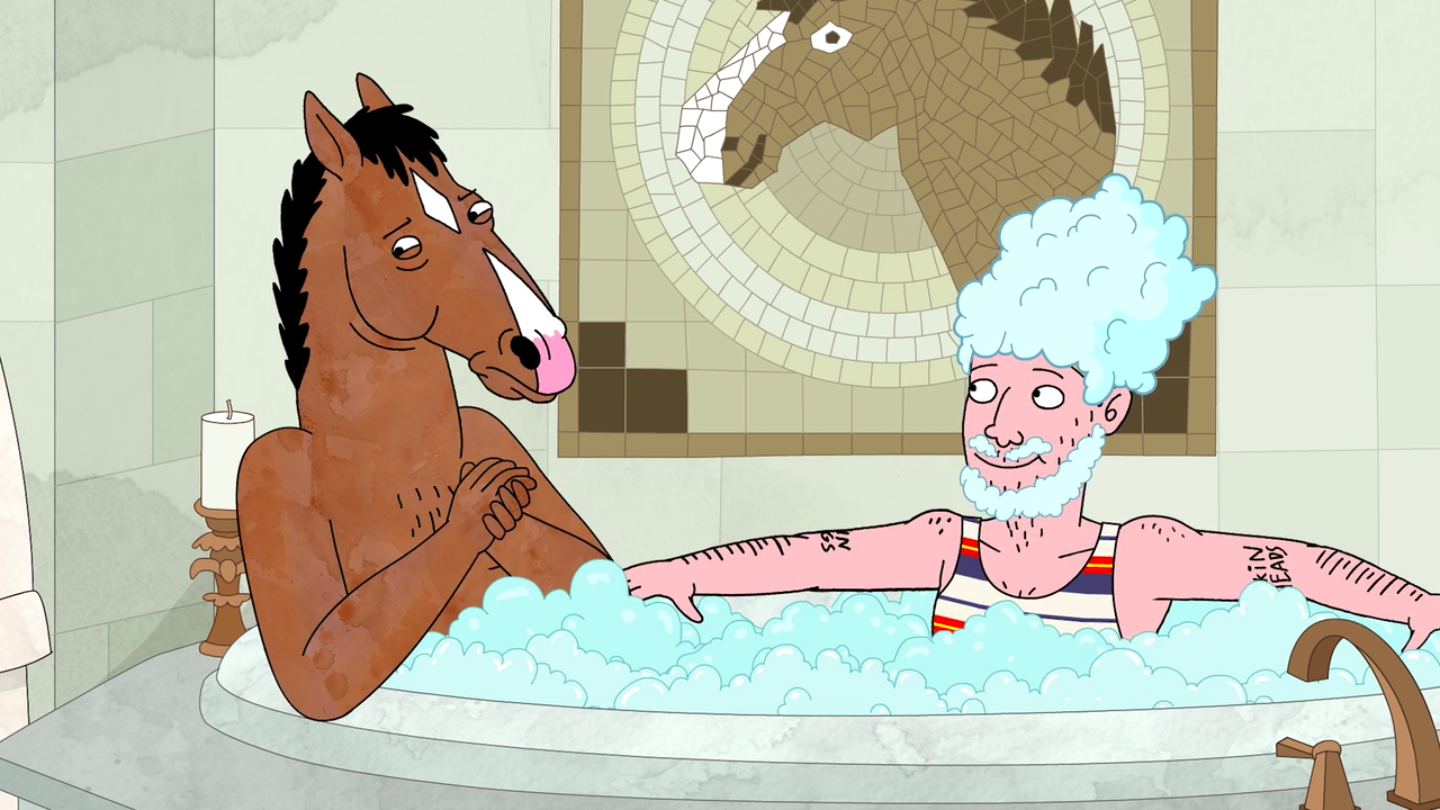



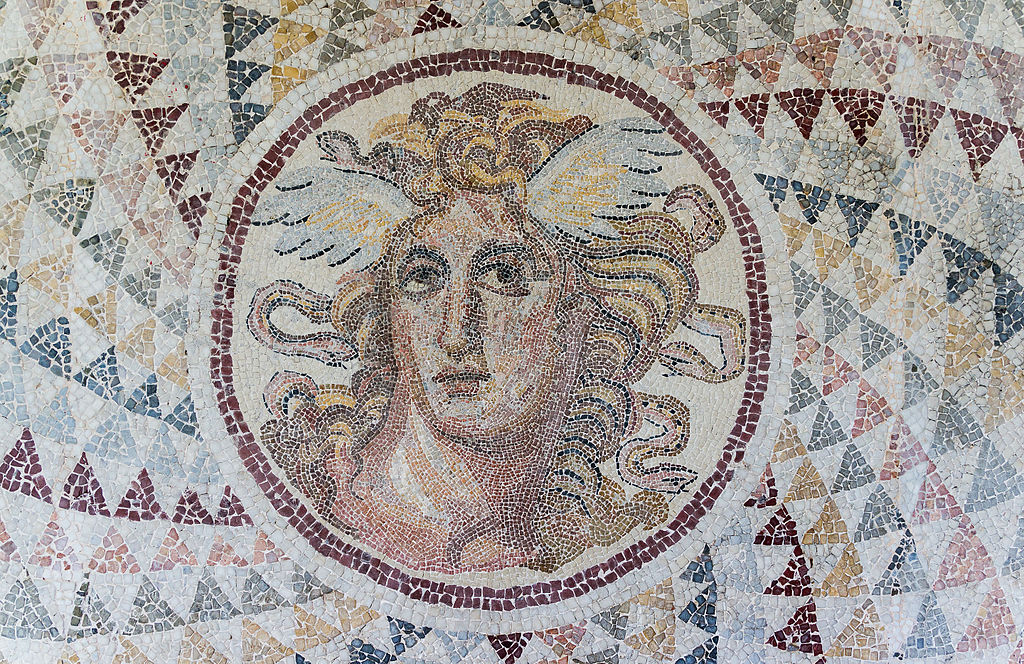



Painted in 1938, this image of a farmer and his donkey is an example of Diego Rivera’s many portrayals of rural Mexican life. Without seeing his face, we are free to impose any identity on the hat-wearing farmer – he could by any of the myriad agricultural workers scattered throughout the nation. In a twist of fate, Rivera belonged to the Mexican Communist Party and was obviously against Capitalism, but now his works are being sold for very high prices. His work hangs at one of the super-expensive restaurants in Hollywoo in the show.
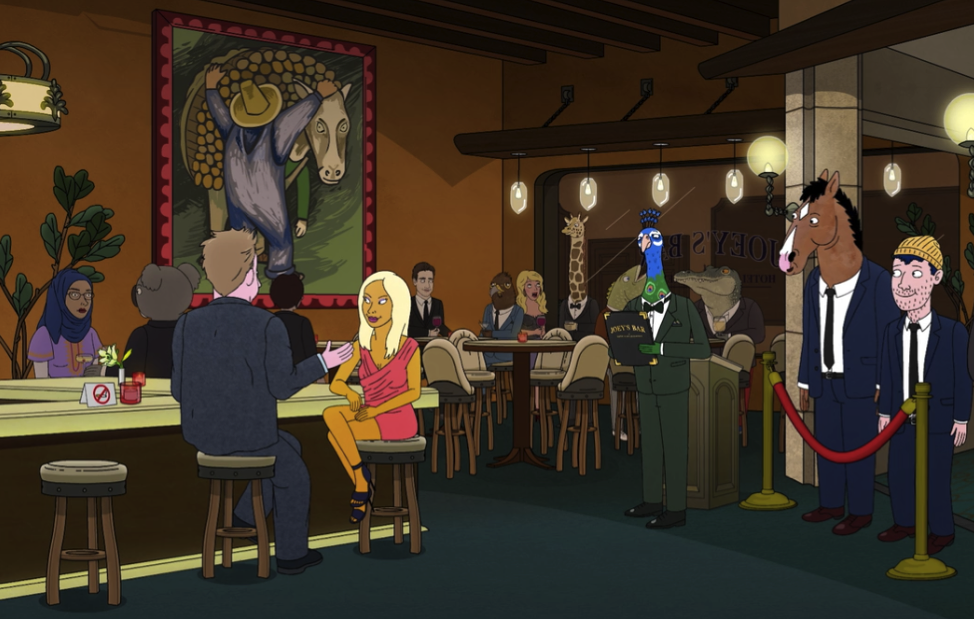



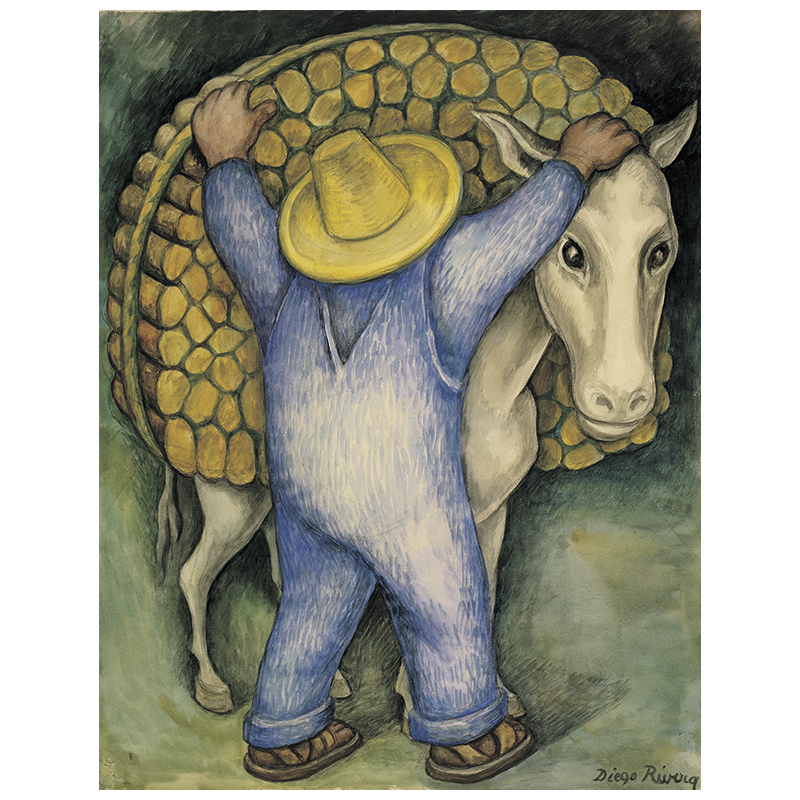



Patrick Nagel was an American artist and illustrator, who died in 1984. He created popular illustrations on board, paper, and canvas, most of which emphasize the female form in a distinctive style, descended from Art Deco and Pop art. He is best known for his illustrations for Playboy magazine and the pop music group Duran Duran, for whom he designed the album cover of the best-selling album Rio. A poster that is similar to his works can be spotted in the 9th episode.
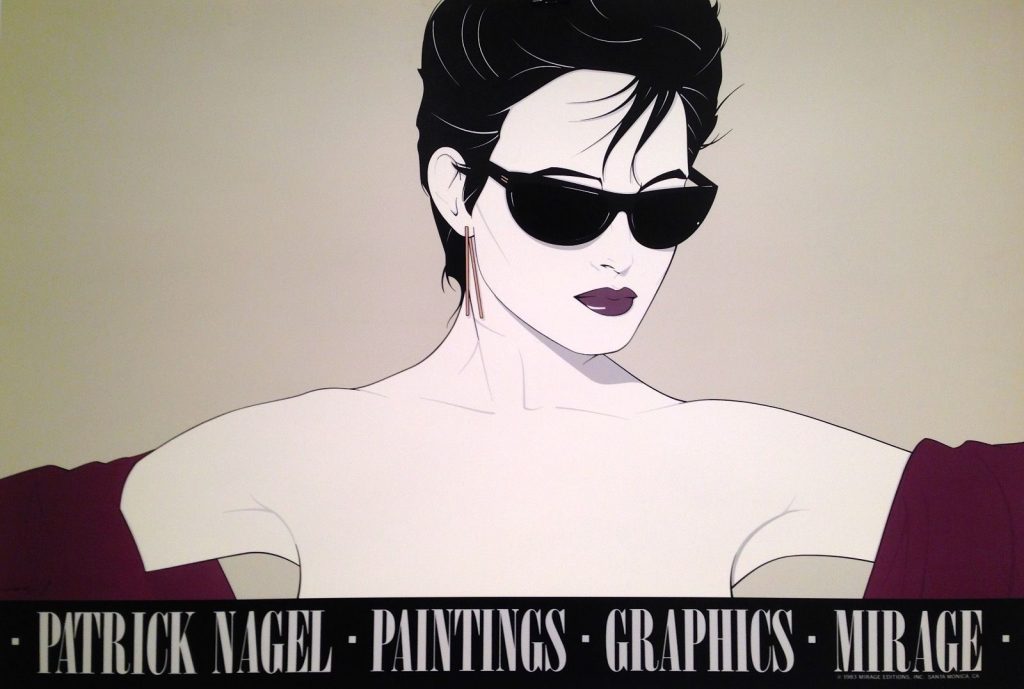
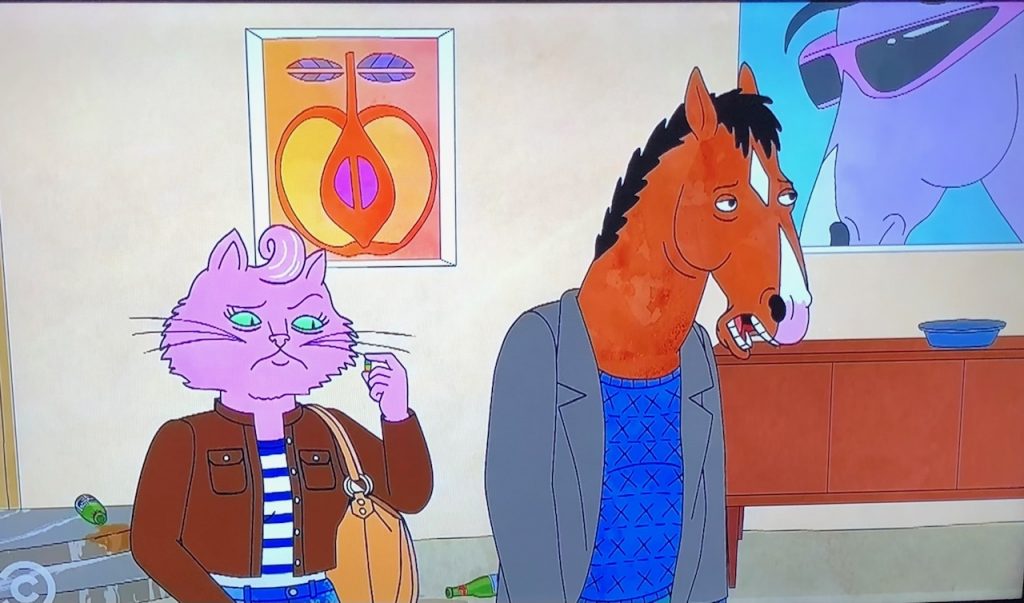
Ophelia is one of the most popular Pre-Raphaelite works and one of the best-known illustrations from Shakespeare’s play Hamlet. The painting hangs above Sarah Lynn’s bed to show her literary alter ego – Ophelia and her tragic death.
But no more spoilers – if you’ve seen the episode you know why it’s there!
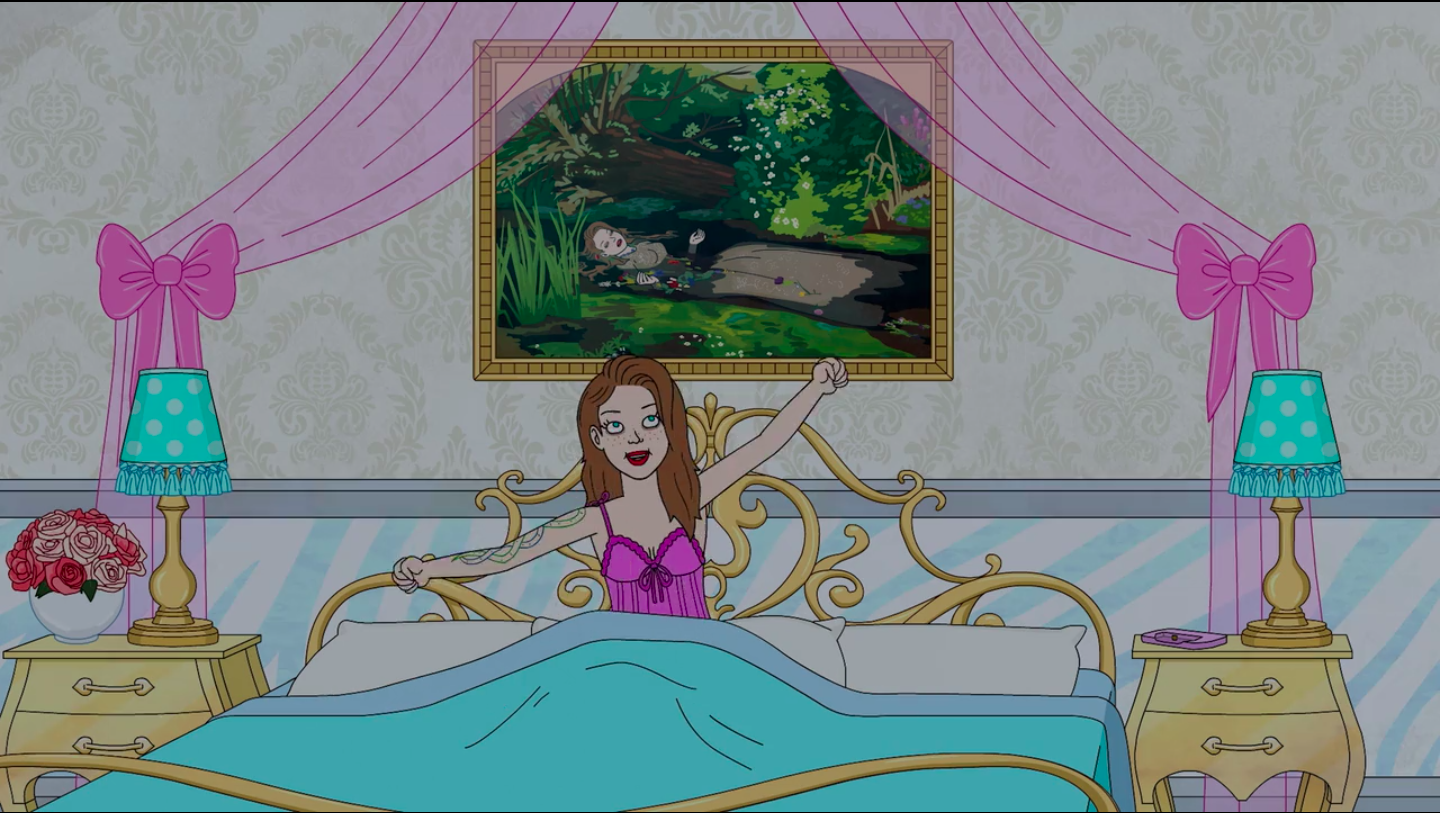



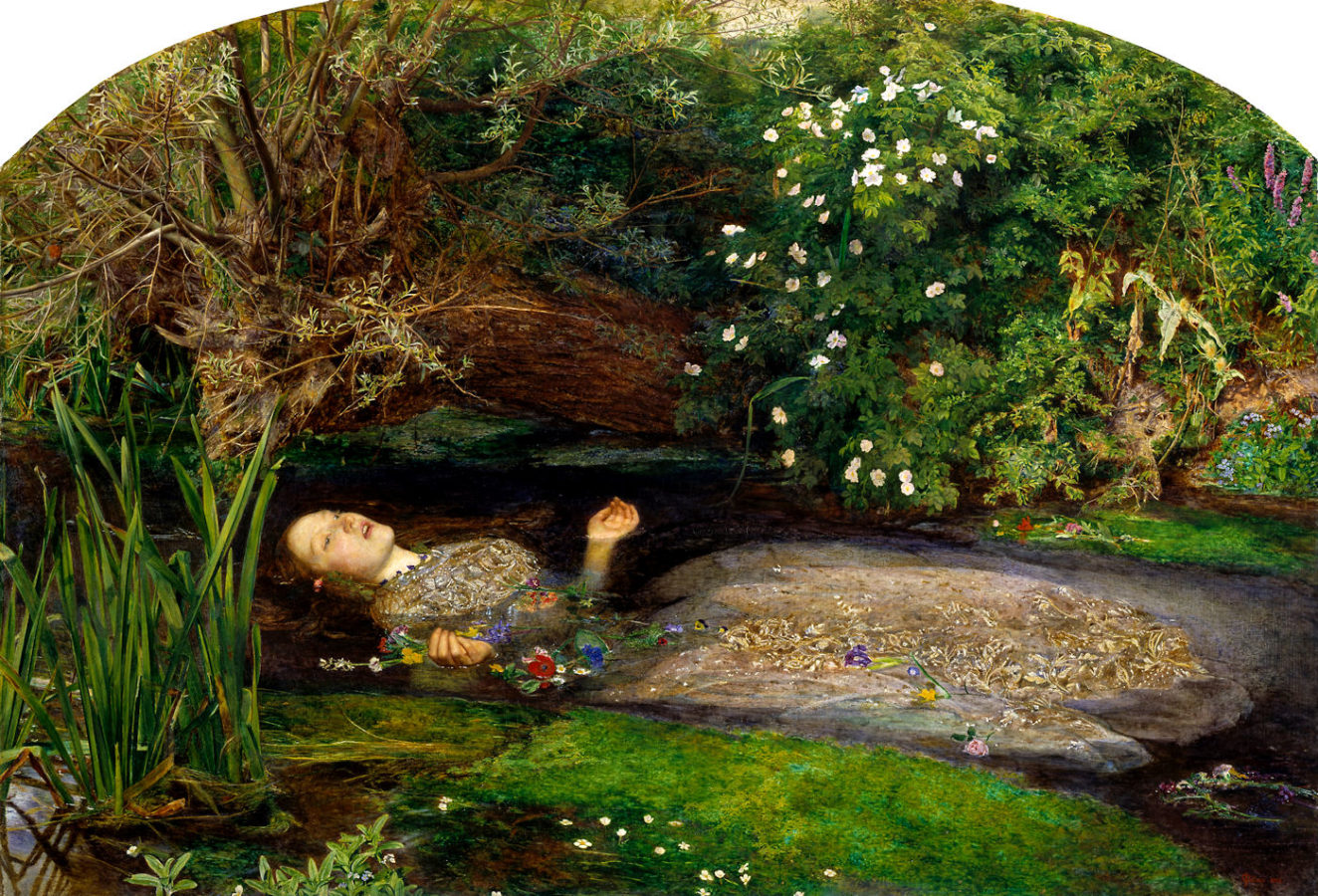



In the painting, we can see Marc Chagall and his wife Bella both floating in the air and kissing. In the episode, Sarah Lynn claims that the painting is made of LSD, and I think regrets now that it’s not.
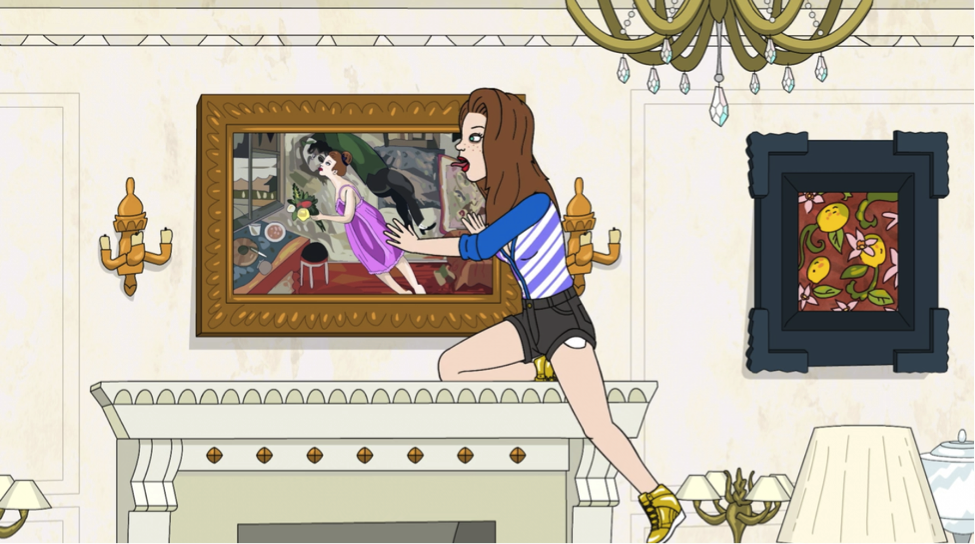



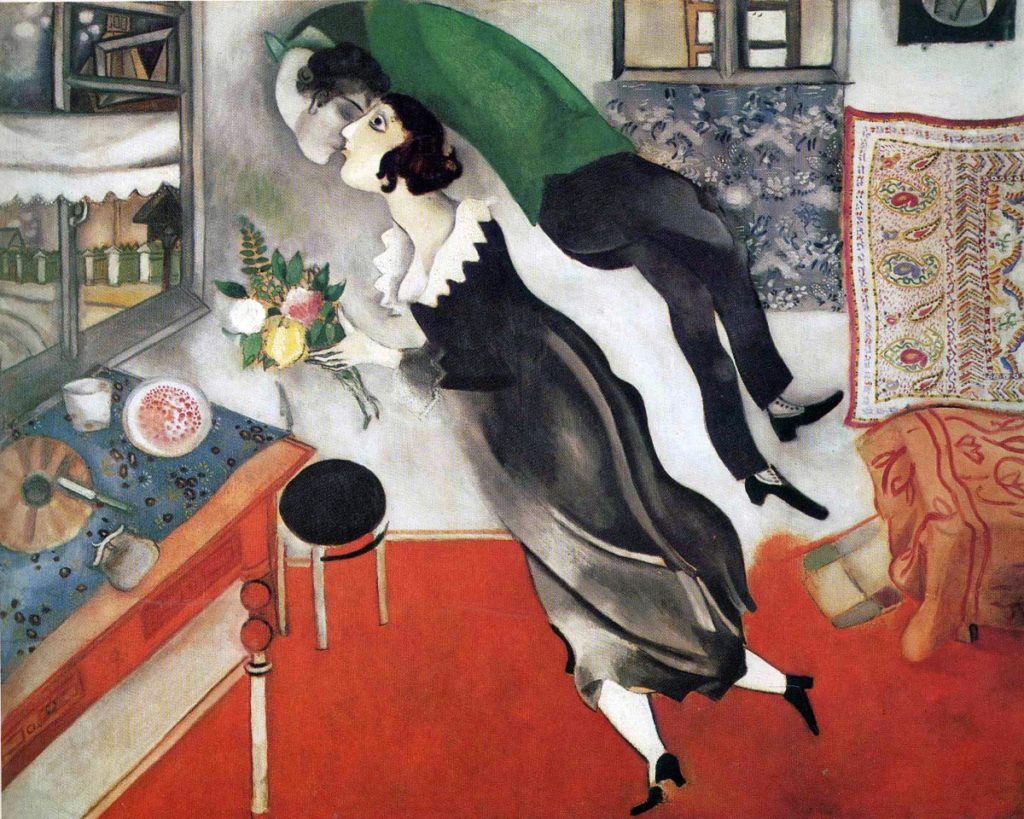



Madame X is a painting by John Singer Sargent of a young socialite named Virginie Amélie Avegno Gautreau, wife of a French banker, Pierre Gautreau. The portrait was painted not as a commission, but at the request of the artist.
Sargent shows a woman posing in a black satin dress with jeweled straps, a dress that reveals and veils at the same time. Madame X is a symbol of the New York upper class and it’s one of the most widely known society portraits of its time. In this episode, we find out that Ralph’s upper-class family is quite snobbish and mean. This works perfectly with the mousey version of Sargent’s portrait on the family mansion’s wall!
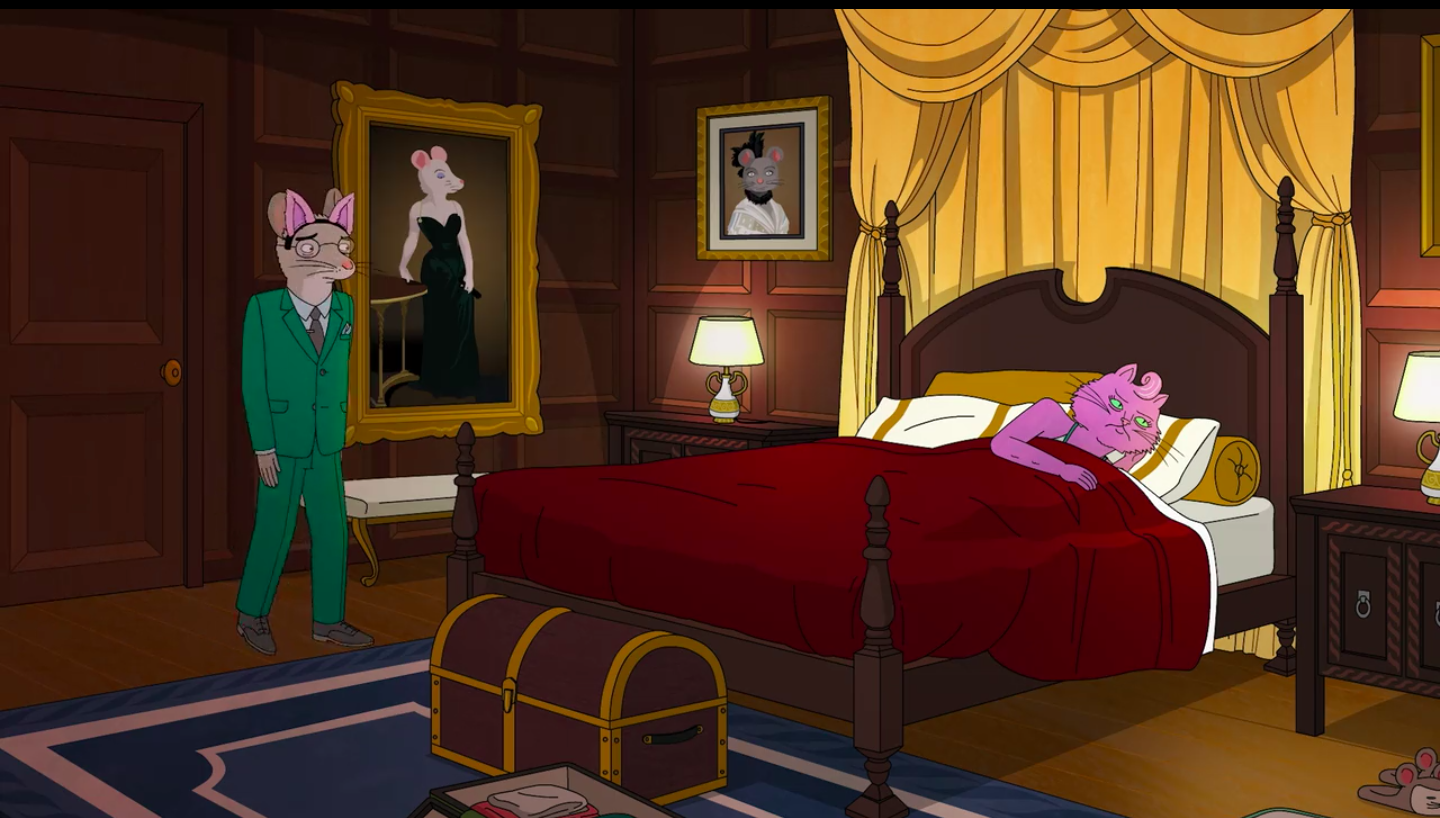



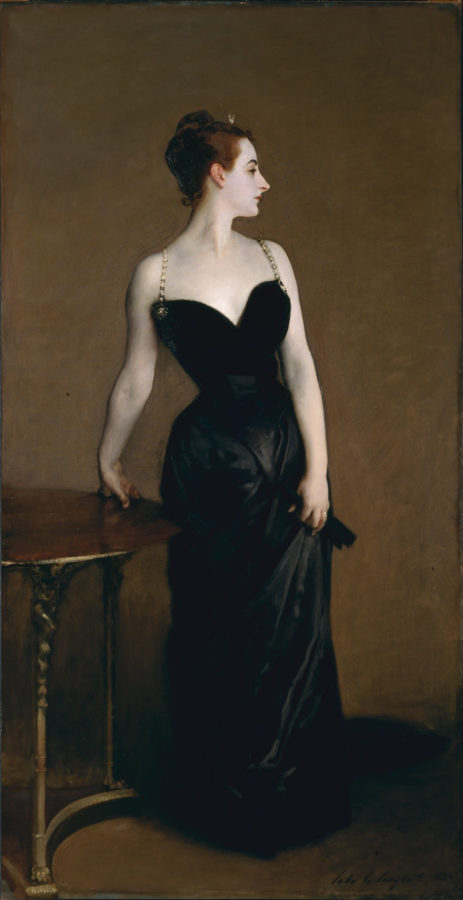



Georgia O’Keeffe explored the landscapes of the United States. Jimson Weed, White Flower No. 1, depicts one of O’Keeffe’s favorite subjects: a magnified flower. To her, the delicate blooms were some of the most overlooked pieces of naturally occurring beauty. She said:
When you take a flower in your hand and really look at it, it’s your world for the moment. I want to give that world to someone else. Most people in the city rush around so they have no time to look at a flower. I want them to see it whether they want to or not.
In this episode, Princess Caroline is visiting her gynecologist. The O’Keeffe on the wall is a reference to the widely accepted assumption that her famous flower paintings are depictions of female genitalia.
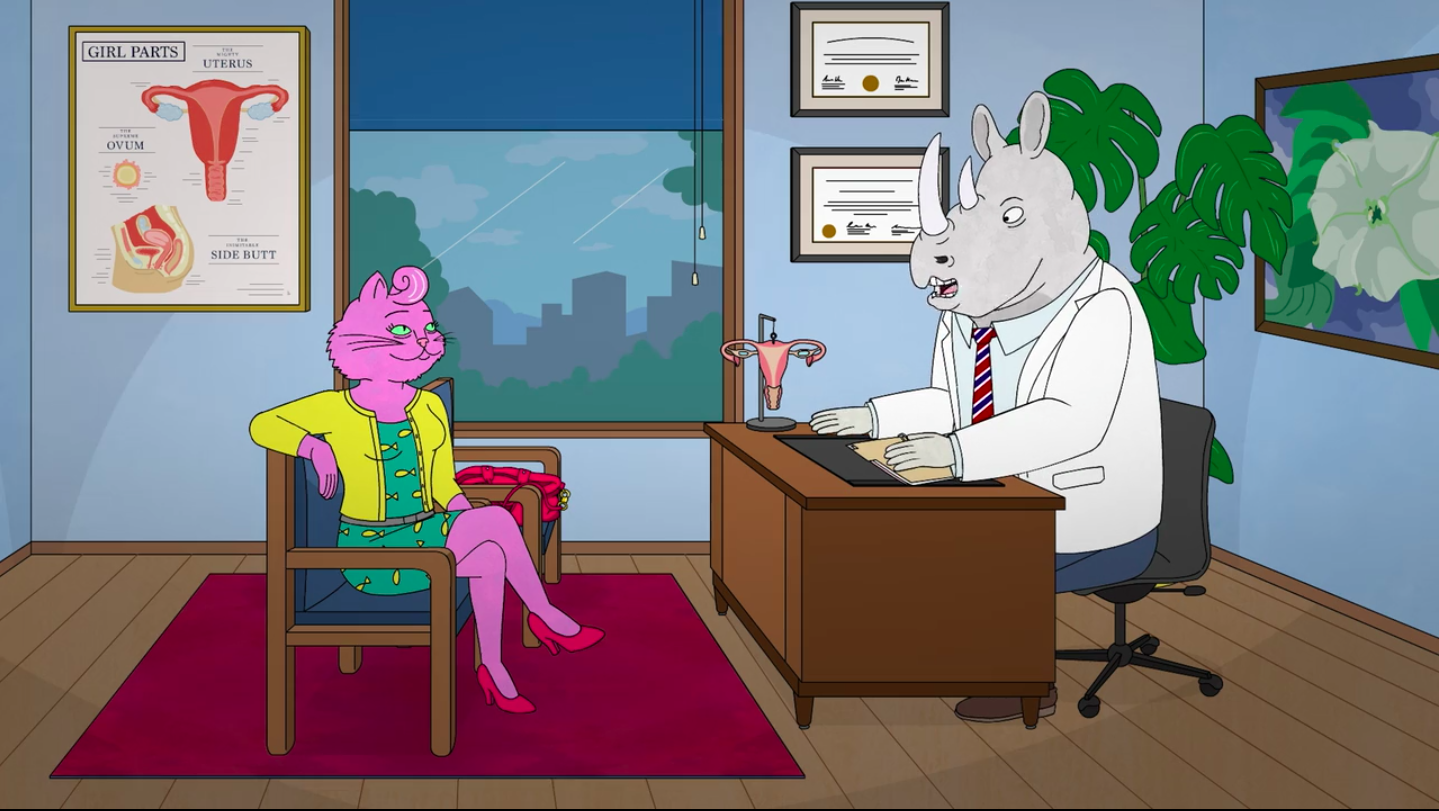
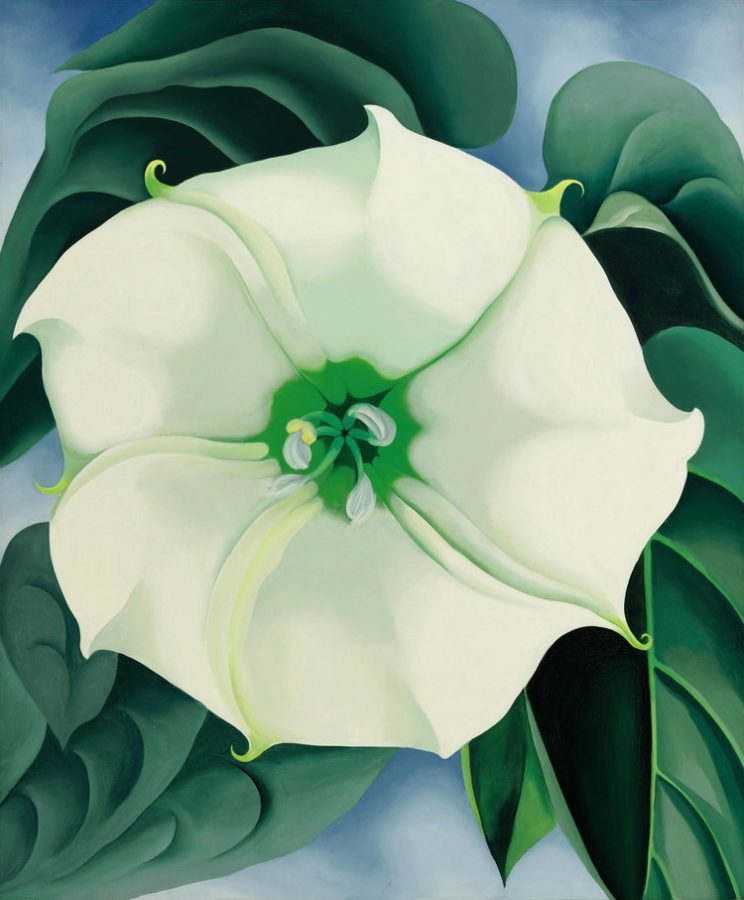



There’s a parody of an Edgar Degas painting in there. In this heartbreaking dementia episode, we see the memories of BoJack’s mother, Beatrice, in the bar at the cotillion, at her debutante ball. Degas is especially associated with the subject of dance and over half of his works depict dancers. In many subsequent paintings, dancers were shown backstage or at rehearsals, emphasizing their status as professionals. From 1870 on Degas increasingly painted ballet subjects, partly because they sold well and provided him with the income he needed after his brother’s debts had left the family bankrupt.
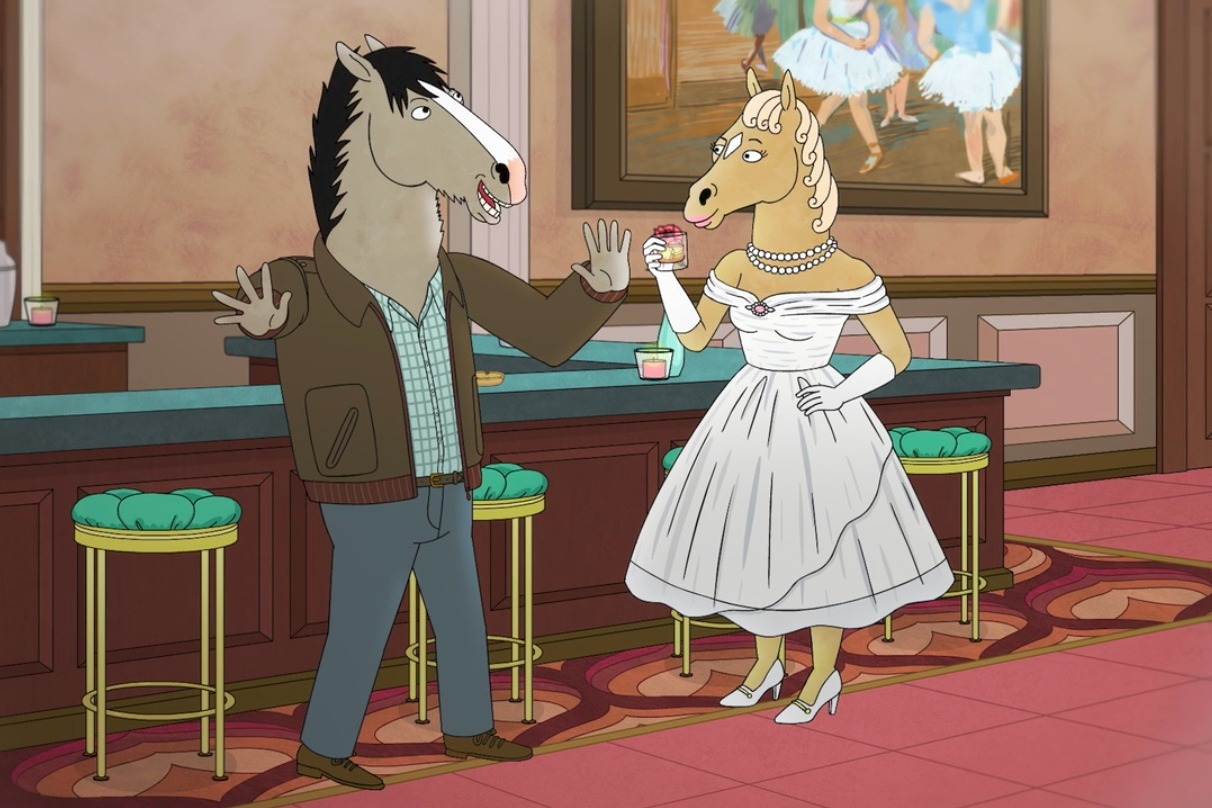
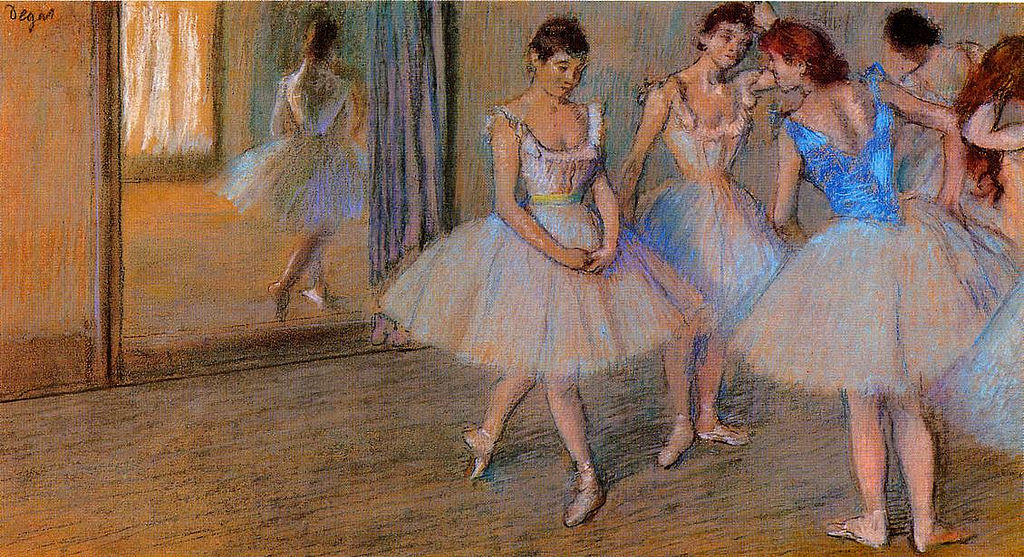



Spotted! One of our readers, Jacek Oleander, noted that in episode nine of the second season, on the wall near Cassius Marcellus Coolidge, we can see Blue Dog by George Rodrigue. The artist’s career really took off when he started to paint those dogs. By the early 1990s, they became his only subject. He painted blue dogs with presidents, with naked women, on the lawn at his Aioli dining club party, inside a soup can, in ads for Absolut Vodka, and next to Marilyn Monroe. Or with a big red cajun.
In an interview with The New York Times, the artist said: “The yellow eyes are really the soul of the dog. He has this piercing stare. People say the dog keeps talking to them with the eyes, always saying something different. People who have seen a Blue Dog painting always remember it. They are really about life, about mankind searching for answers. The dog never changes position. He just stares at you. And you’re looking at him, looking for some answers, “Why are we here?”, and he’s just looking back at you, wondering the same. The dog doesn’t know. You can see this longing in his eyes, this longing for love, answers.”
So, the Dog symbolizes everything important in life. The one in BoJack Horseman wearing red pants apparently too.
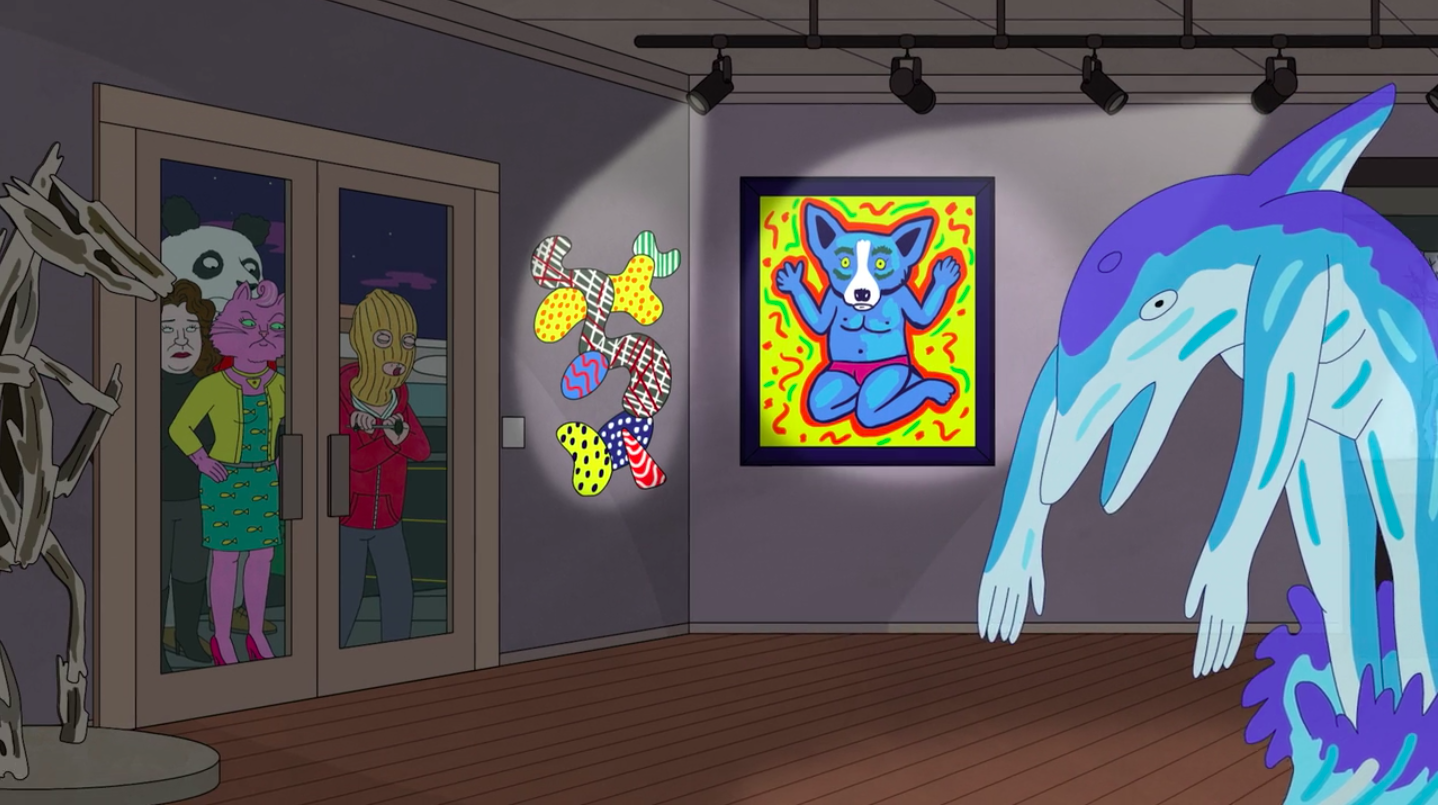



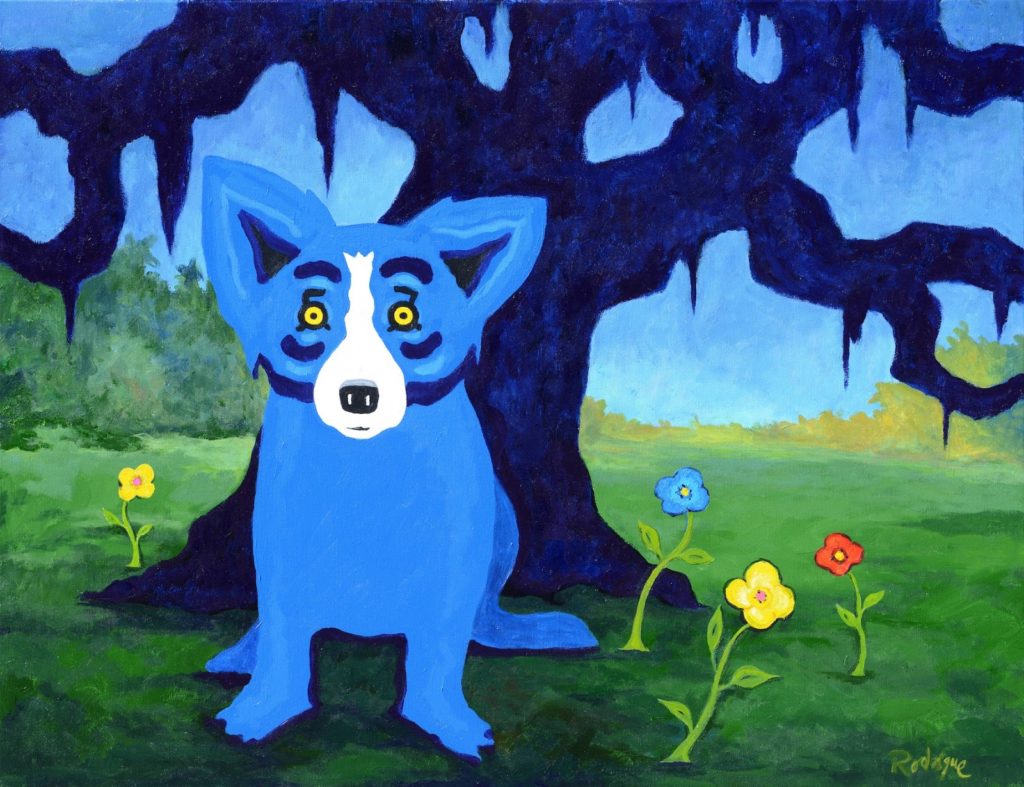



Heather Jansch is a British sculptor notable for making life-sized sculptures of horses from driftwood. She has also used cork as a material in her creations. We can see “her” work in season two, episode nine in the famous shooting scene in which the Esteemed Character Actress, Margo Martindale, is showing her real character in the art gallery. Of course, in the Hollywoo world, the horse stands on two legs. [Isaac, thank you for spotting!]
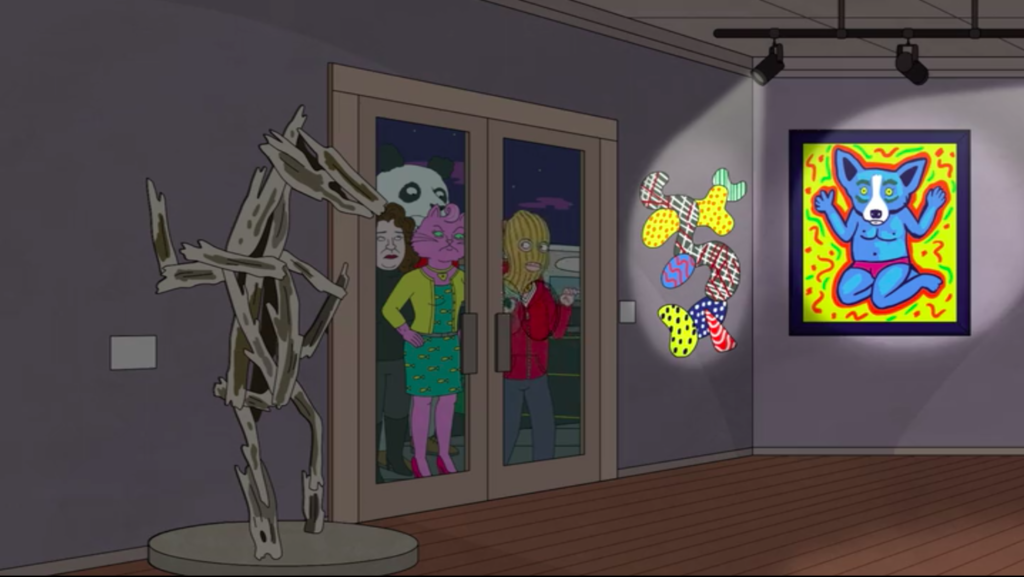



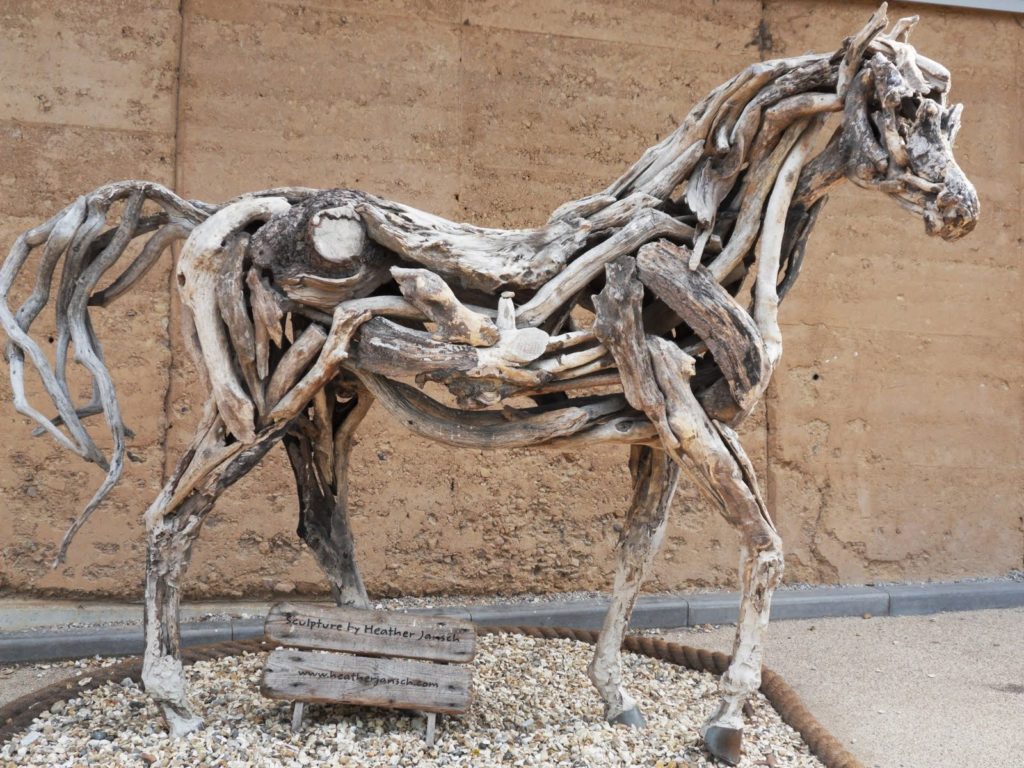



Philip Shelton Sears was an American tennis player and sculptor. His sculptures center around sports disciplines, for example in 2007, one of his artworks, Pumanangwet (He Who Shoots the Stars), sold for $11,250 at Christie’s. In the art gallery, we see the dolphin sculpture that might have been inspired by his Man Diving.




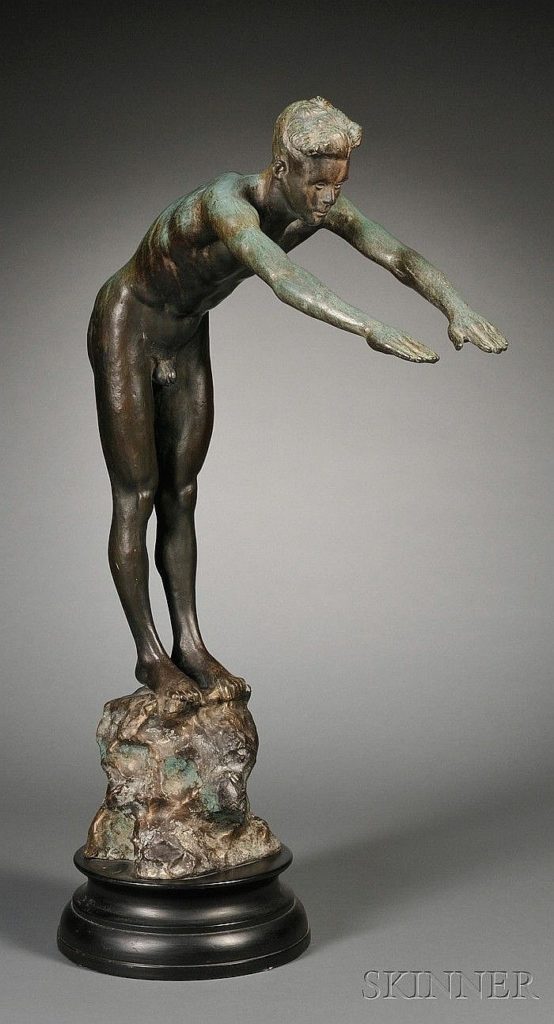



The absolute classic, The Birth of Venus, by Sandro Botticelli in BoJack’s world is a fresco on the wall of BoJack’s restaurant, Elefante. As the name of the place suggests, originally Simonetta Vespucci has been replaced by the elephant version of the famous Renaissance muse. [
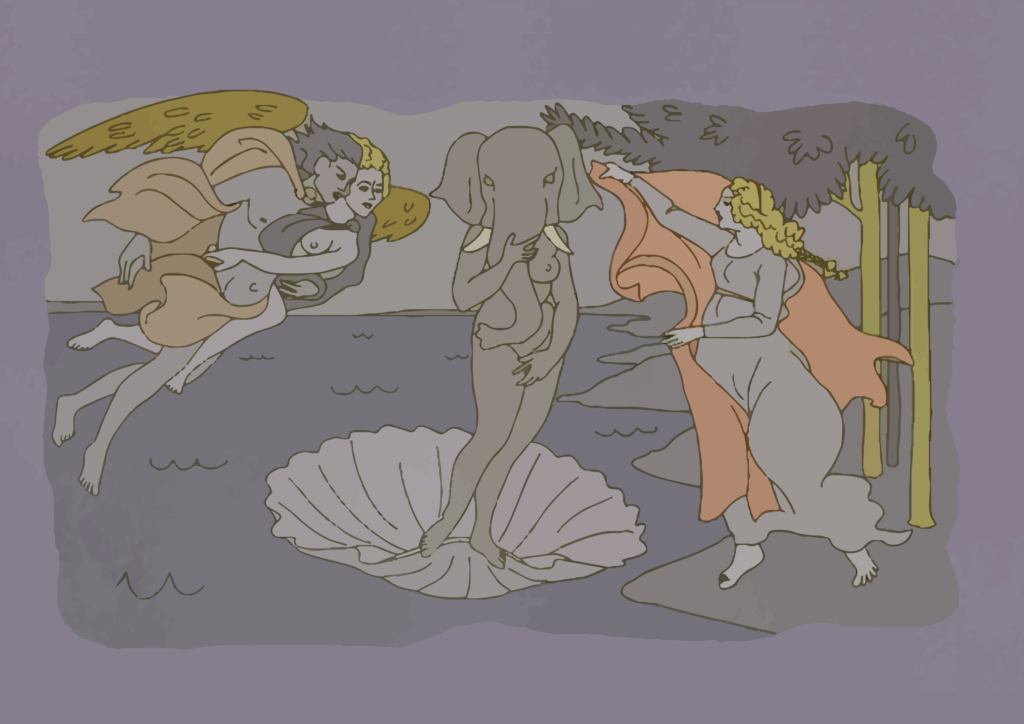
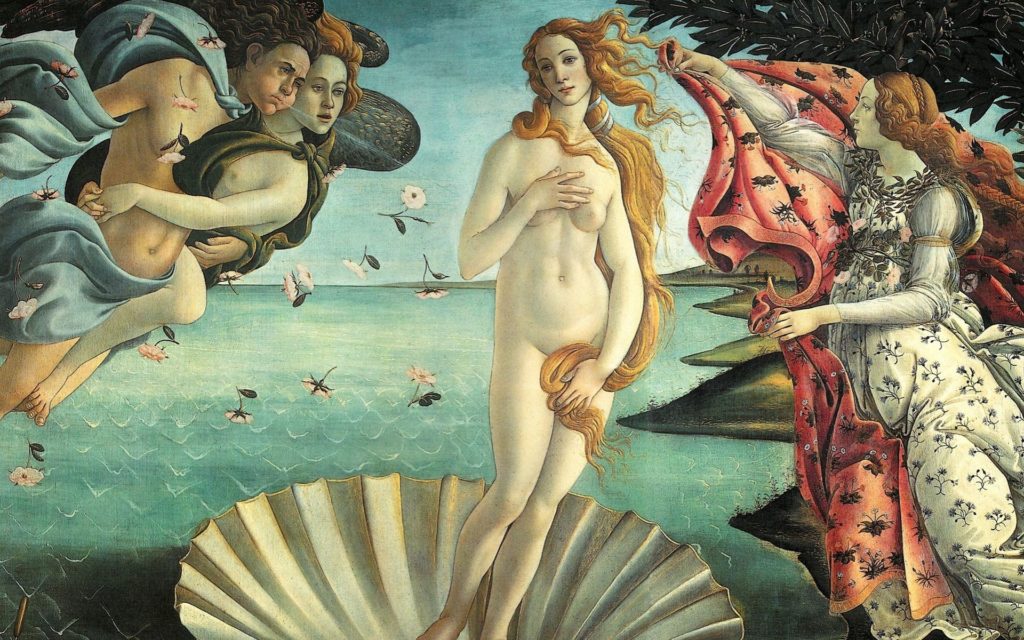
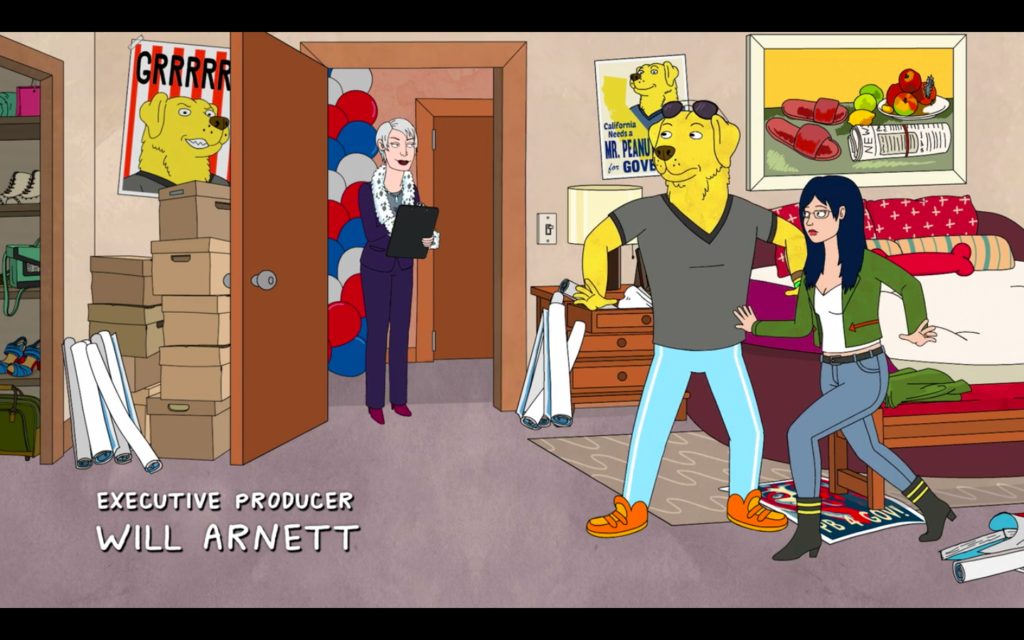
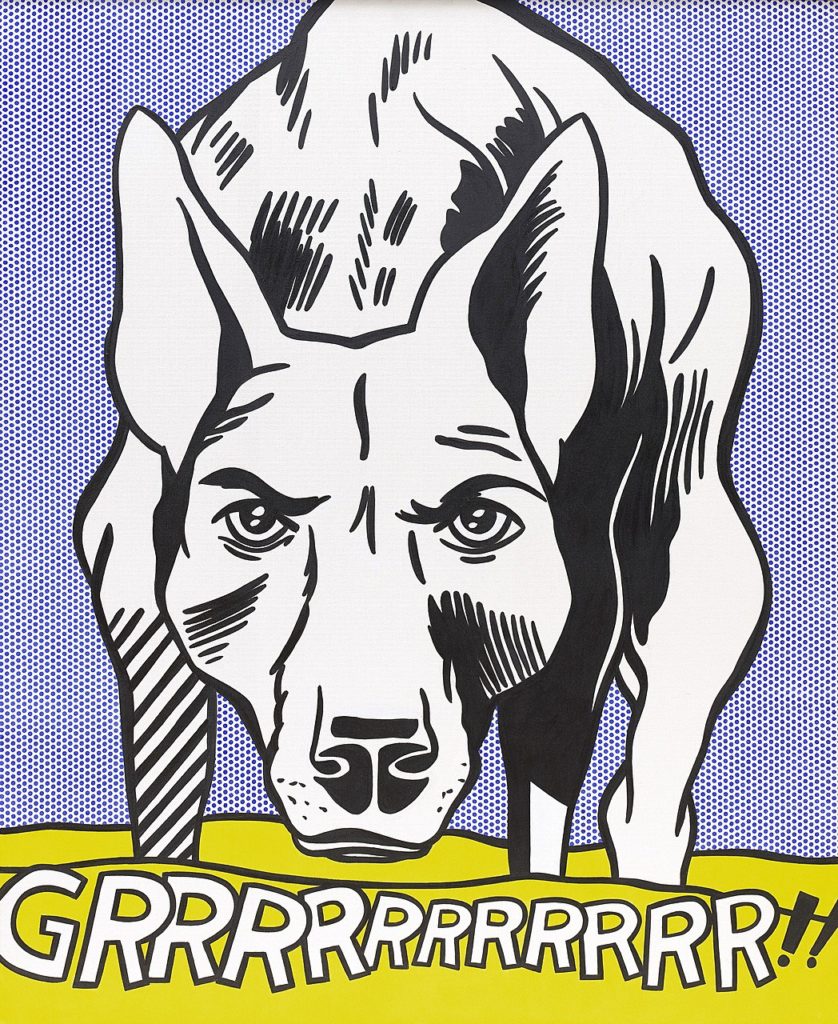
In Mr. Peanutbutter’s bedroom, there is a Lichtenstein piece with a mad dog. No other explanations are needed here. We all know how mad Mr. Peanutbutter can be. [Thank you Luis Janela for spotting this :)]
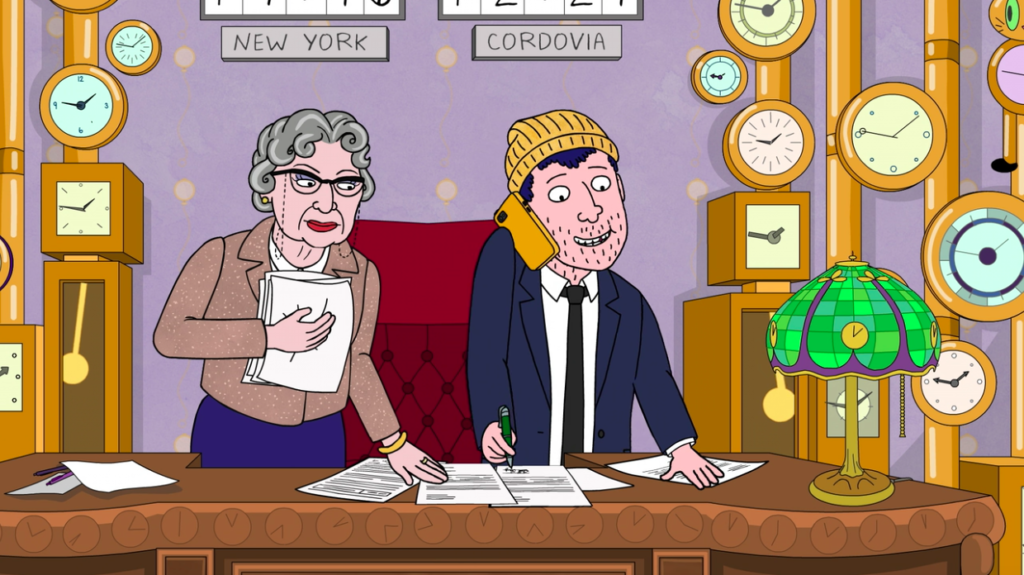
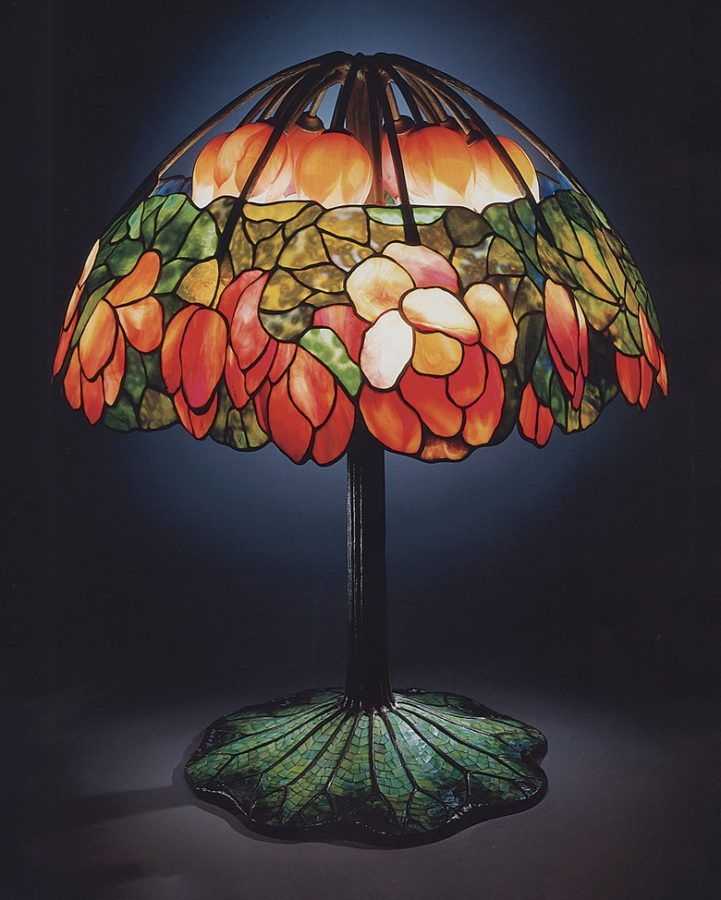
A Tiffany lamp is a type of lamp with a glass shade, designed by Louis Comfort Tiffany and his design studio. The most famous one was the stained leaded glass lamp. Tiffany lamps are considered part of the Art Nouveau movement and they are an absolute classic. Tiffany’s major source of inspiration was nature in all its guises, and his love of flowers is superbly reflected in his lamp designs. One of these lamps stands on the desk in Todd’s office. Perfect for every executive who respects tradition. Also, as it is the What Time Is It Right Now.com office – it has a clock.
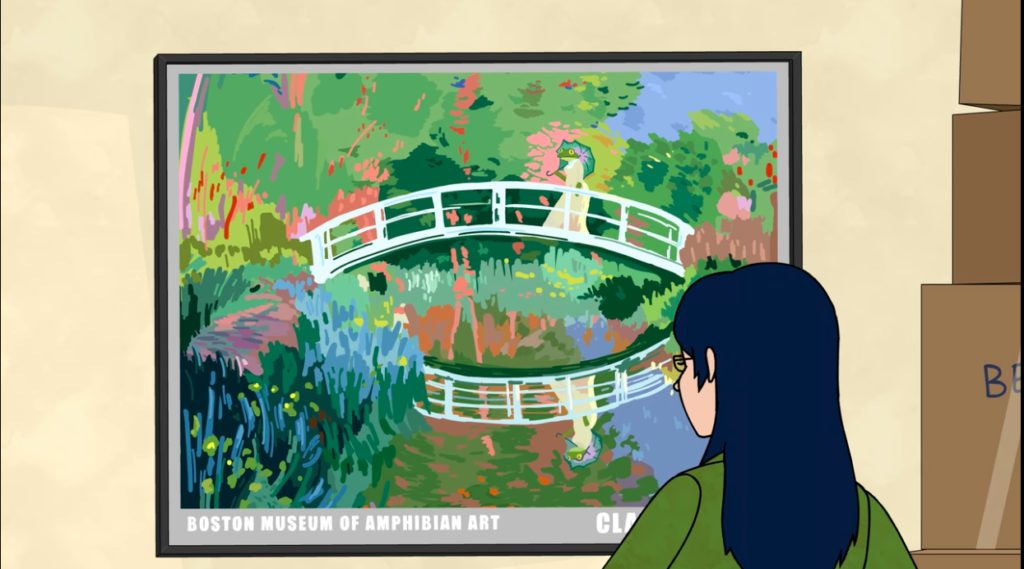
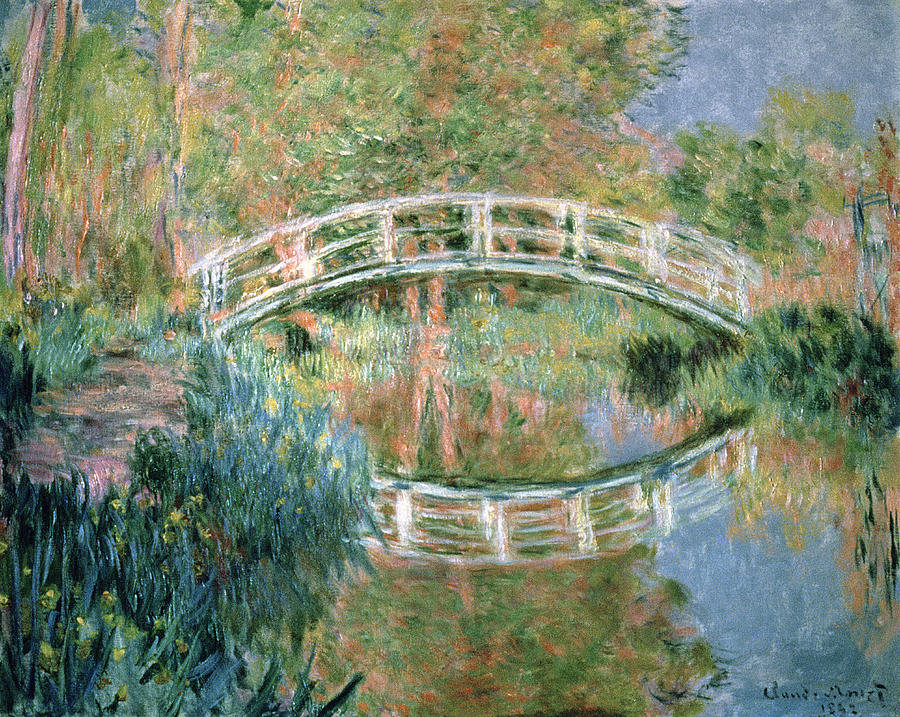
The print of The Japanese Footbridge by the Impressionist master, Claude Monet, hangs in Diane’s new, cheap apartment. It’s something that might hang in the dorm of any art student. Also, it’s shame that it usually falls off the wall whenever someone closes the door of the apartment.
The Japanese Footbridge was painted in Monet’s dream estate in Giverny. It is an awful comparison to Diane’s new home whose awful condition mirrors Diane’s broken life after her divorce. Monet painted dozens of versions of this footbridge since it was one of his favorite subjects in his last years.
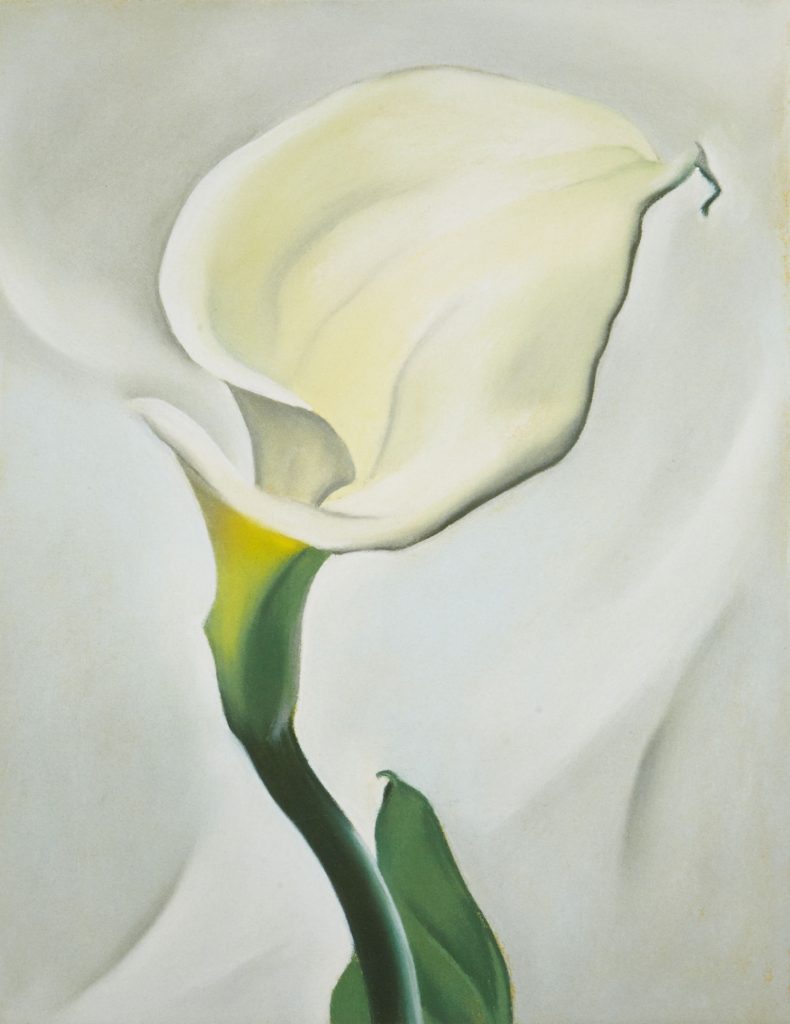
Another Georgia O’Keeffe -like flower hangs on the wall of Yolanda Buenaventura’s family house (Todd’s asexual girlfriend). This more than friendly family is obsessed with sex (as is clearly visible in episode three), and O’Keeffe’s flower (as in episode nine of season four) is again used here as a veiled representation of female genitalia. Actually, Yolanda’s parents’ house is full of not only erotic gadgets but also art.
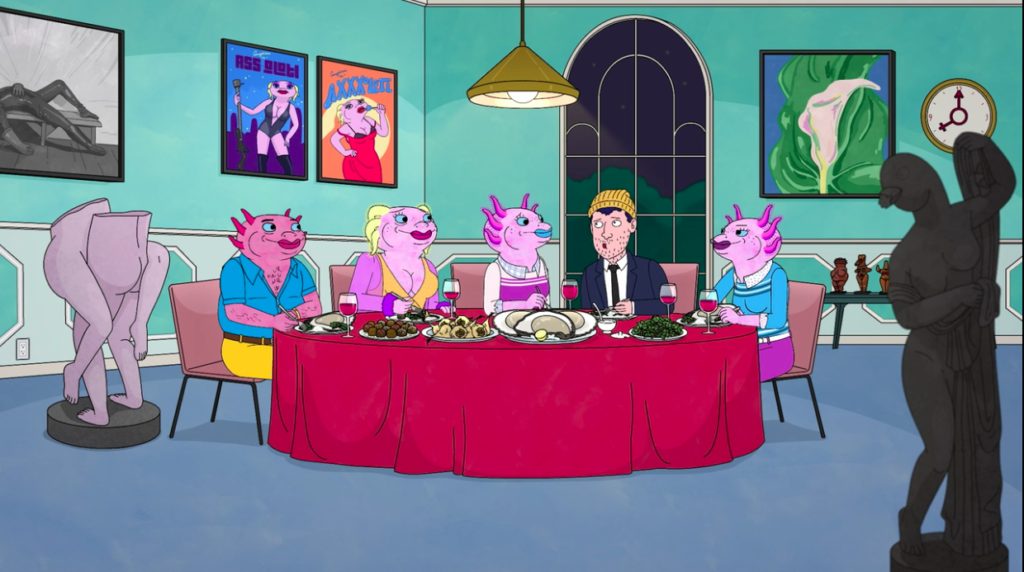



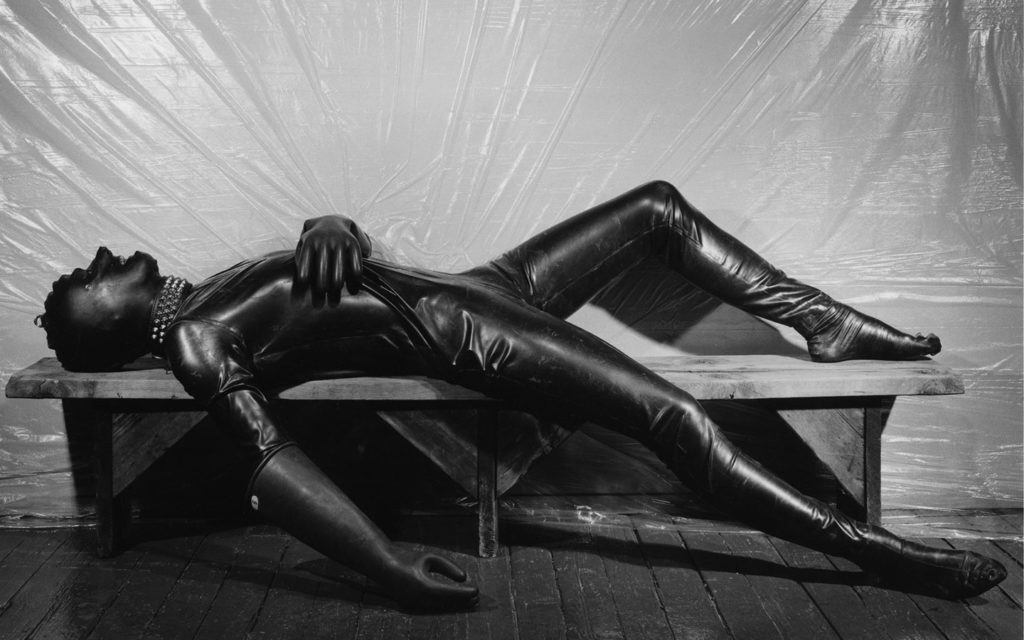



In the same living room of the same sex-obsessed parents, there is also a Mapplethorpe photograph originally entitled Joe/Rubberman. This famous American photographer immortalized the New York gay scene of the 1980s. The resulting images are beautifully lit – stark bodies of muscular men (and women). They still provoke and shock. [@Stephenspower thank you for spotting :)]
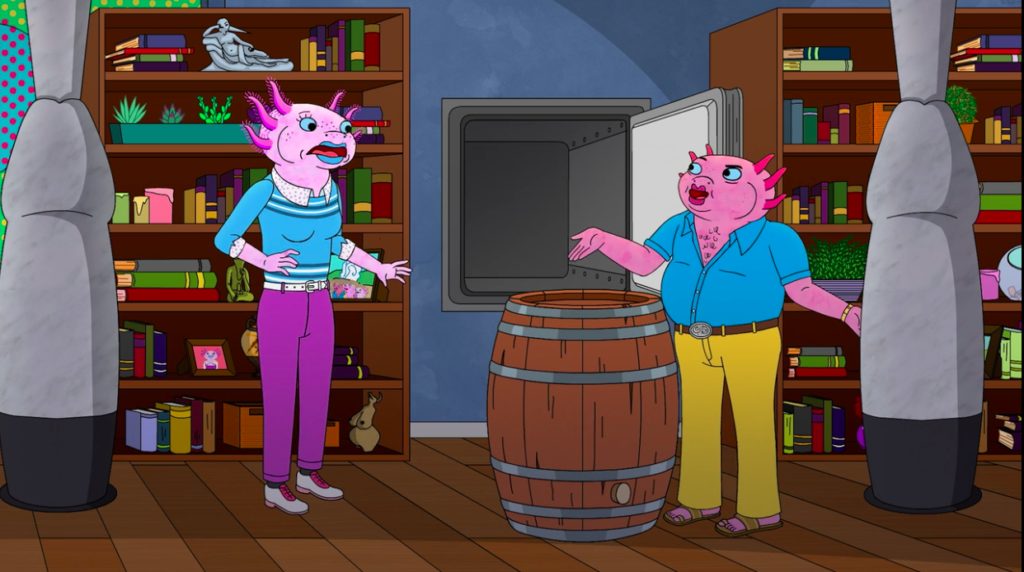
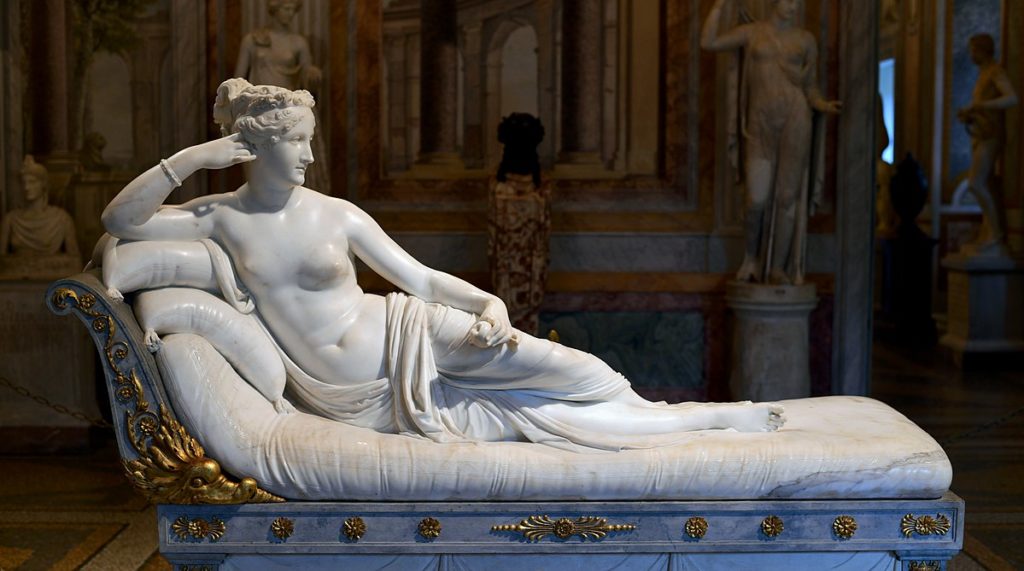
Pauline Bonaparte as Venus Victrix (or Venus Victorious) is a semi-nude, life-sized, reclining, Neoclassical portrait sculpture by the Italian sculptor Antonio Canova. Reviving the ancient Roman artistic tradition of portraying mortals in the guise of the gods, he was commissioned by Pauline Bonaparte’s husband, Camillo Borghese, to execute this beautiful female form reclining on a couch in Rome from 1805 to 1808, after the subject’s marriage into the Borghese family. Canova was first instructed to depict Pauline Bonaparte fully clothed as the chaste goddess Diana, but Pauline insisted on Venus. She had a reputation for promiscuity and may have enjoyed the controversy of posing naked. In the bookcase in Yolanda’s parent’s house, there is a small figurine that looks like this sculpture.
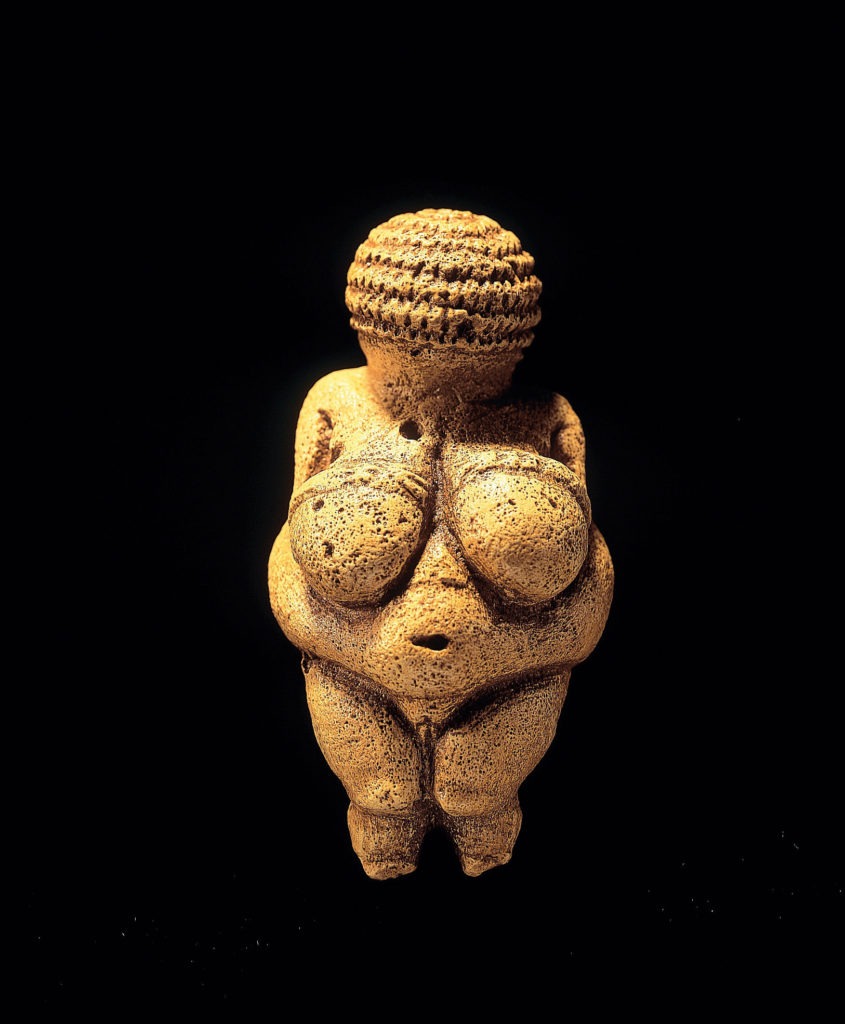
Another interesting artifact on this bookcase is one of the Upper Paleolithic Venus figurines. Created between 35,000–21,000 BCE, most of them have small heads, wide hips, and legs that taper to a point. Various figurines have exaggerated abdomen, hips, breasts, thighs, or vulva (or all of them). Their meaning remains unknown. They have been seen as religious figures, as erotic art, as sex aids, or as self-depictions by female artists. The most famous one is Venus of Willendorf. In the case of Buenaventura’s house, you know what it represents.




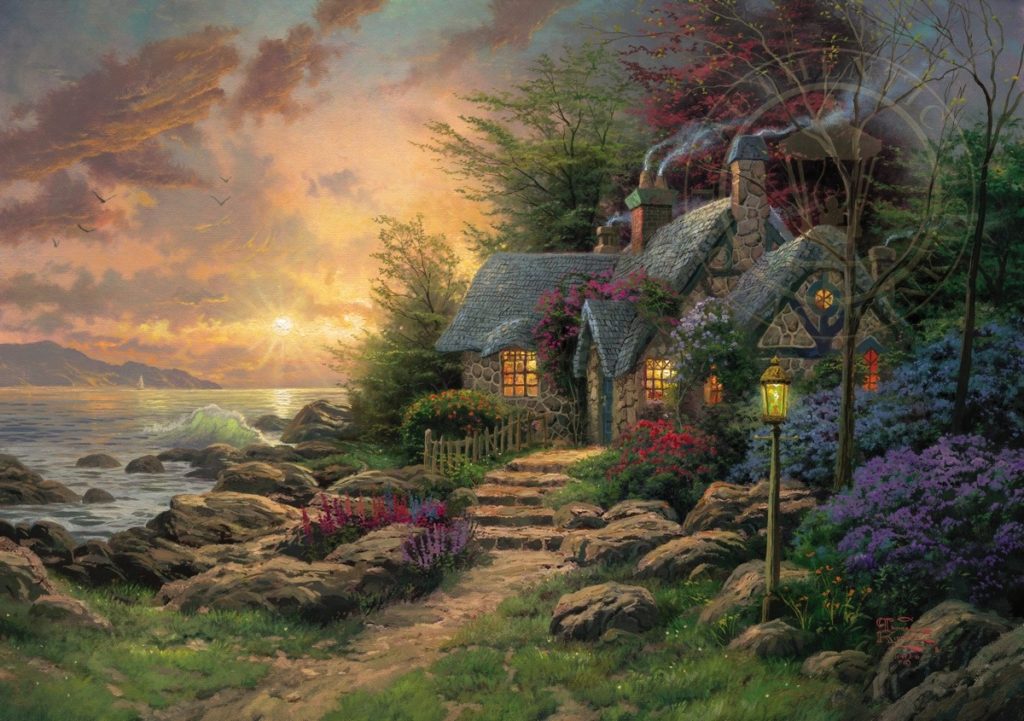
In the house Princess Caroline lived as a teen, on the wall of the poor living room, there is a piece by Thomas Kinkade. Kinkade was an American painter of popular, realistic, pastoral, and idyllic subjects. He is notable for the mass marketing of his work as printed reproductions and other licensed products via the Thomas Kinkade Company. According to Kinkade’s company, 1 in every 20 American homes owns a copy of one of his paintings. [@JamesTough9 thank you for this 🙂]
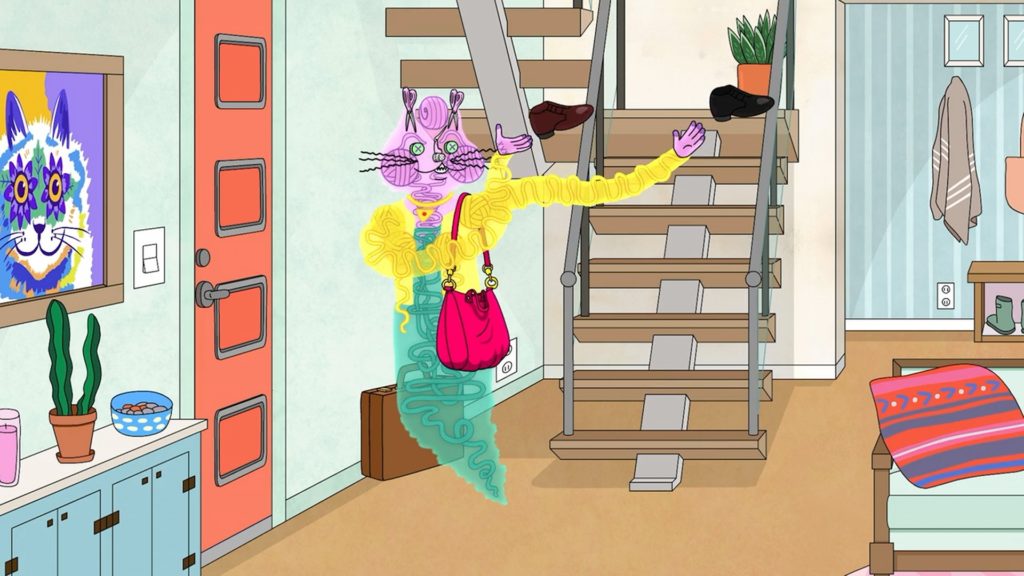

Louis Wain was an English artist best known for his drawings which consistently featured anthropomorphized, large-eyed cats and kittens. In his later years, he may have suffered from schizophrenia (although this claim is disputed among specialists). According to some psychiatrists, this can be seen in his works. One of his works hangs on Princess Caroline’s wall, or rather on the imagined wall of Princess Caroline’s imaginary apartment in the story told by Princess Caroline’s therapist. Oof. It works for me in the context of Wain’s possible insanity. [Tadeusz Nowakowski, thank you for spotting :)]
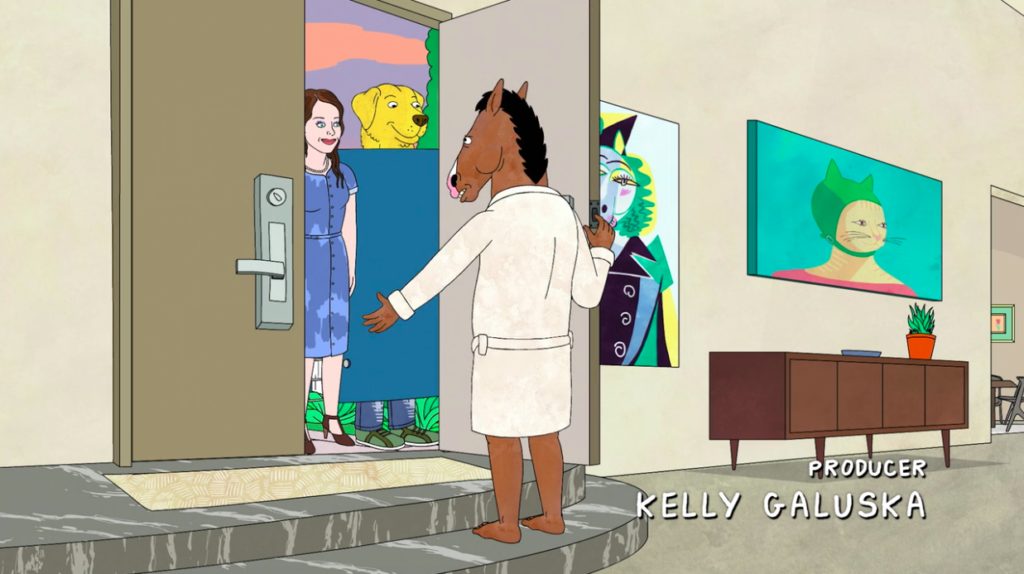
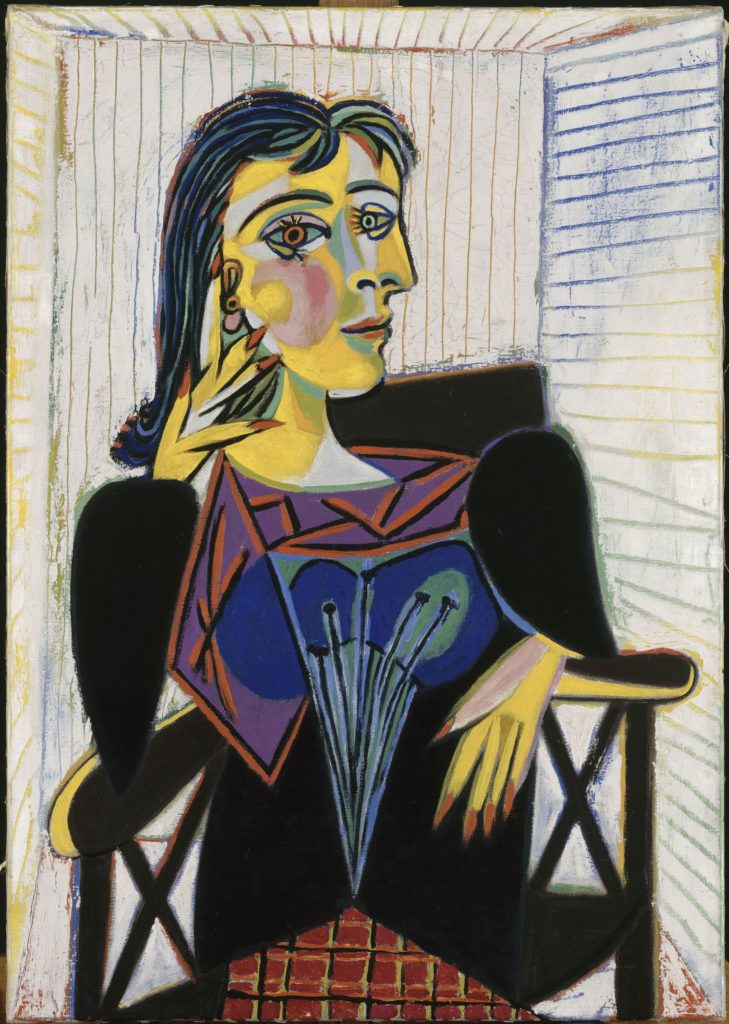
In the Halloween episode of the series, we see two historic decors of BoJack’s mansion. The one from 1993 has Keith Haring’s works on the wall, which we have already discussed in this article. The decor from 2004 includes a Pablo Picasso -like female horse portrait, reminding one of his portraits of Dora Maar. In the original, Maar is majestically seated in an armchair, smiling and resting her head on a long-fingered hand. Her face is shown in a combined frontal and profile view. For many people, these deformations are the very hallmark of Picasso’s art. This is absolute proof that BoJack always had a good eye for art – or at least for some deformed portraits of mares–- oh, maybe that’s a pun? Dora Maar – Dora Mare?
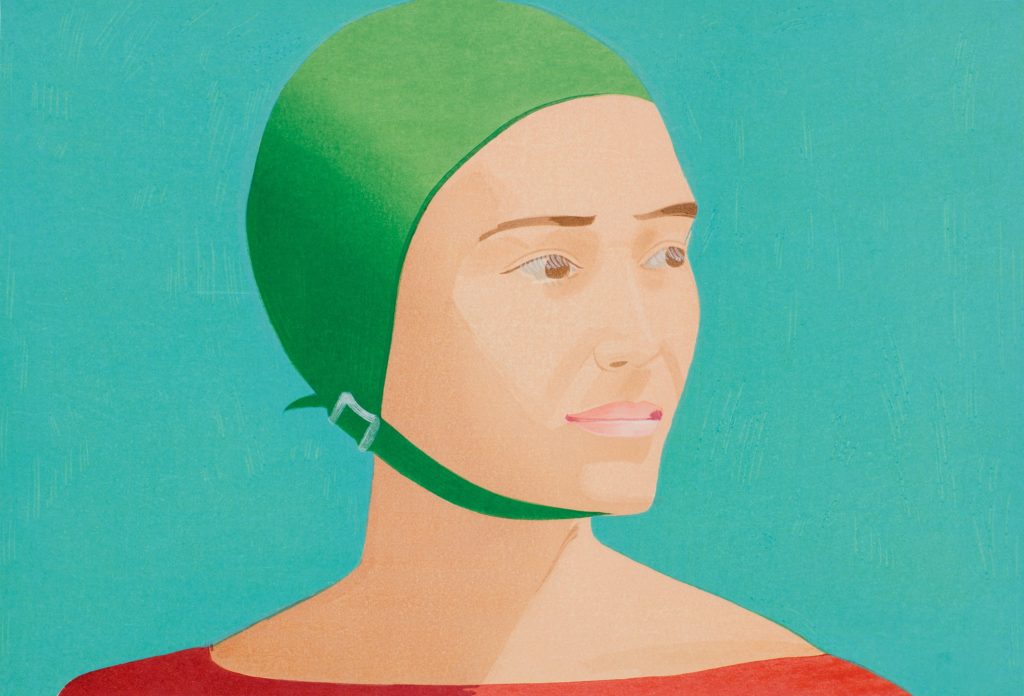
Next to Picasso’s portrait, there is Alex Katz’s The Green Cap. Alex Katz is an American figurative artist known for his paintings, sculptures, and prints. His art is a dialogue between realism and more abstract tendencies in modernism with contributions from both Pop Art and Contemporary Art, as you can see, yourself, here. Again we have another pun here. The painting on BoJack’s wall presents a cat in a green cap. And you know, Katze, means cat in German. Mind-blowing, isn’t it?
All good things must come to an end, including the BoJack Horseman series. Let’s jump to the final, sixth season (luckily, it’s also full of artsy references). In BoJack’s room, in the exclusive “Pastiches” rehab center in Malibu, we can see a very van Gogh-like self-portrait of a goat. What is important is that the original painting may have been van Gogh’s last portrait, painted a couple of weeks before his mysterious death. The weird restless ornament of the blue background, recalling the work of mentally ill patients, is evidence for some physicians that the painting was done in a psychotic state.
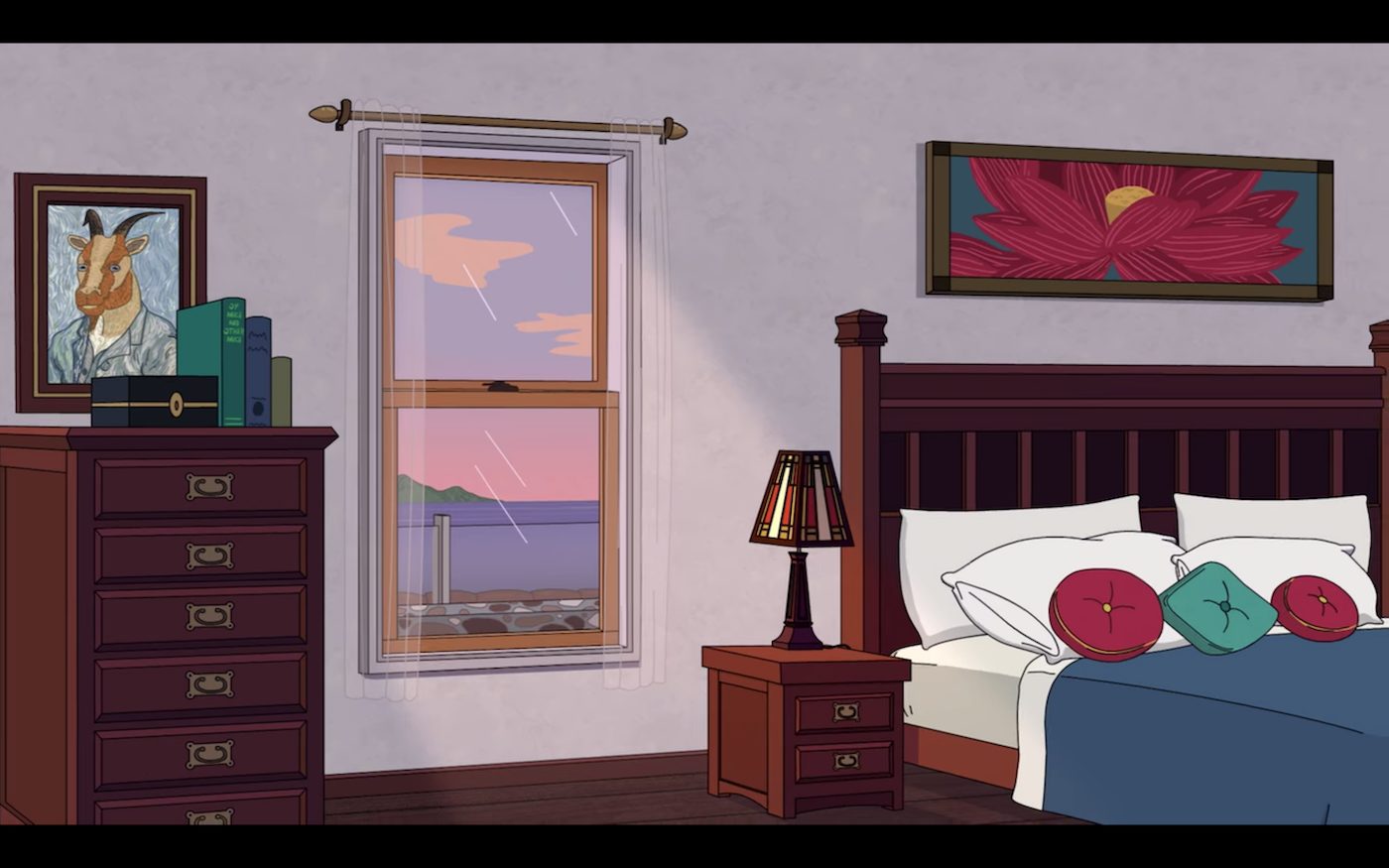



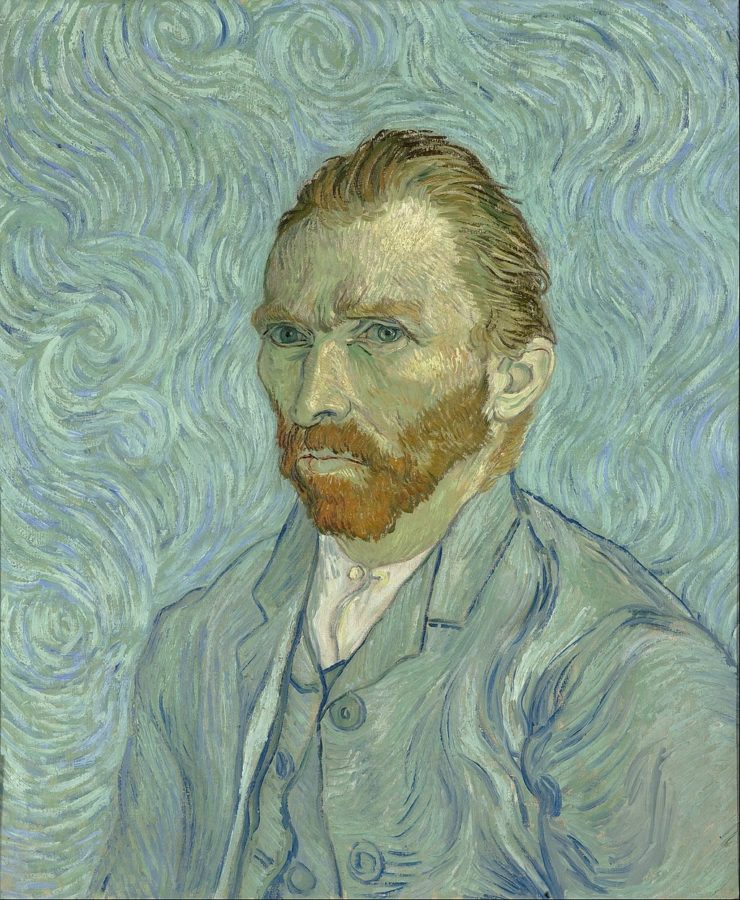



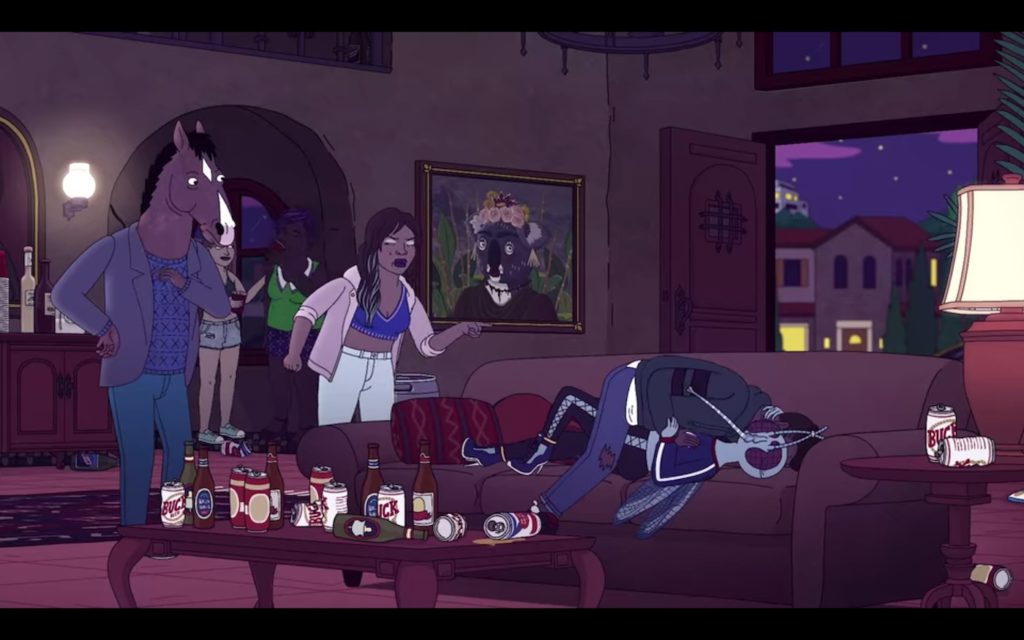



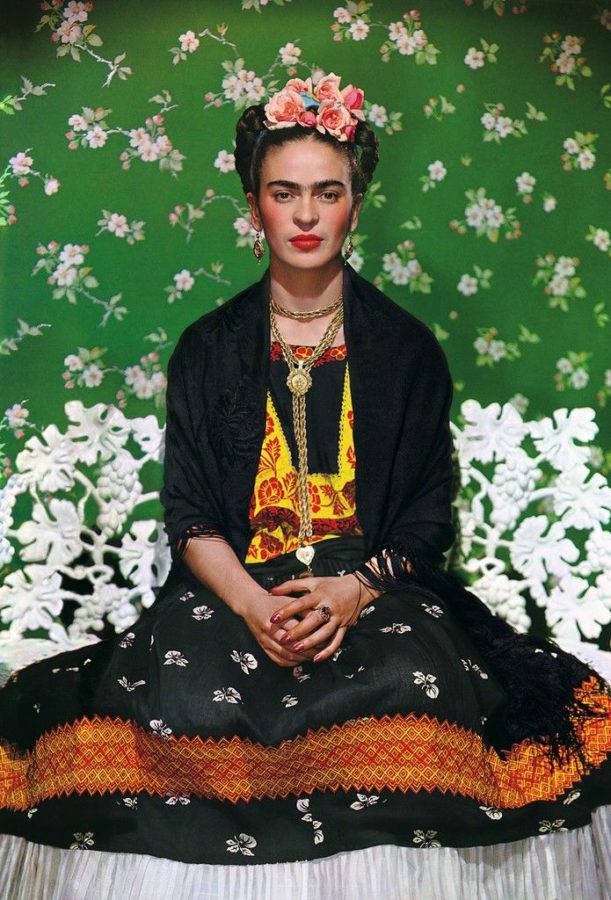
At Jameson H.’s (BoJack’s friend from the rehab) boyfriend’s house, we see a Frida Kahlo -like painting hanging in the living room. One of Frida’s iconic portraits originally was not a painting, but a photo. It was taken by Nickolas Muray, her longtime friend, and lover. Their affair started in 1931 after Muray divorced his second wife and shortly after Kahlo’s marriage to Mexican muralist painter Diego Rivera. It outlived Muray’s third marriage and Kahlo’s divorce and remarriage to Rivera by one year, ending in 1941. Muray wanted to marry, but when it became apparent that Kahlo wanted Muray as a lover, not a husband, Muray took his leave for good and married his fourth wife. He and Kahlo remained good friends until her death in 1954.

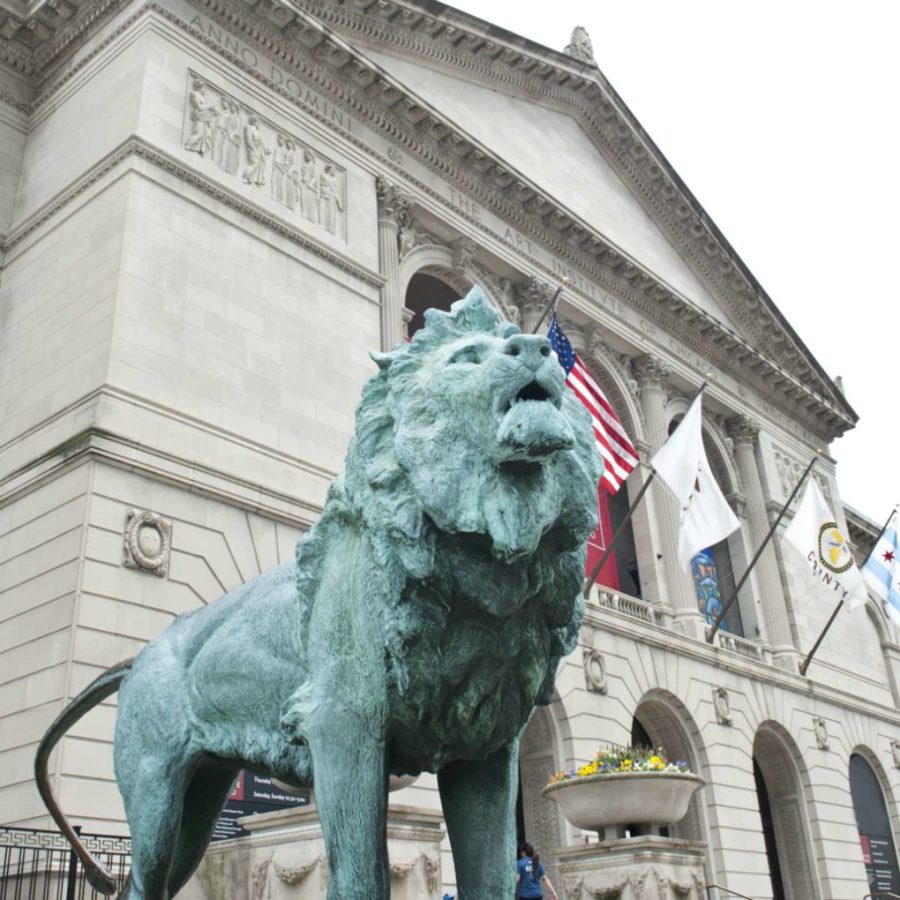
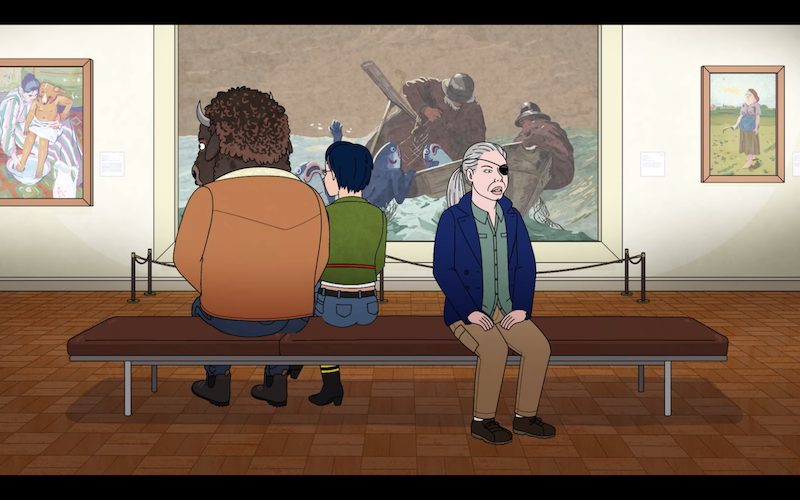



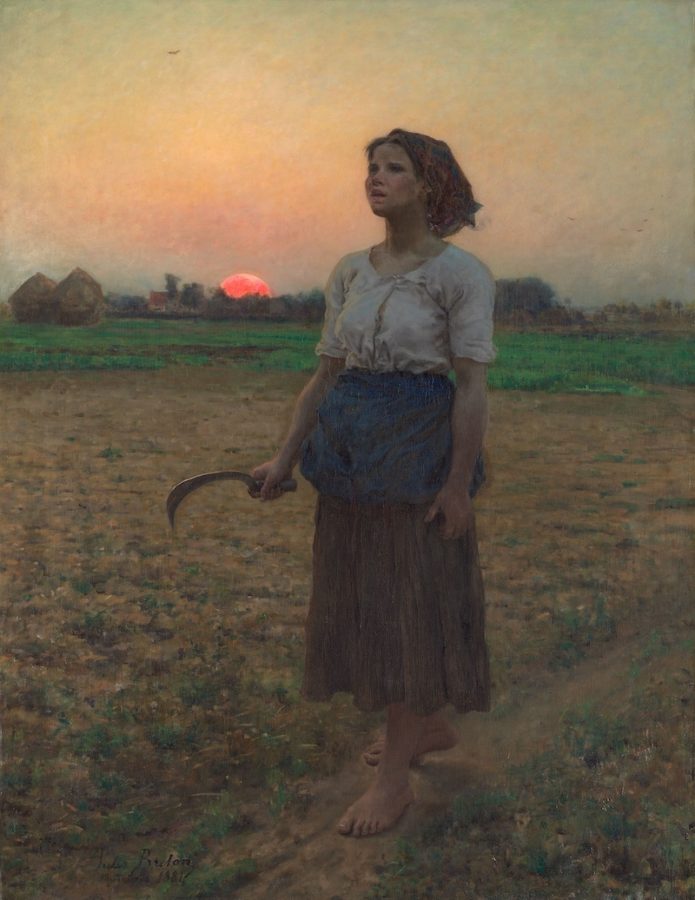



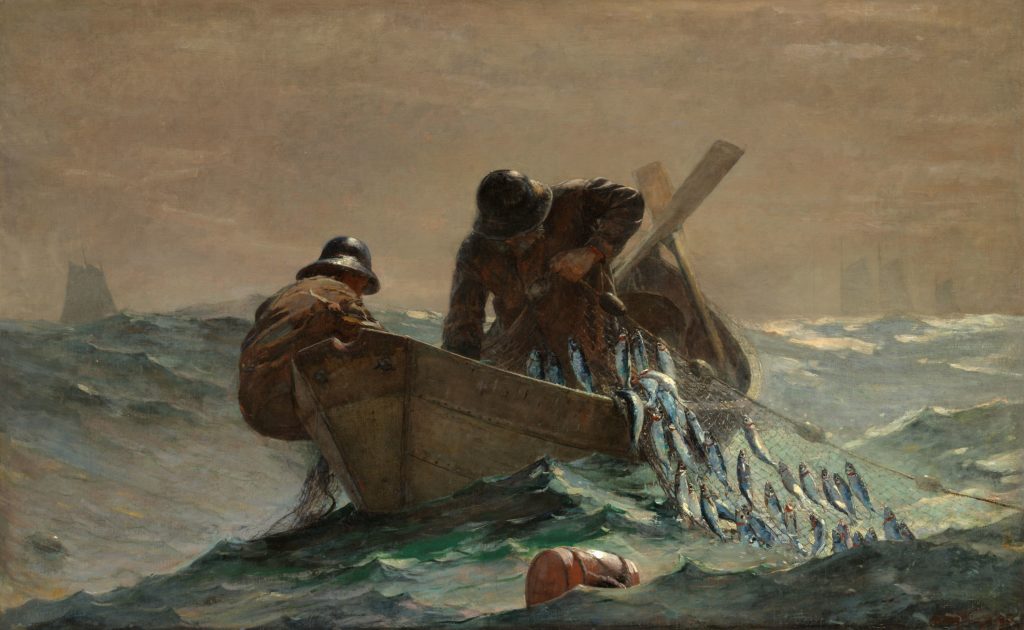
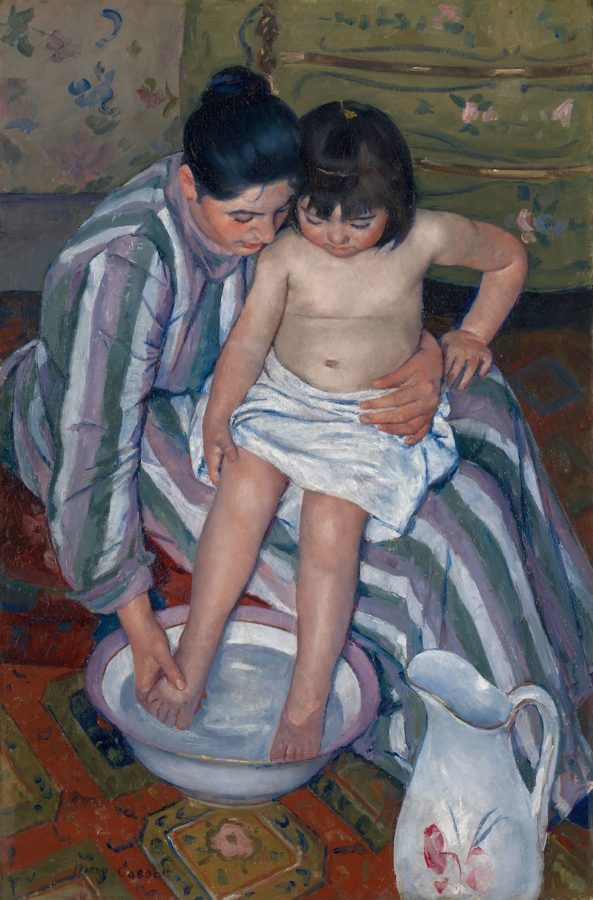
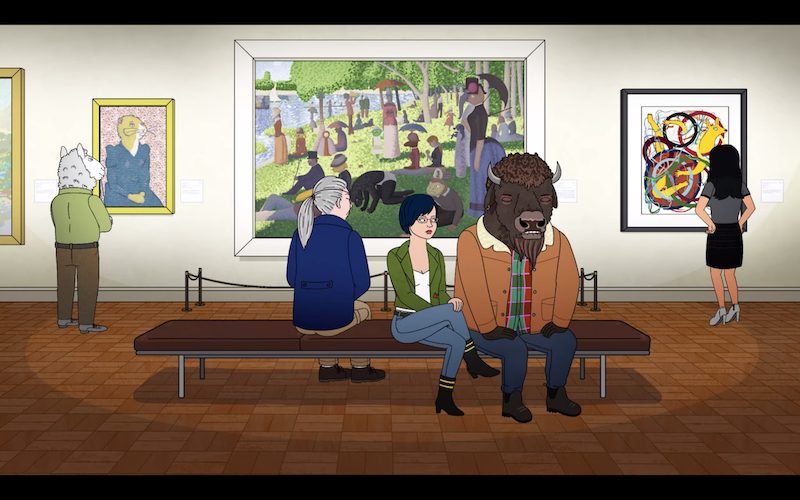

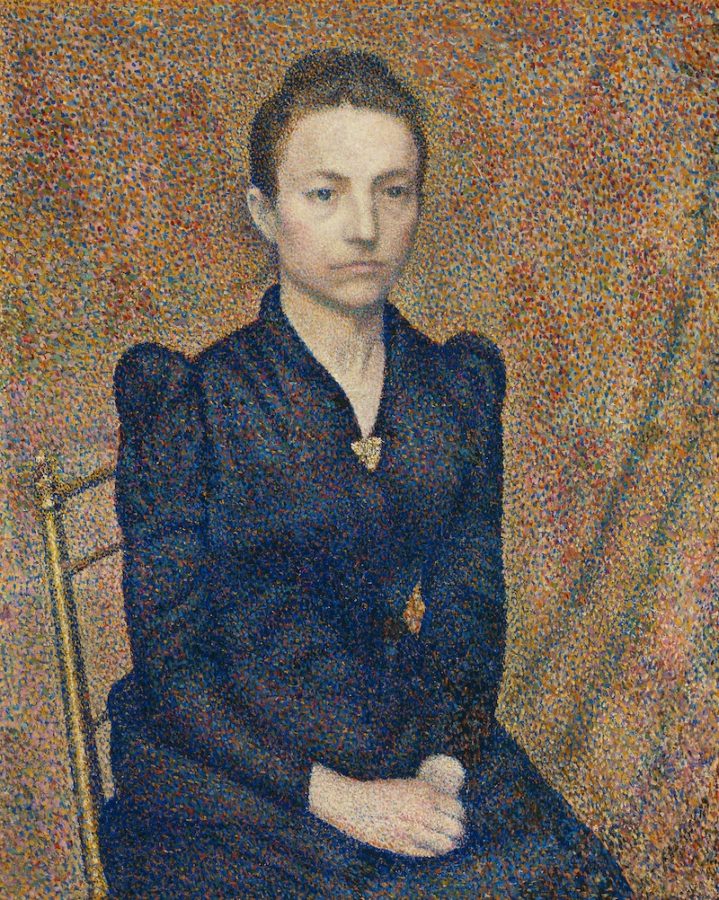



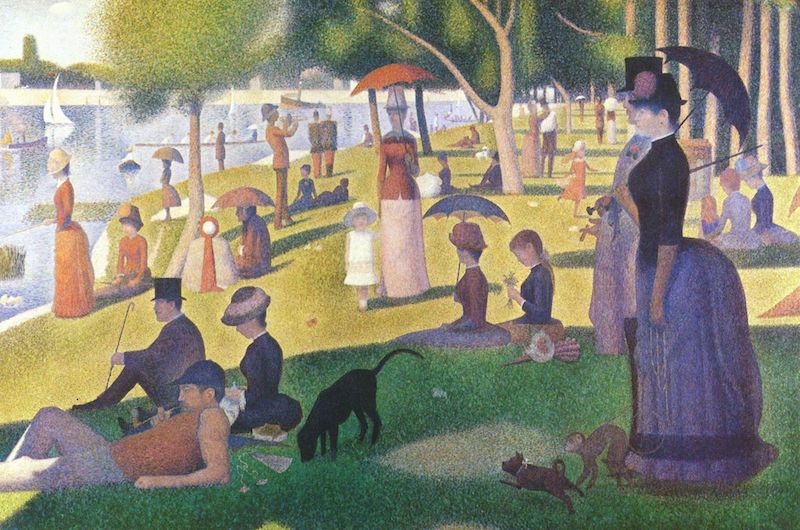
Here is a true museum cameo! In the third episode of the last season, Diane with her cameraman Guy, visit the Art Institute of Chicago. There, in front of the classic masterpieces from the museum’s collection, they talk discreetly to Isabel, a reporter from the Tribune, who devoted her life to hunting down the Whitewhale corporation. In the scenes, we see the front of the museum with the Lion created in 1893 by Edward Kemeys, an essentially self-taught artist and the US’s first great animalier (sculptor of animals).
Inside the museum, we see some of the museum’s biggest hits: legendary pointillist Seurat’s Sunday on La Grand Jatte, The Child’s Bath by famous female impressionist, Mary Cassatt, and the Herring Net (look at the fish!) by Winslow Homer. Meanwhile, other lesser-known works seen are Portrait of the Artist’s Sister by Georges Lemmen, The Song of the Lark by Jules Breton, and a contemporary piece, Untitled by Tanaka Atsuko.
Of course, the arrangement of these paintings is fictional, in the real life these paintings do not hang together. But who cares?
When all of the assistants across Hollywoo leave their respective jobs, go on strike, and unionize, at some point, they get into negotiations with Lenny Turteltaub and Princess Carolyn. On the wall, we see a turtle version of Revolt in Cairo on 21 October 1798 by Anne-Louis Girodet de Roussy-Trioson. The painting depicts the historical event from the Napoleonic conquest of Egypt when the people of Cairo revolted against the French. It was a bloodbath, and by the end 5,000 to 6,000 Cairenes were dead or wounded. The painting could show the real character of Lenny, don’t you think?
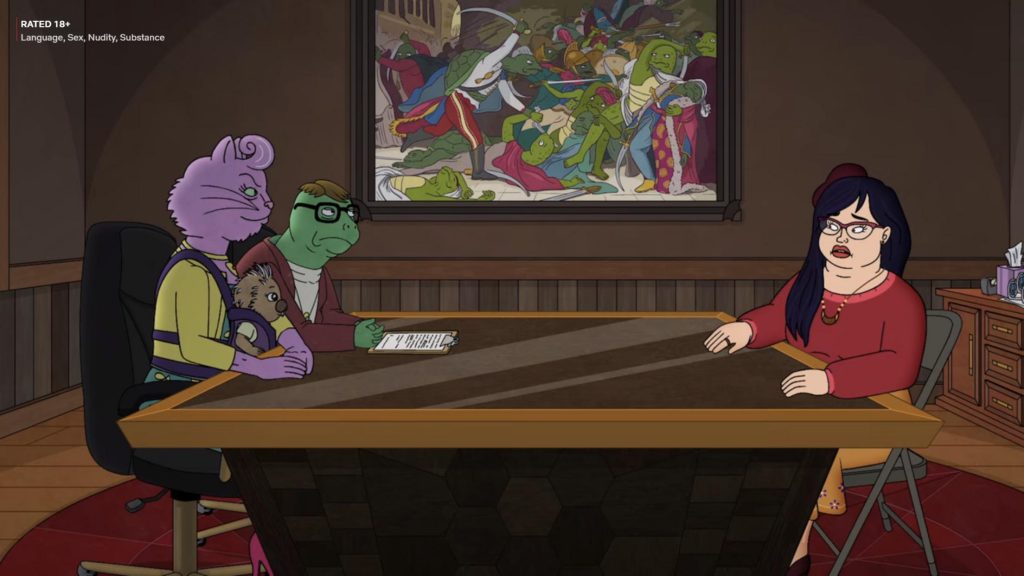



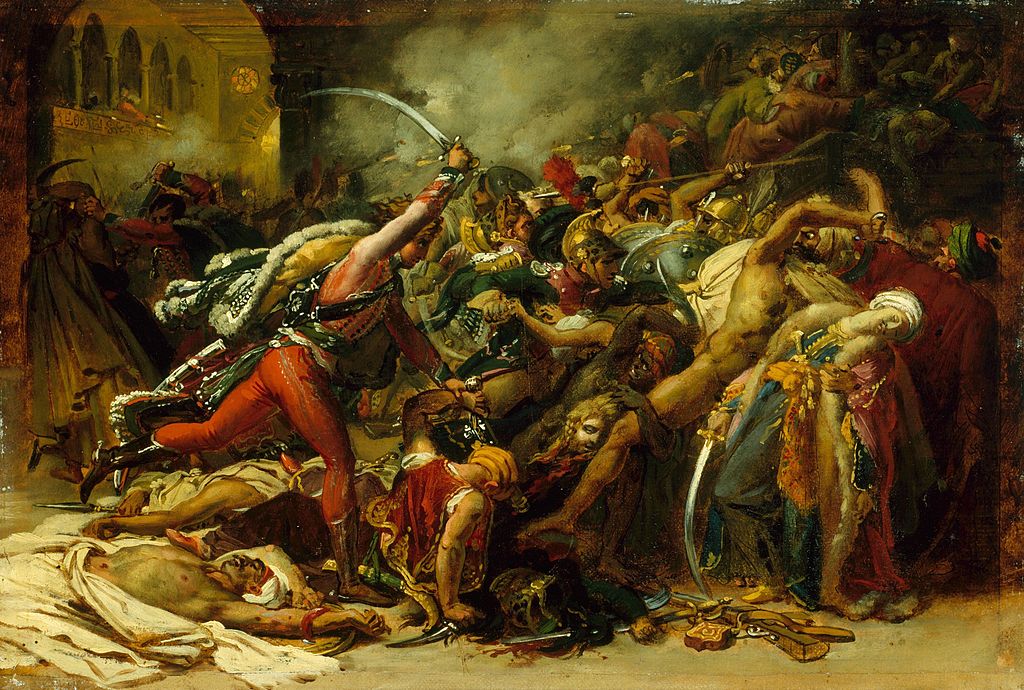
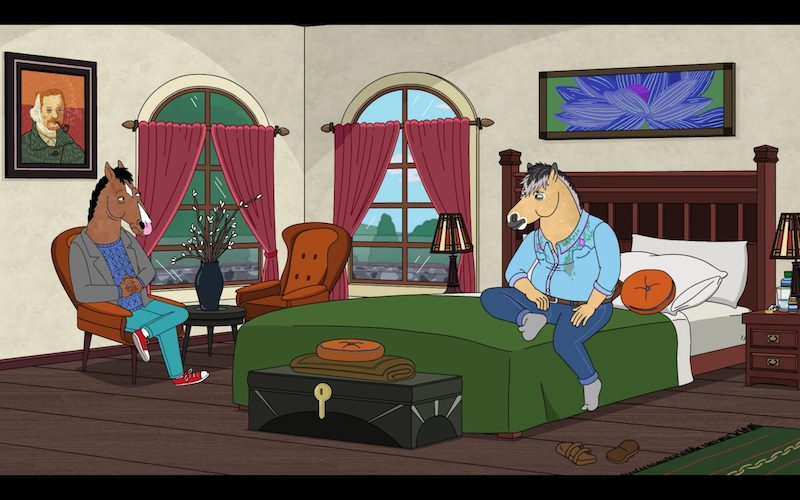
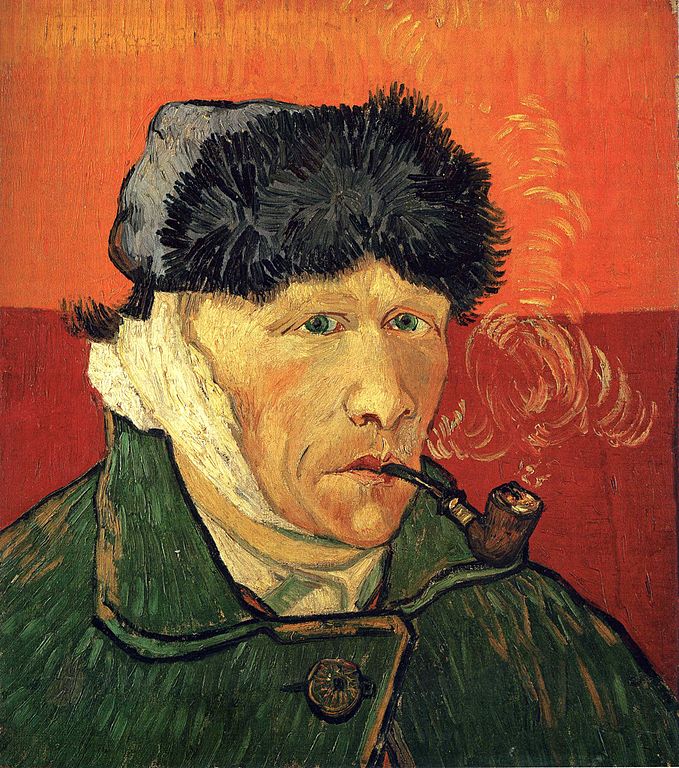
At another rehab clinic in Malibu, Partridges, the rooms for the patients look quite similar to the ones in Pastiches. It has the same interior design except for one detail, on the wall we see another van Gogh self-portrait, this time the one with the bandaged ear. Van Gogh cut off his ear after having a quarrel with Paul Gauguin. He severed an artery in his neck, and was in grave condition after losing so much blood. He was admitted to hospital and he confessed to having no recollection of what happened during this fit. Throughout his life, Van Gogh continued to suffer from similar episodes, sometimes characterized by acute paranoia.
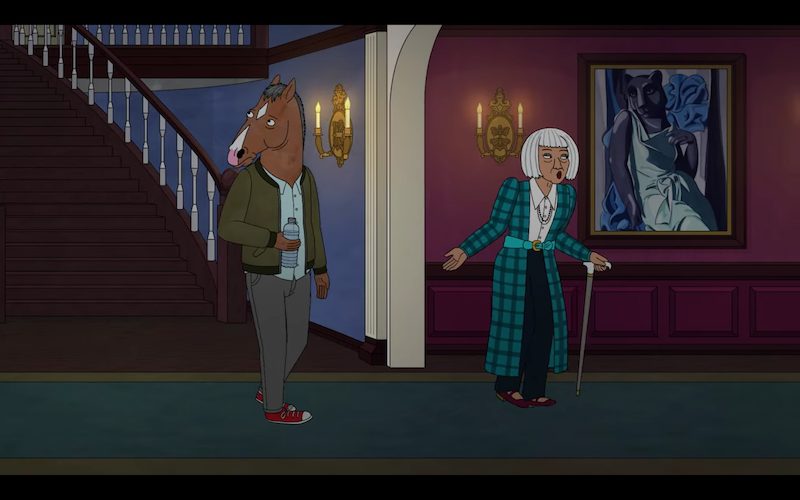



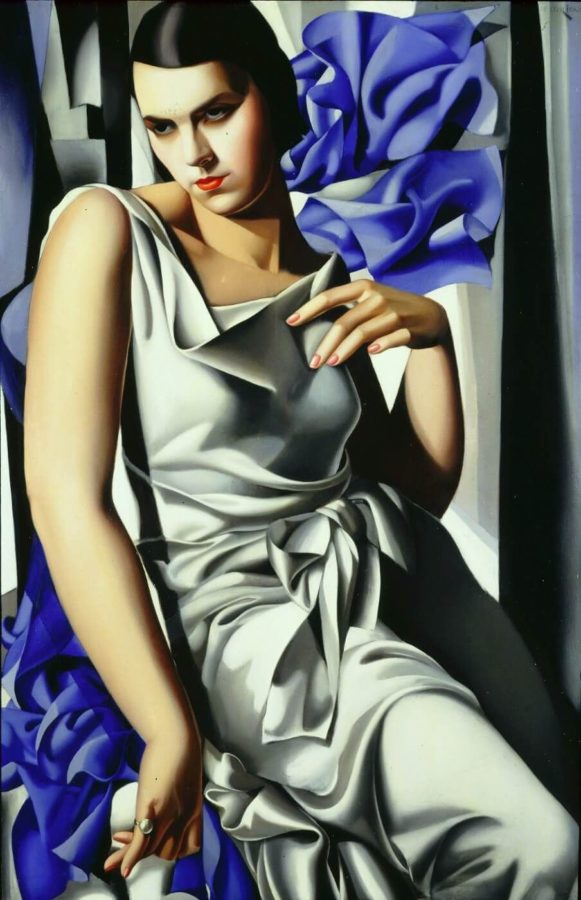
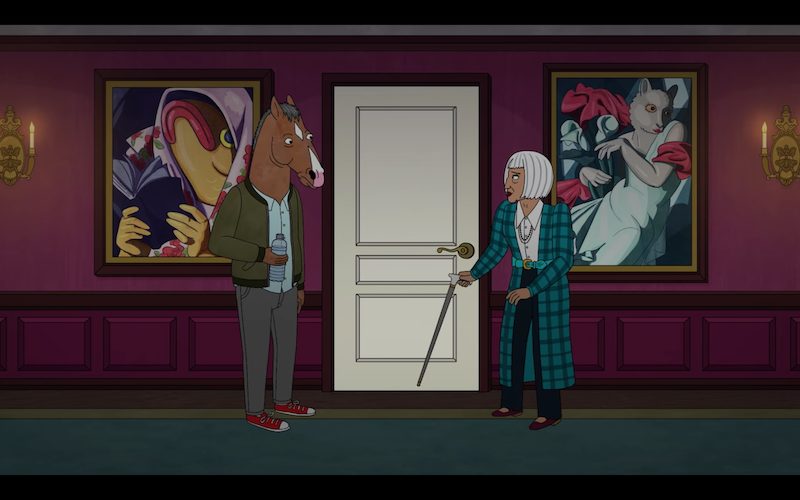
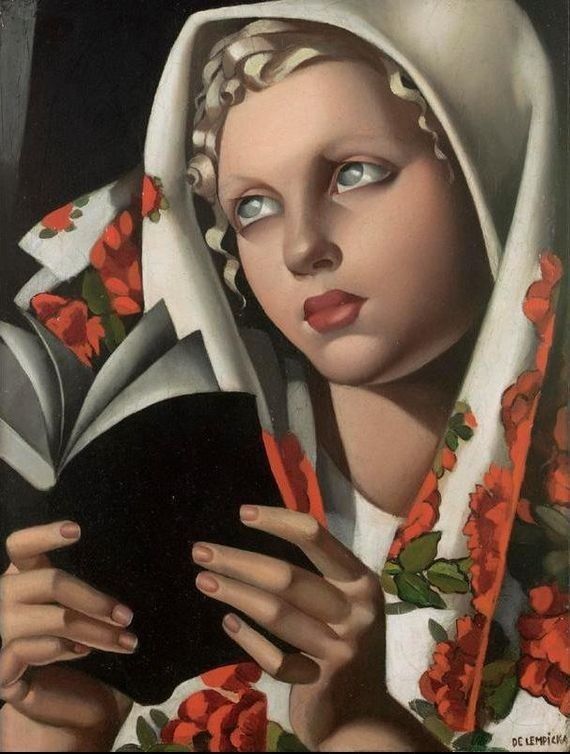
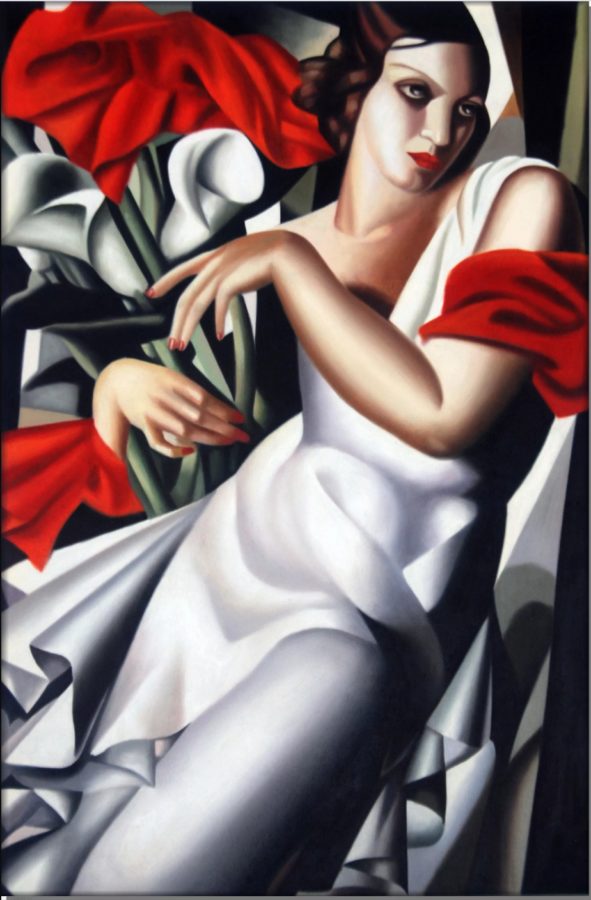
In the 14th episode, BoJack visits Angela Diaz who was a chief executive producer of Horsin’ Around. Angela is rich and posh. On the walls of her hall, we can see paintings inspired by Tamara Lempicka’s works. Lempicka is best known for her polished Art Deco portraits of aristocrats and the wealthy and for her highly stylized nudes. Famous for her libido, Lempicka was bisexual, thus her affairs with both men and women were considered scandalous at the time. She often used formal and narrative elements in her portraits, and her nude studies included themes of desire and seduction. It Matches Diaz’s vibe!
That is it. The show is over. Without spoilers, in the very last episode of BoJack Horseman, don’t miss the dialogue about the meaning and purpose of art. That discourse is important and still, nobody knows the true answer.
If you have spotted any reference to art that we missed in this article (that fat Buddha statue in the studio from the fifth season, looking like an AliExpress plastic nightmare doesn’t count) – please write about it in the comments below! 🙂
DailyArt Magazine needs your support. Every contribution, however big or small, is very valuable for our future. Thanks to it, we will be able to sustain and grow the Magazine. Thank you for your help!